July 5, 2020
Martha O'Kennon

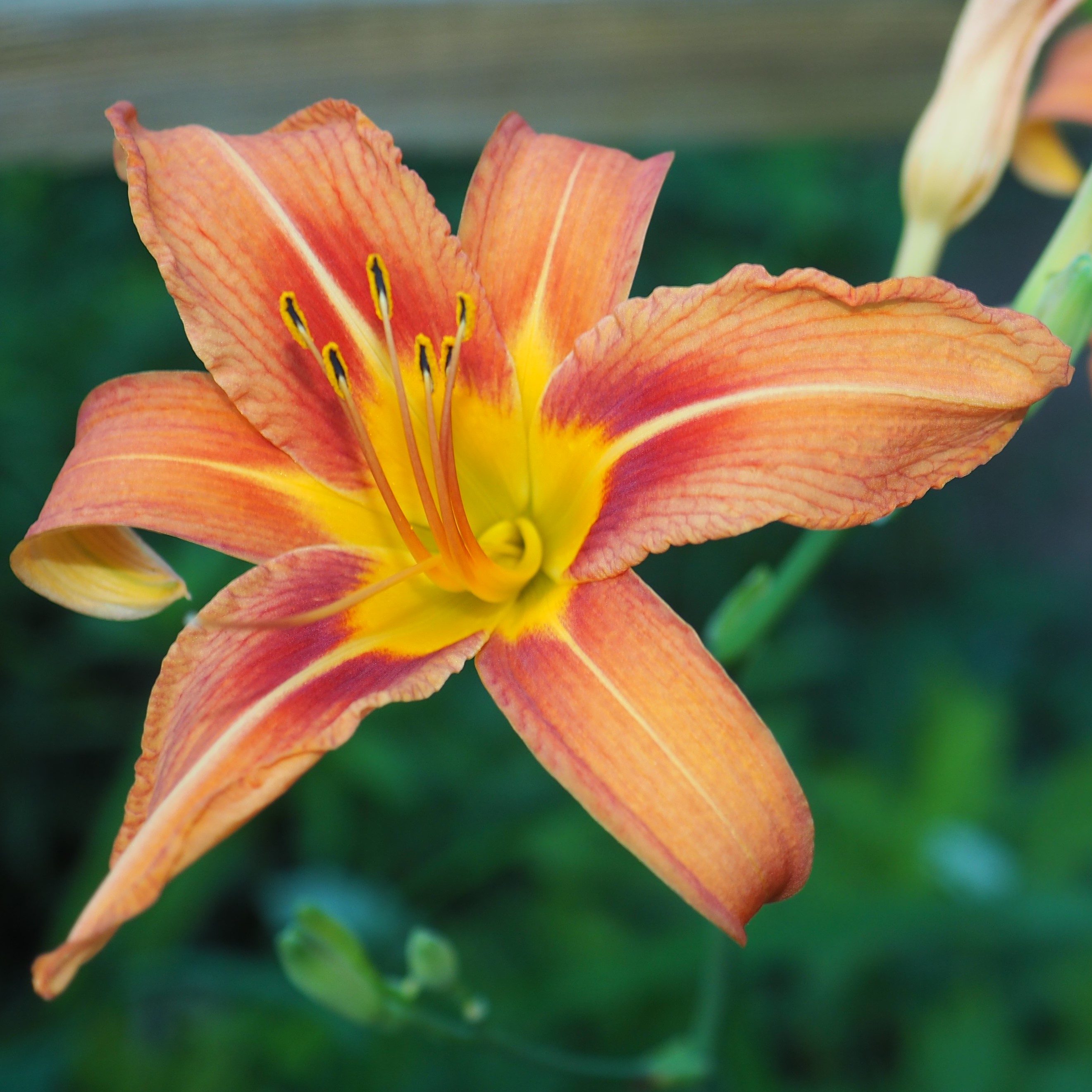
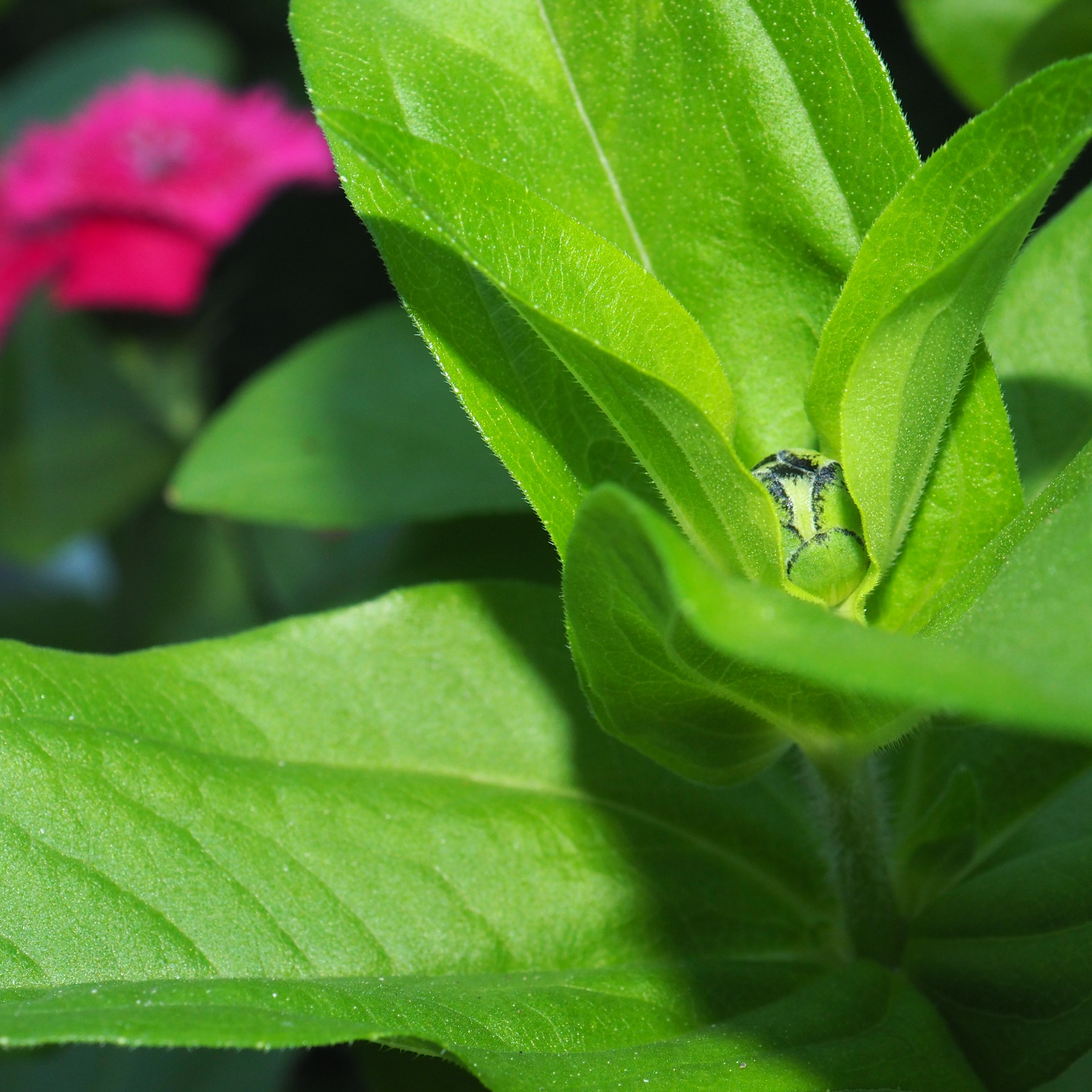
Hot has been the word of the week. Several days we had 95F or 35C. Wow. I'd forgotten the formula but since the slope of the line between (212,100) and (32,0) is (100-0)/(212-32)= 100/180 = 5/9. Oh good, that's where we get the 5/9 in the formula (C-c1)= (5/9)(F- f1) or C-100= 5/9(F-212) or C-0 =(5/9)(F-32). Since we know F was 95, then C= (5/9)(95-32) = (5/9)(63)= (5)(7)=35. Blerry hot in either case. And humid to match! I hope you enjoyed a little bit of math(s) to brighten your day! A couple of the very hot days had an exciting evening downpour. Anyway, with that little bit of watering, the Zinnia seeds that we planted a few weeks ago are now showing buds, and I'm looking forward to finding out what color the first one to bloom will be!
First is the last of the Dame's Rocket flowers. Next is one bloom on the up-and-coming roadside Day Lilies. Third is one of the first buds on the Zinnias that we planted about a month ago.
Remember that there is information in the name of the file for each image. You can see it by mousing over the image - look at the lower left of the screen. Or you can click on the image to get to the (usually) larger image. Then the info is displayed in the address line above. Sometimes the second click will actually display a different view of the original image.
The Ants are charming as ever. First, we always have plenty of the Ants in the Camponotus (Carpenter and Sugar Ants) genus. Then the Small Honey Ant. Third, you remember this little yellow Hairless Rover Ant. Look on to the next paragraph to see it in a new light.
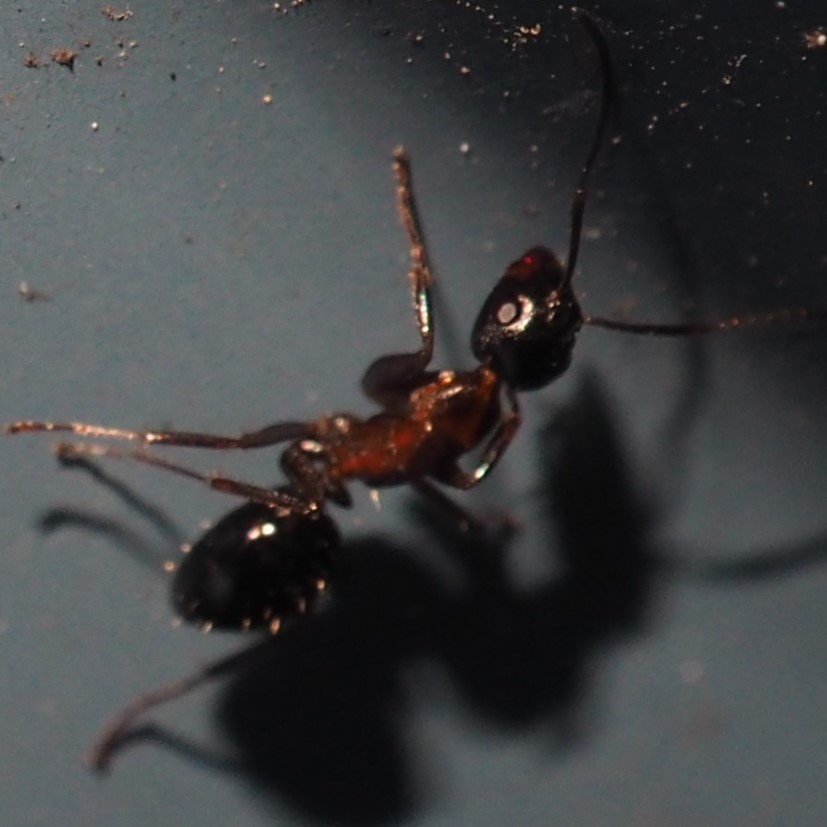
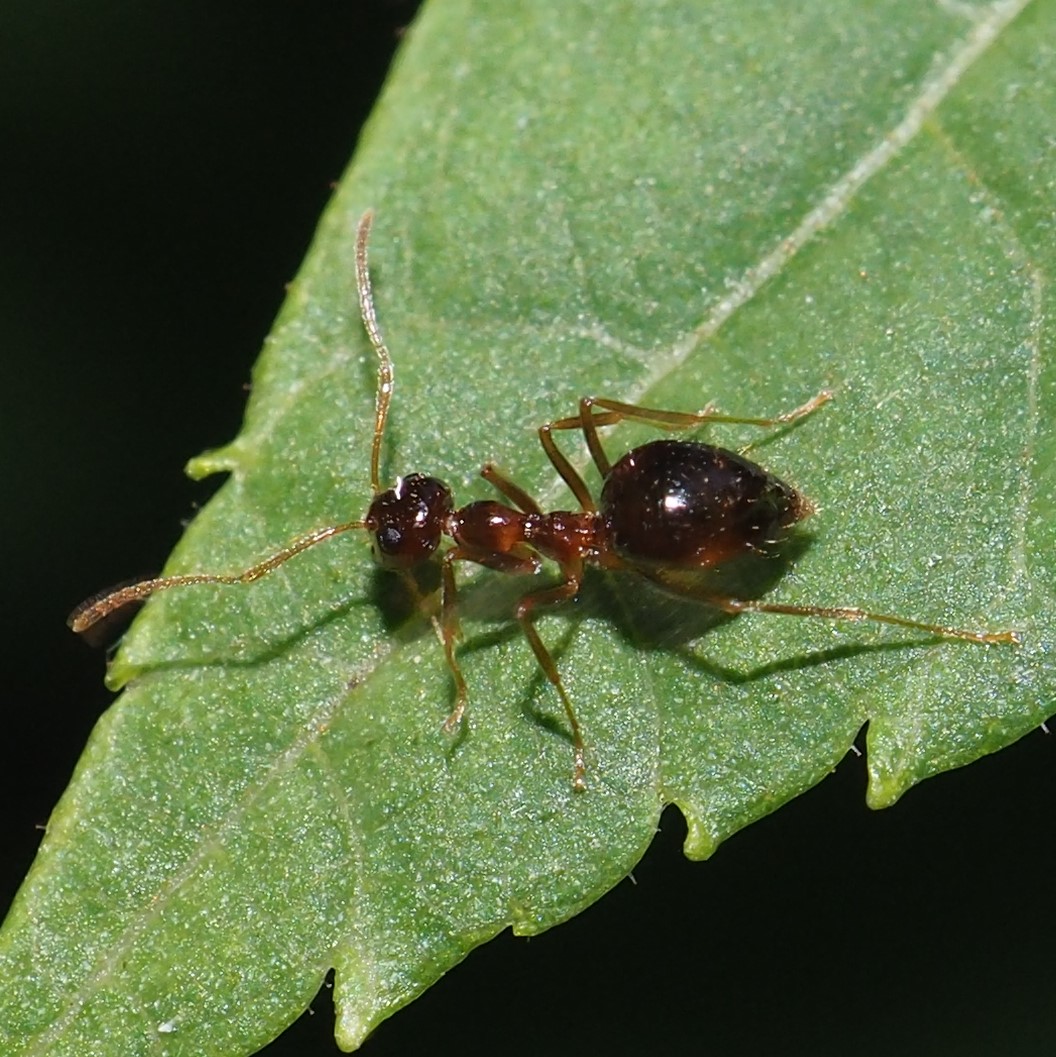
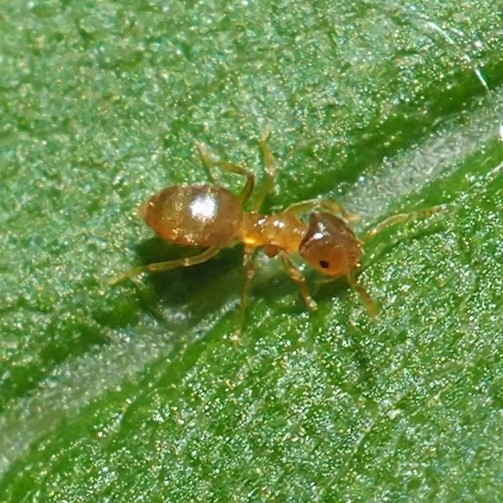
Last week, you saw the Eastern Black Carpenter Ant in an Entylia carinata (Keeled Treehopper) nest managing to elicit a big drop of honeydew from the Mother Hopper. A bit of logistics: every day I haul my folding chair out to the biggest Thistle we've had in some time, and get ready to examine five or six sites where the eggs hatched a week or two back. Well, a couple of days back, guess what was in one of the nests! Yes, one of those Hairless Rovers was going back and forth nudging some of the nymphs. Here it is. I've had a lot of help understanding these tiny (about 1 mm, less than 1/16th inch) yellow ants from Steven Wang (@stevenw12339) of iNat.
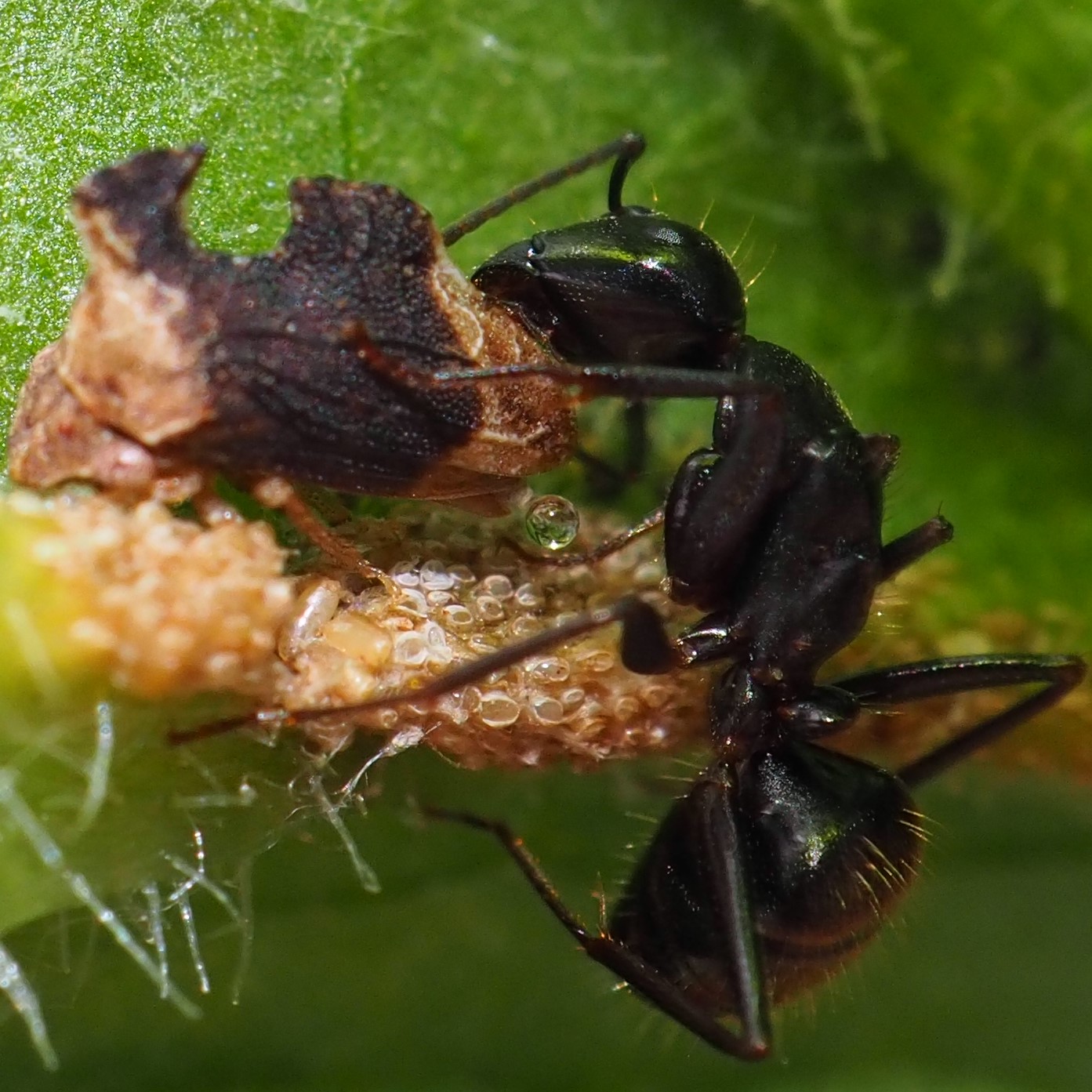
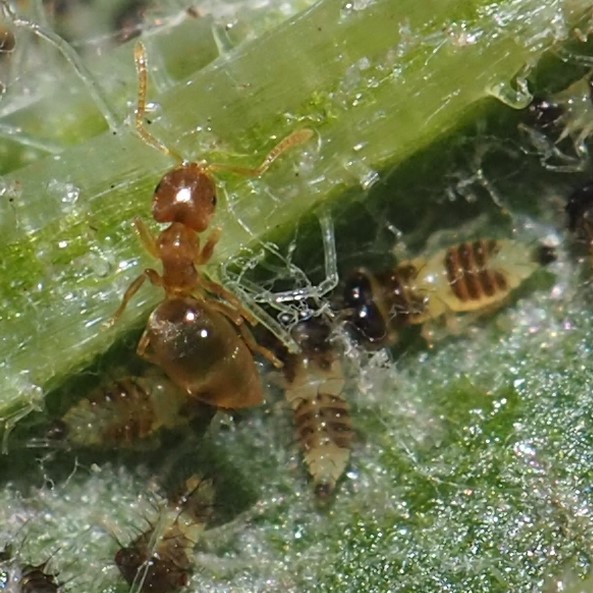
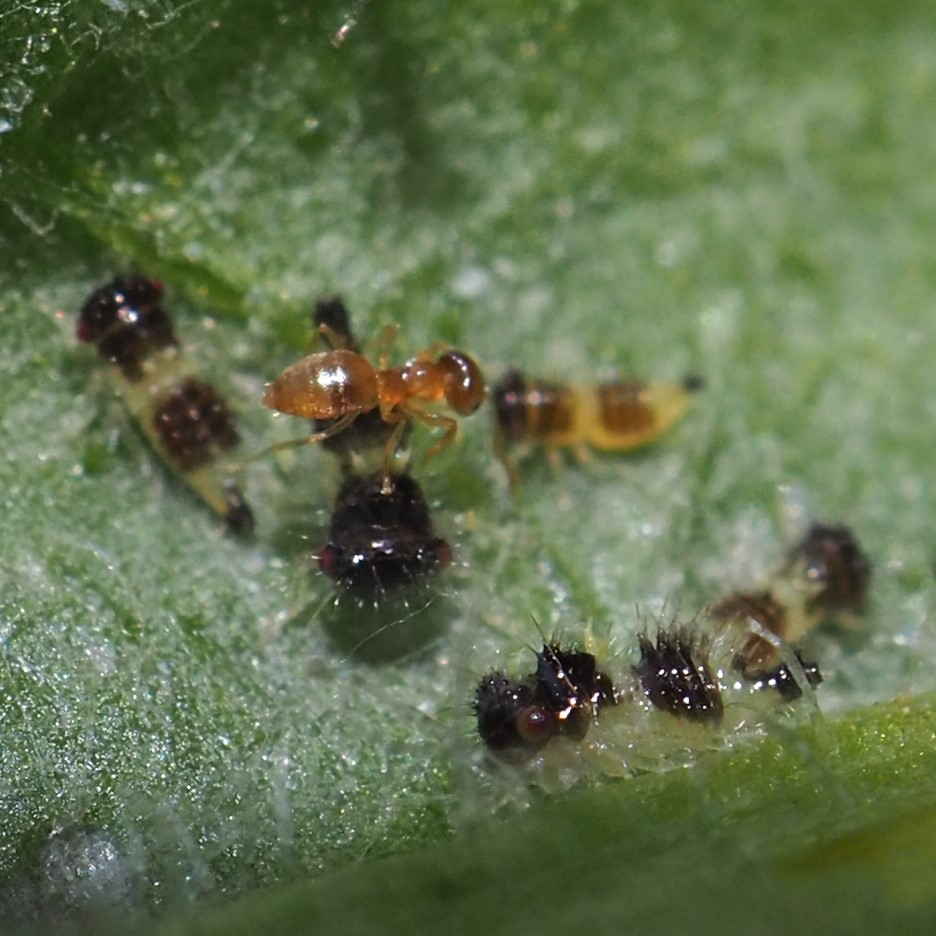
Unlike some years, when I wait and watch patiently for months before I see Aphids in the garden, usually on Goldenrod or Aster. (Those two plants are so closely situated and look so similar in photographs that sometimes I can't tell which I was seeing the Aphids on.) A couple of weeks ago, I started seeing Green Aphids
(picture 1 shows what was to be seen on June 23 and picture 2 shows one that has grown its wings!). Then on June 28th, we saw this funny roundish red-brown Aphid? I don't know what it might be.
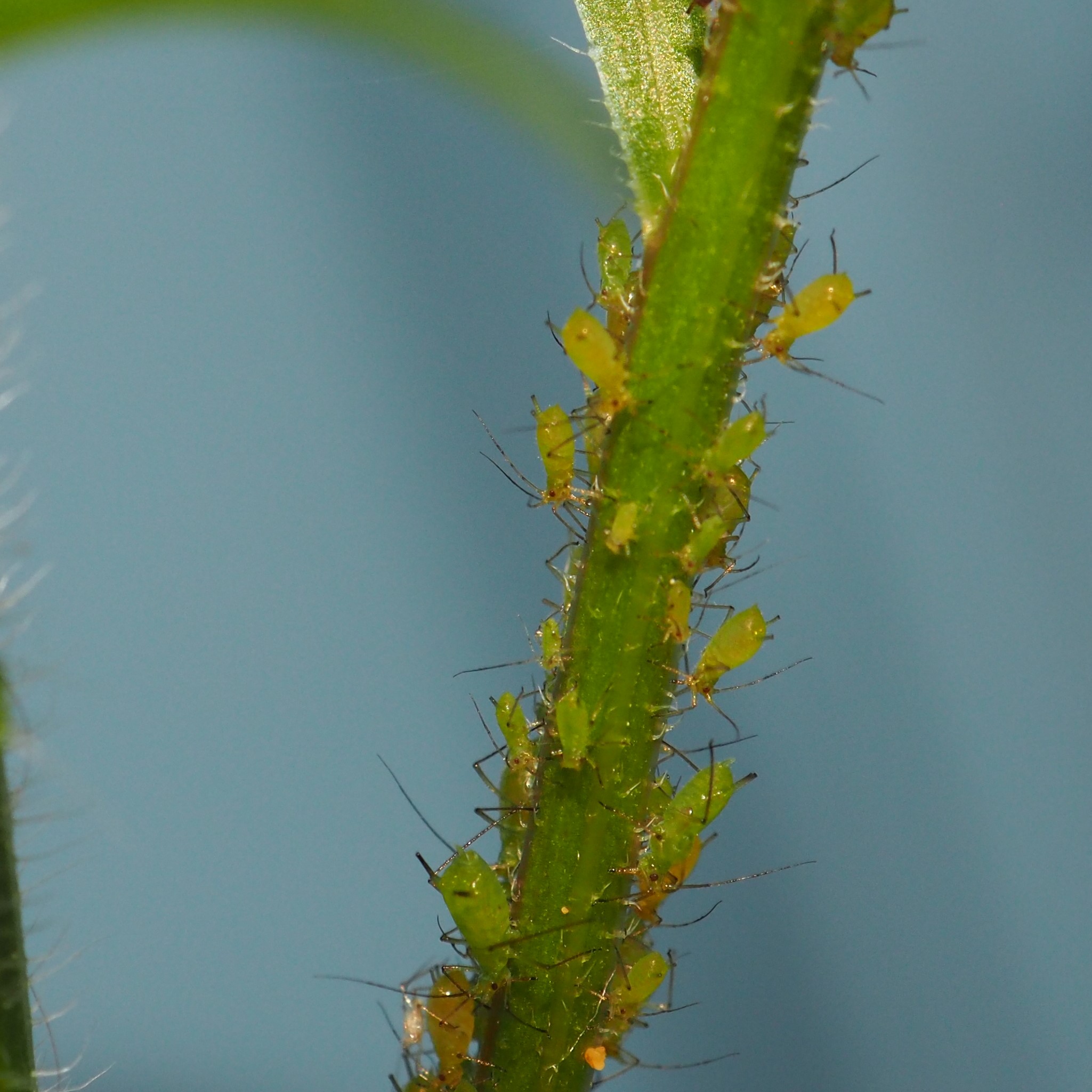
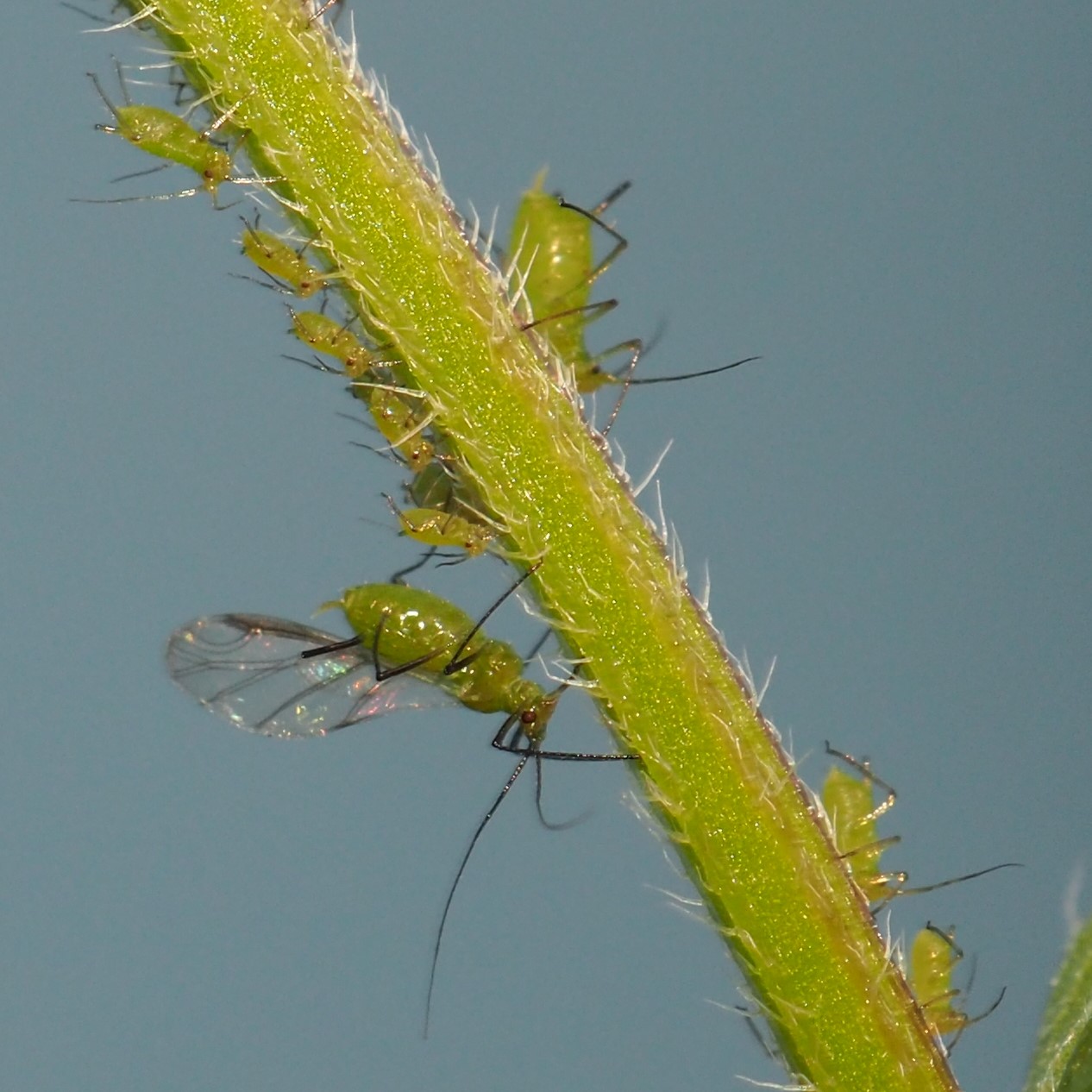
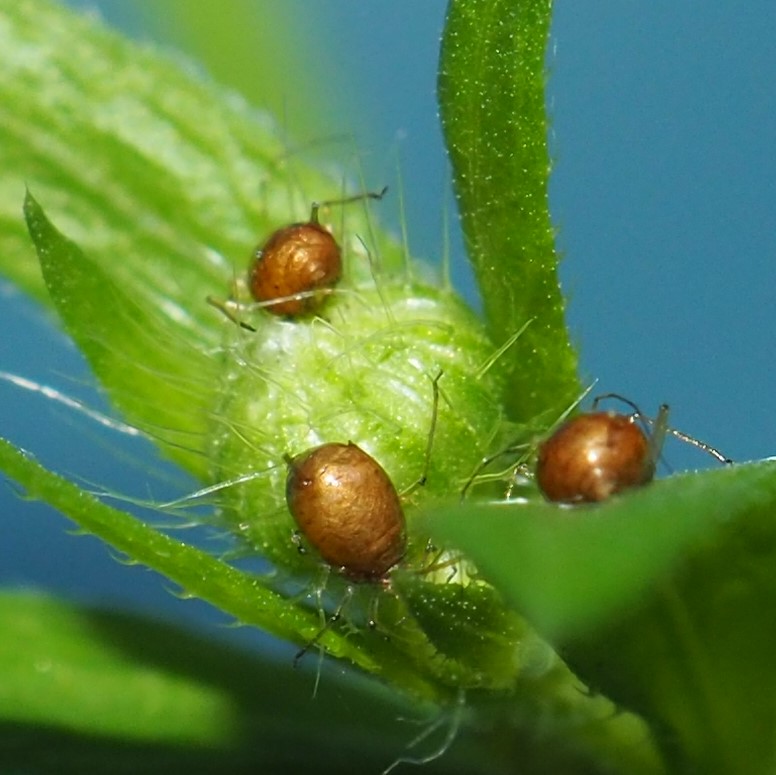
Here is one of the roundish reddish "Aphids" - actually they seem to be cast-off skins of that "aphid") on that same plant (it has tiny white "daisies" on it). And the last two pictures are of a truly red Aphid on Goldenrod


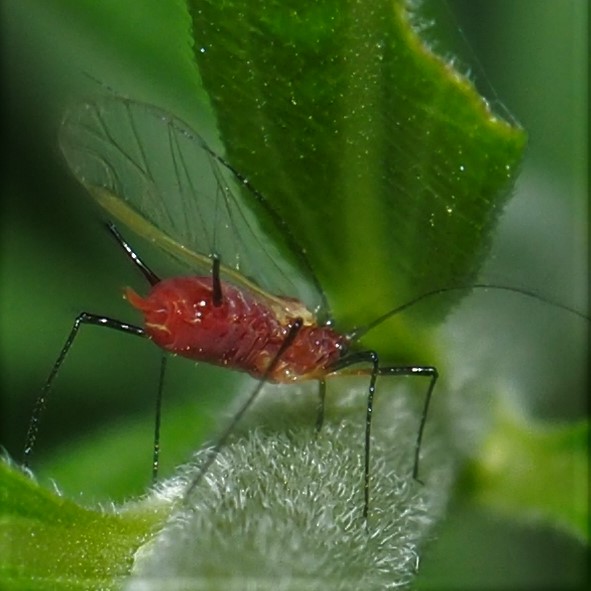
On to the Barklice! Remember last week, when we started seeing the nymphs of Metylophorus novaescotiae? Well, this week an adult appeared! And we saw an adult Valenzuela flavidus.
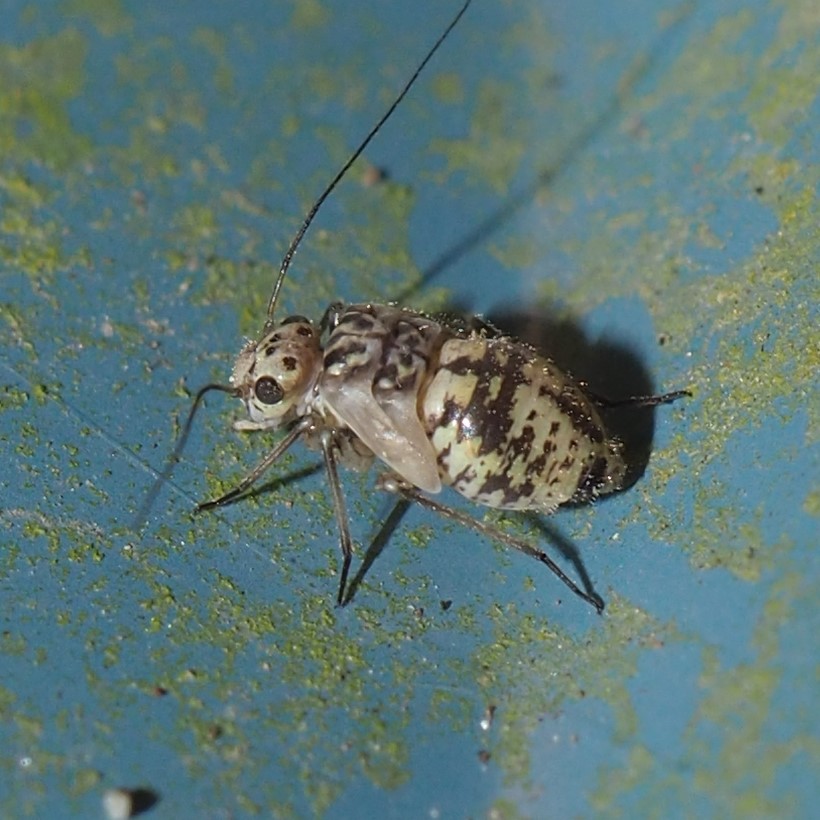
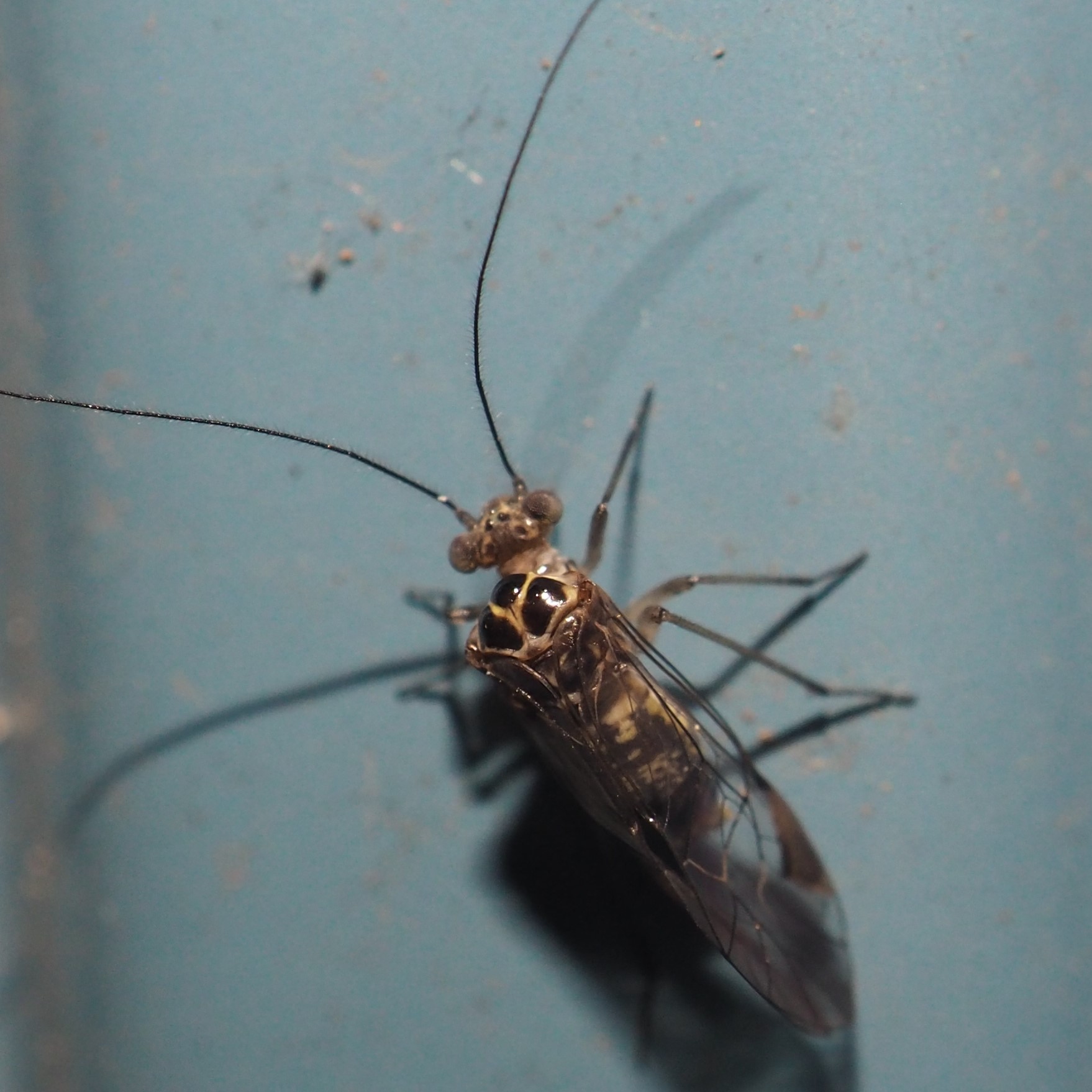
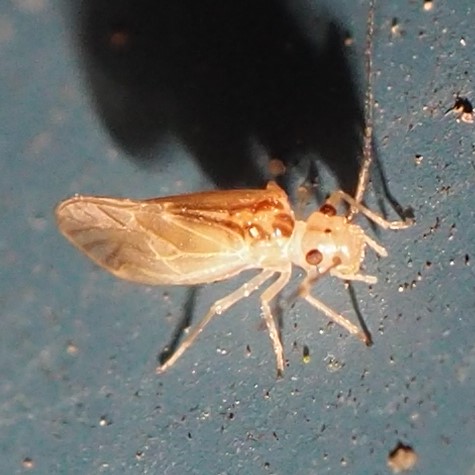
I also have started seeing the Barklouse Trichadenotecnum alexanderae. It has really pretty patterns in its wings. There was also a fuzzy photo of a reddish adult. What we don't have is a clear picture of the nymphs of either of these two Barklice. And we're still watching a batch of eggs on panel 8 on the East Wall. AND the nymphs that we posited would be Graphopsocus cruciatus now show the reddish dots on the thorax. Meanwhile all those Polypsocus corruptus have about disappeared.
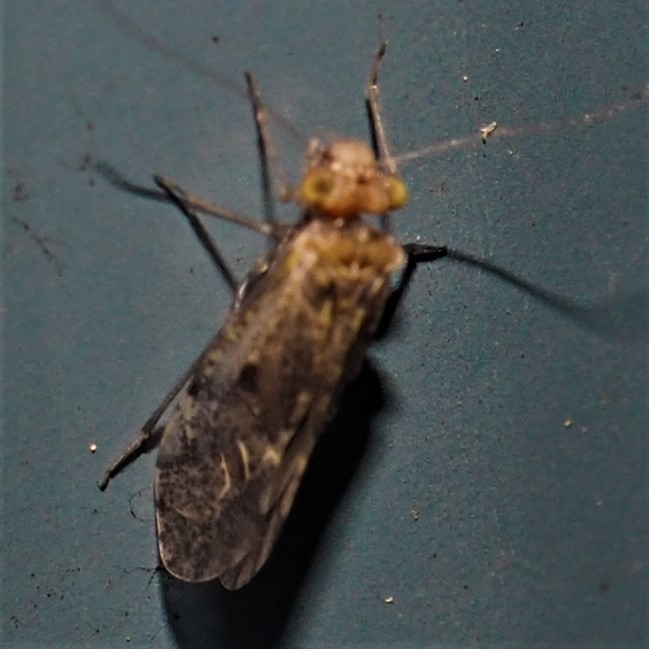
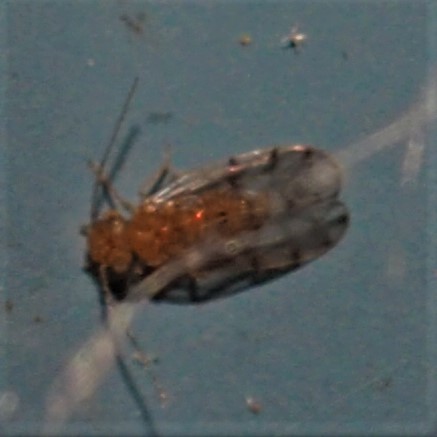
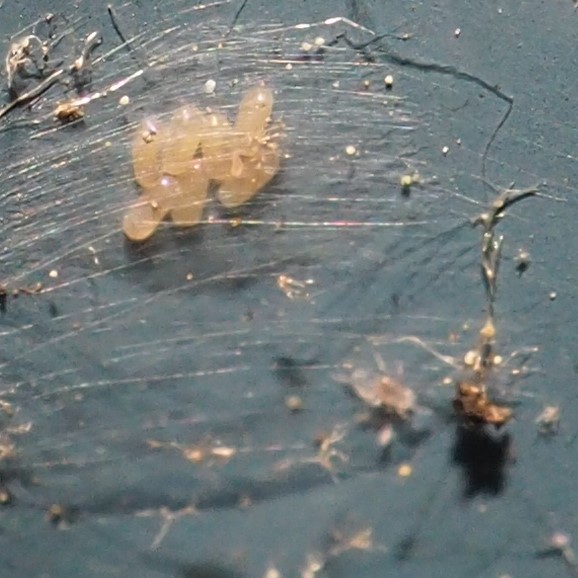
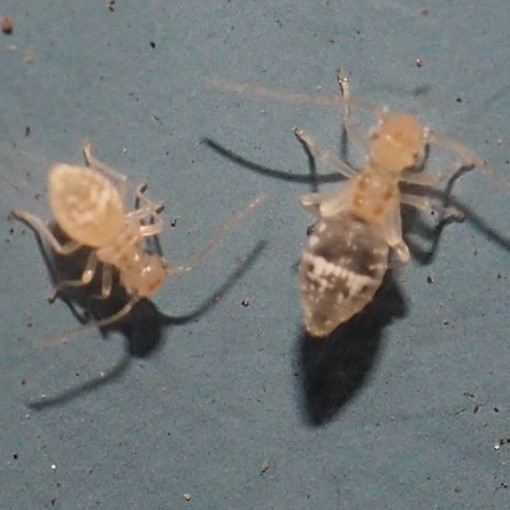
I don't think I saw any Bees to speak of this week (but wait for the wasps!). So we scoot over to the Beetles. There weren't too many of them either, but we love them. The first is a petite black fellow with some white polka-dots where the light played on his shiny black hard wings. Actually he was almost a throwaway when I thought the critter beside him was the piece of resistance. The Carpet Beetle in picture 2 may be the last one we see for a while since the Goutweed has died back. I saw Lightning Beetles several times in the last few days, mostly sleeping it off - they like to come out in the evening so need their beauty sleep.

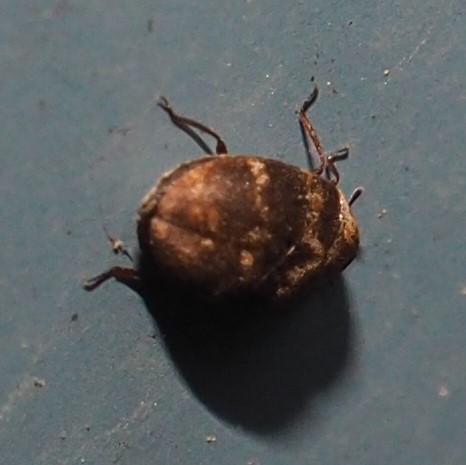
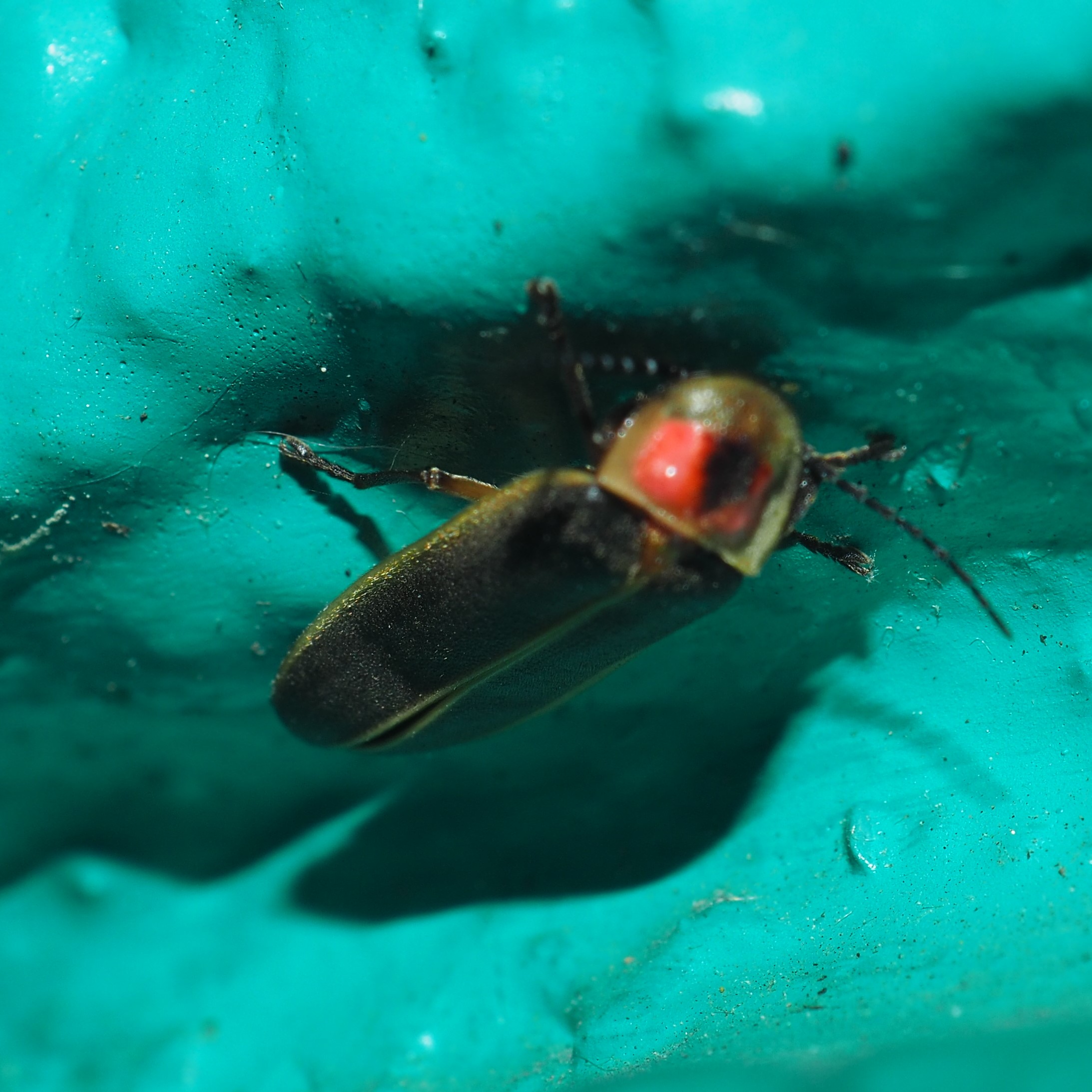
Do you remember that last week we had that lovely shiny Polished Lady Beetle? It had those really nice curlicued thorax ornaments and no spots. Well, today I saw my first Asian Lady Beetle of the year. They are allowed to have as many or as few spots as they care for as long as their thorax has a W-shaped (or M-shaped depending on from which direction you are looking at them) thorax decoration. While we're on the red Beetles, here's one of those dreadful Lily Leaf Beetles, which are almost finished demolishing this year's Tiger Lilies. How can something so gorgeous be so destructive?

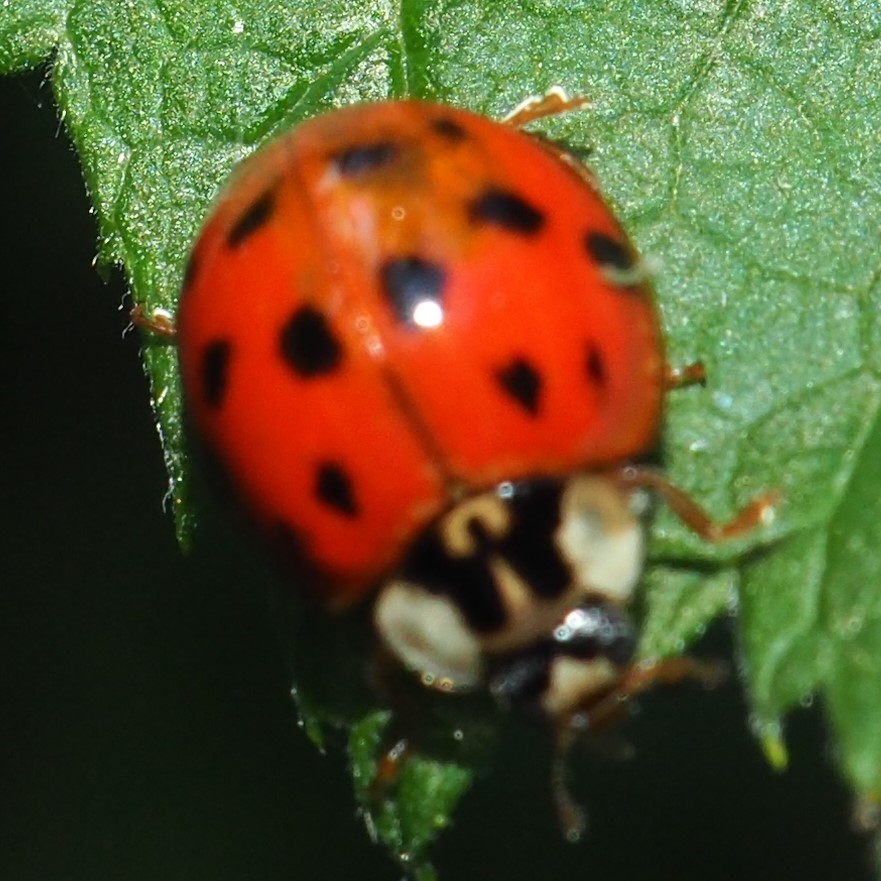
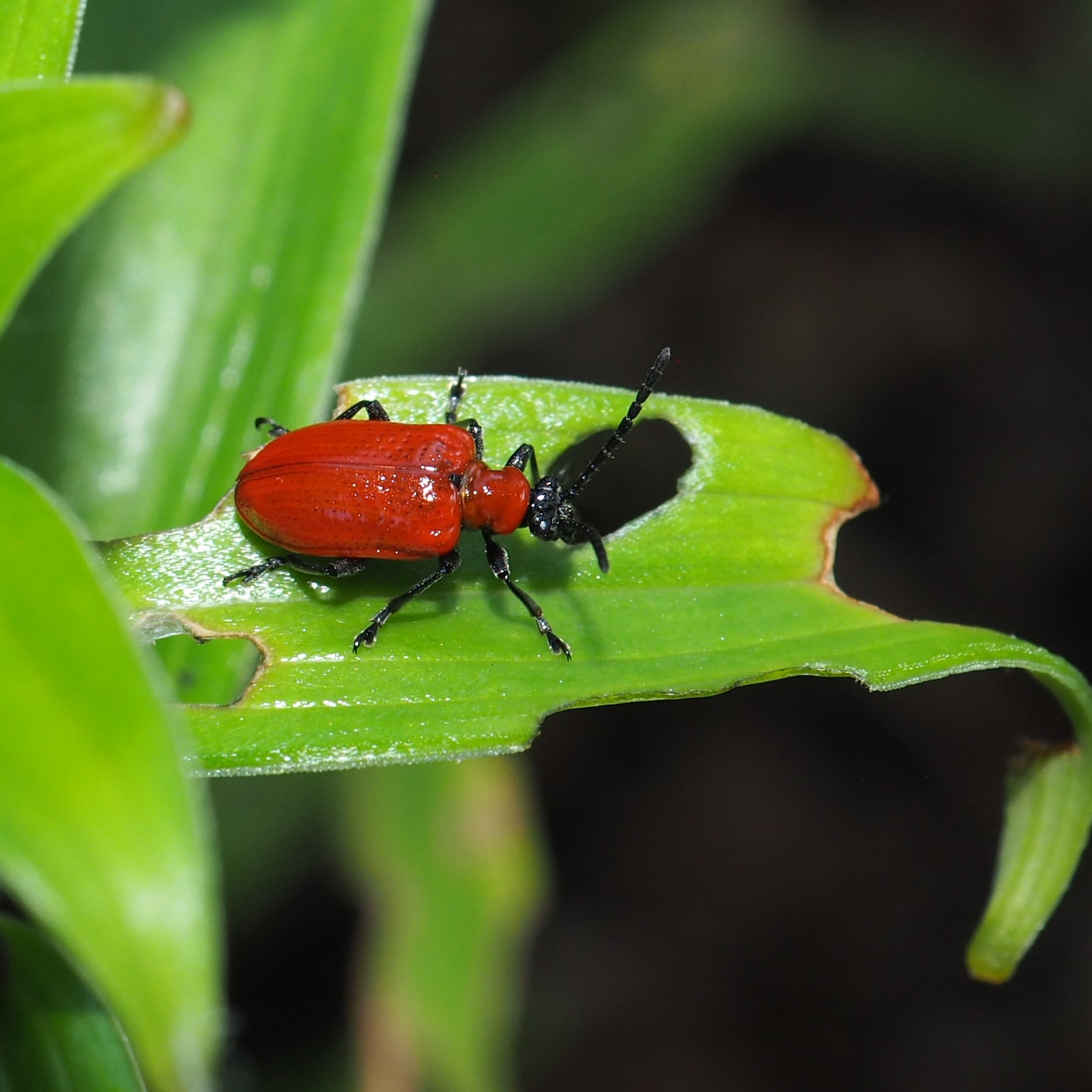
First here is a False Darkling Beetle. Second and third, a chunky-looking Weevil.
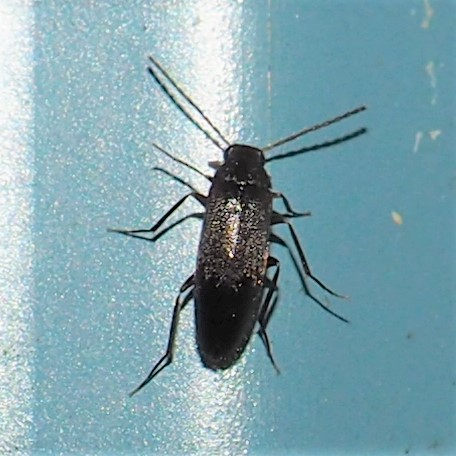
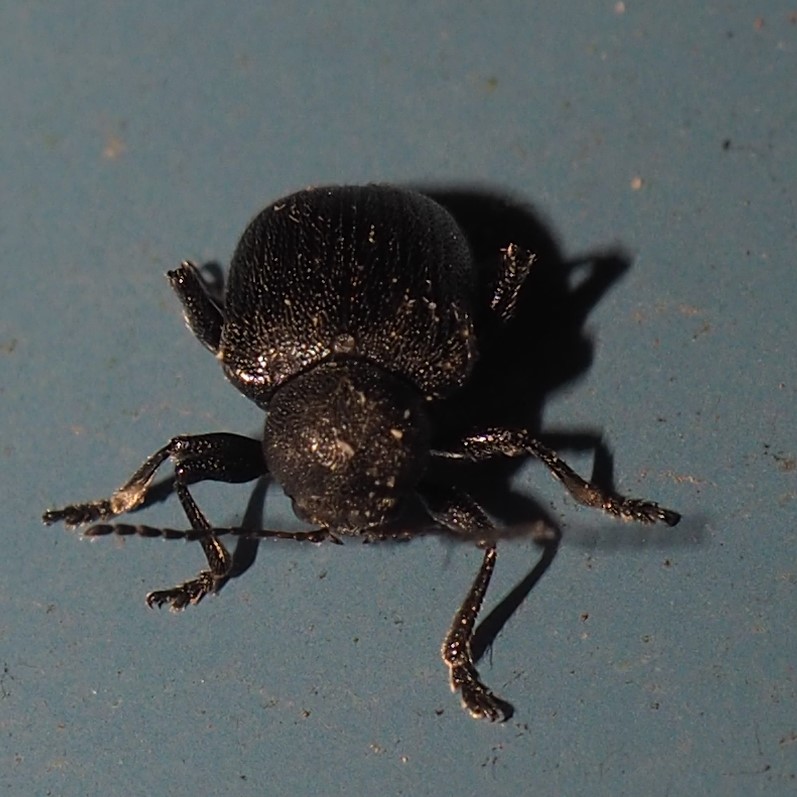
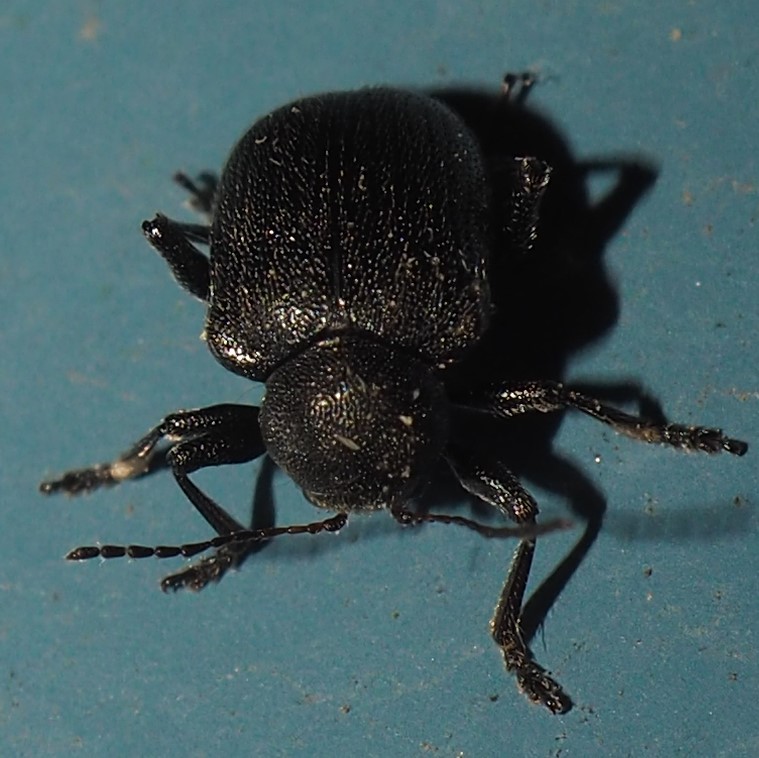
Yes, now it's time for the Bugs. This week was a great one for Bugs, especially Hoppers. Let's start off with the Leafhoppers. Here are two green nymphs, out of about a zillion different light green Leafhoppers. And third, a white Leafhopper Nymph, most likely a Graphocephala Nymph.
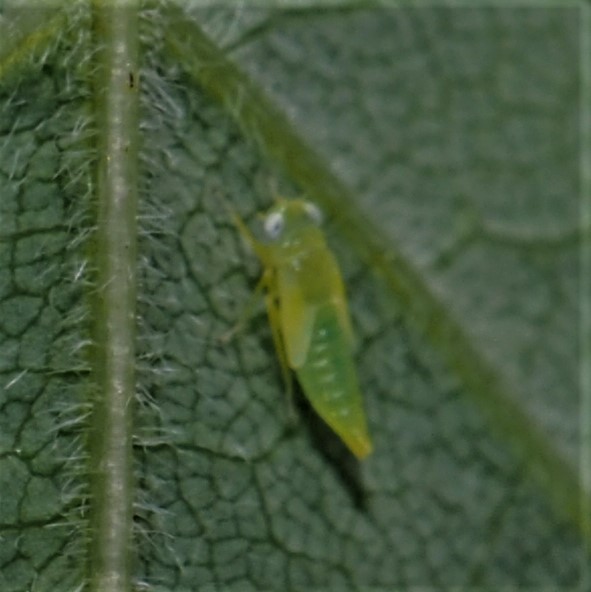
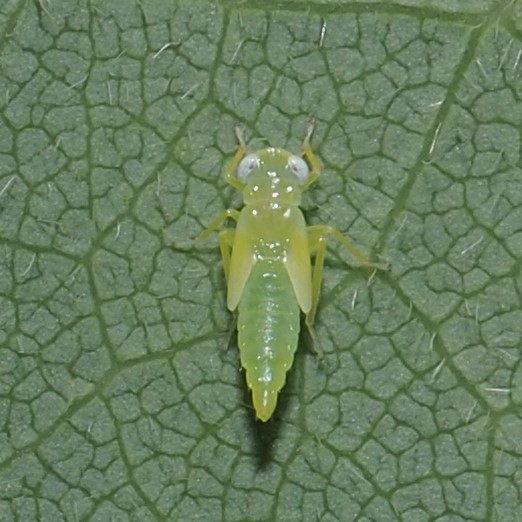
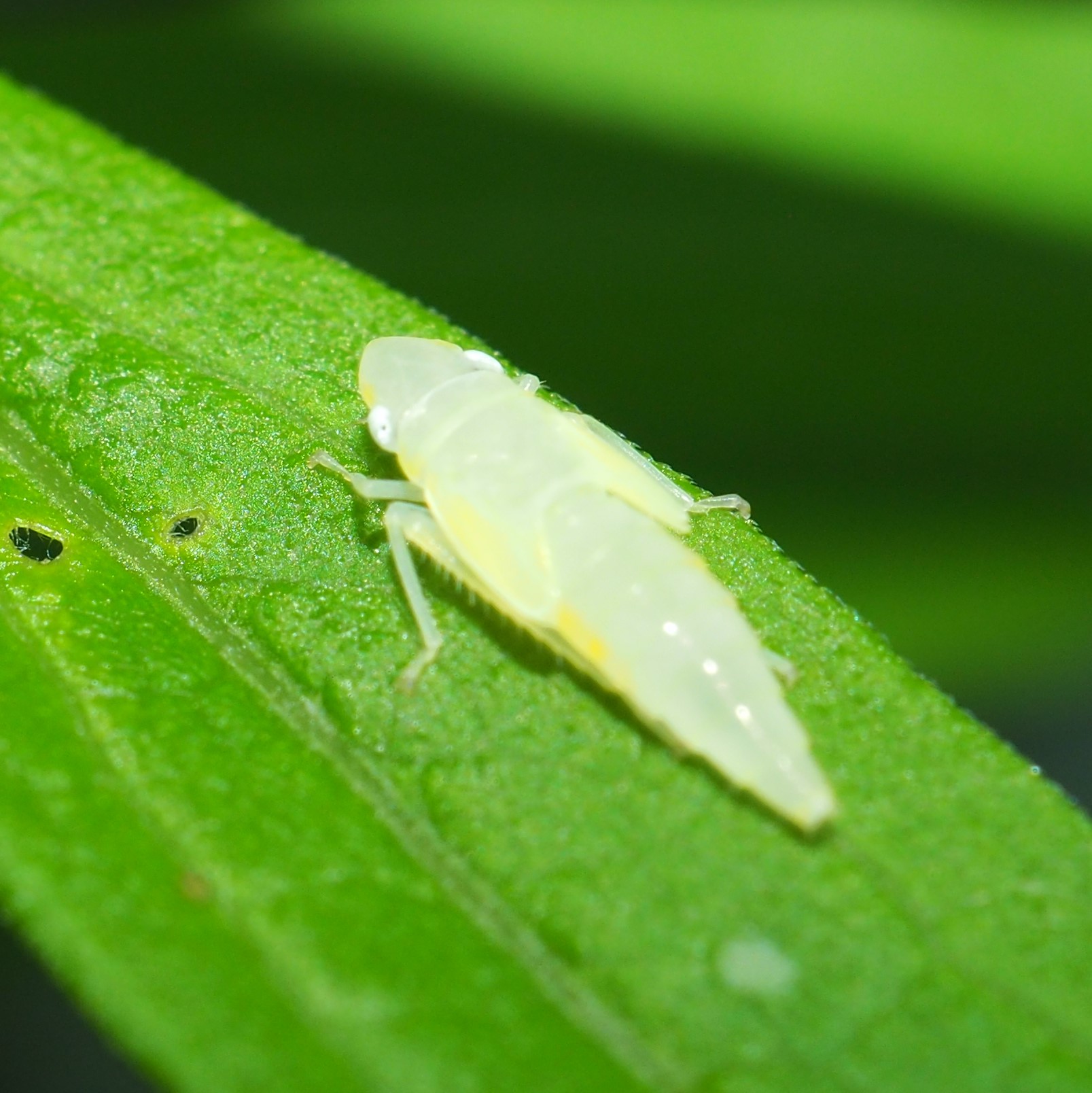
Hard to imagine those plain white things morphed into one of the most colorful of the leafhoppers in this part of the world, the red and blue or red and green striped leafhoppers. I think some of them have the red-blue for one sex and red-green for the other, but that is just a guess. I do know that in earlier years I saw almost only red and blue ones, but this year so far the red and green have been the most frequent.
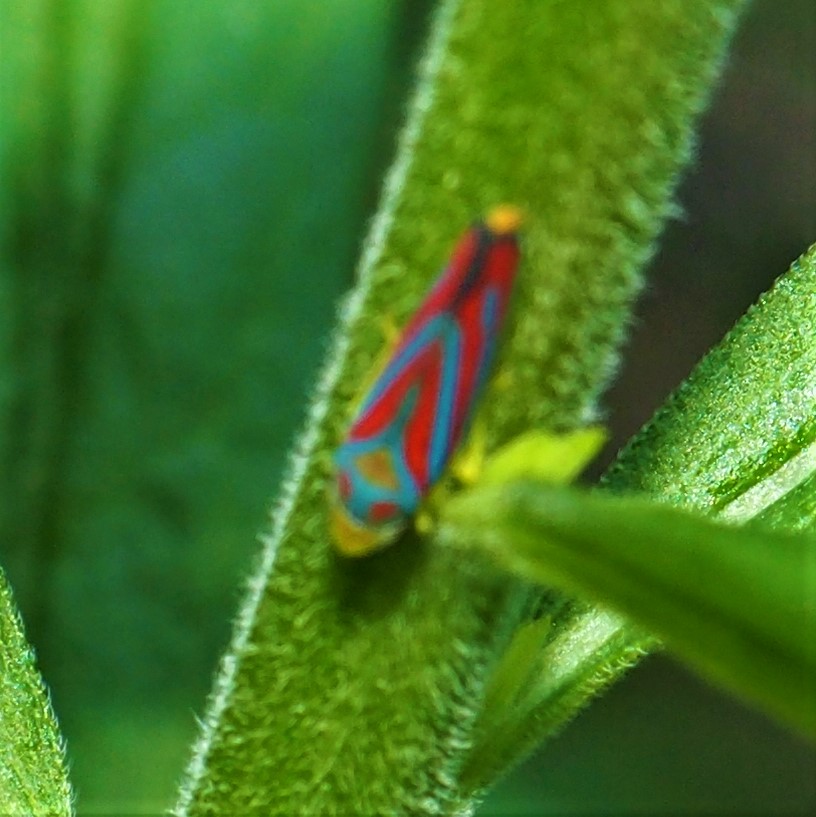
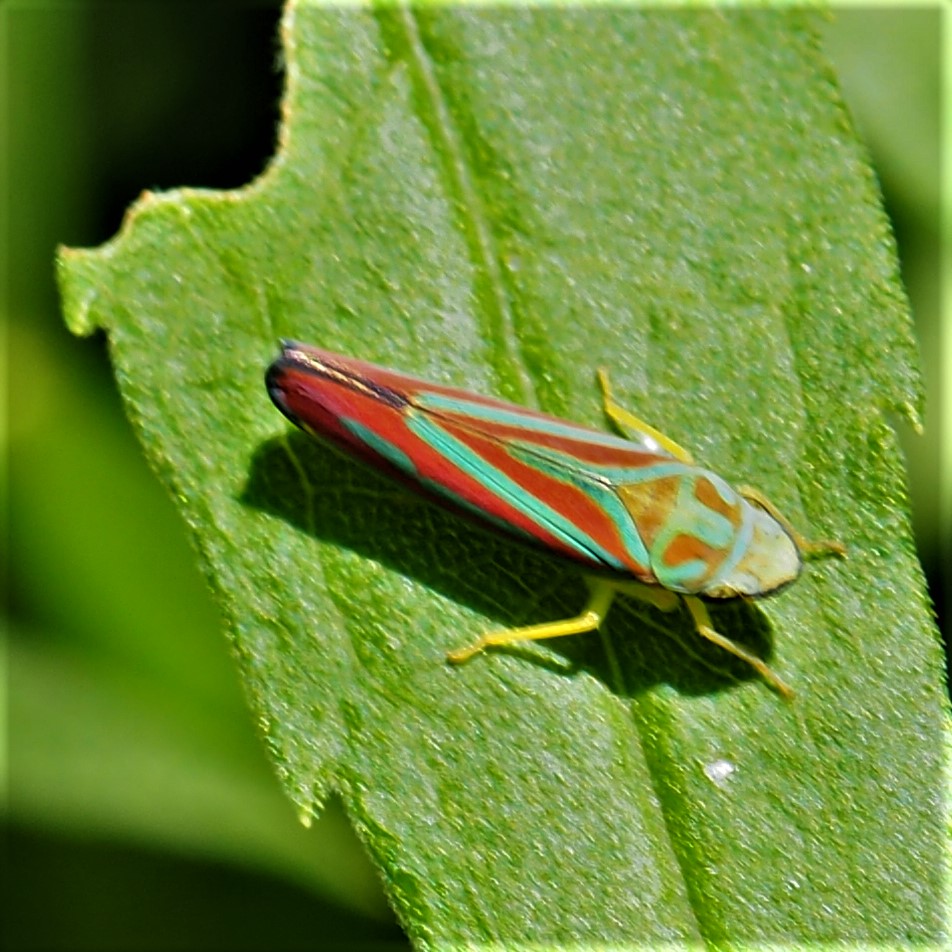
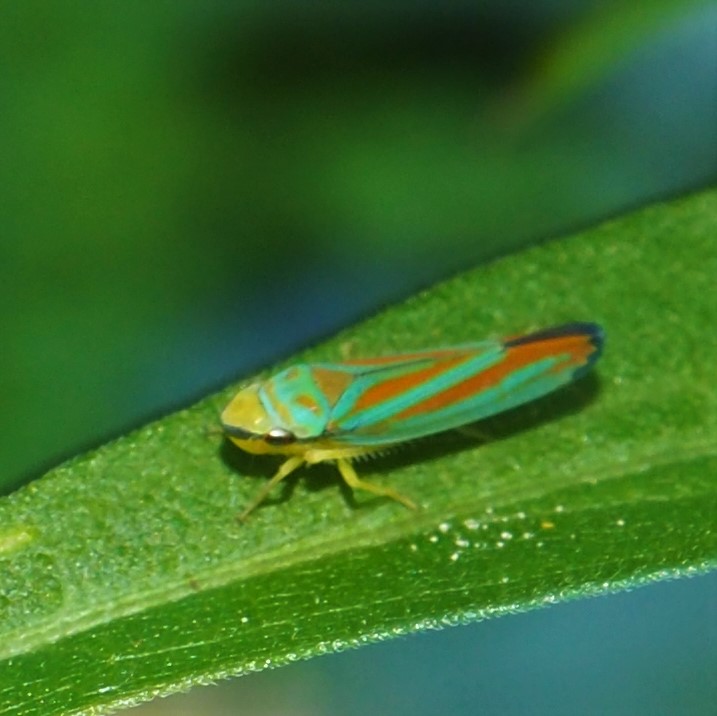
Another common Leafhopper is the genus Aphrodes. They start off very light green, like number 1, and gradually the nymphs become darker and finally striped. Number 2 is borrowed from last week, when this one was found on a Thistle in the front yard near the Entylia carinata colony. Now they are properly striped.
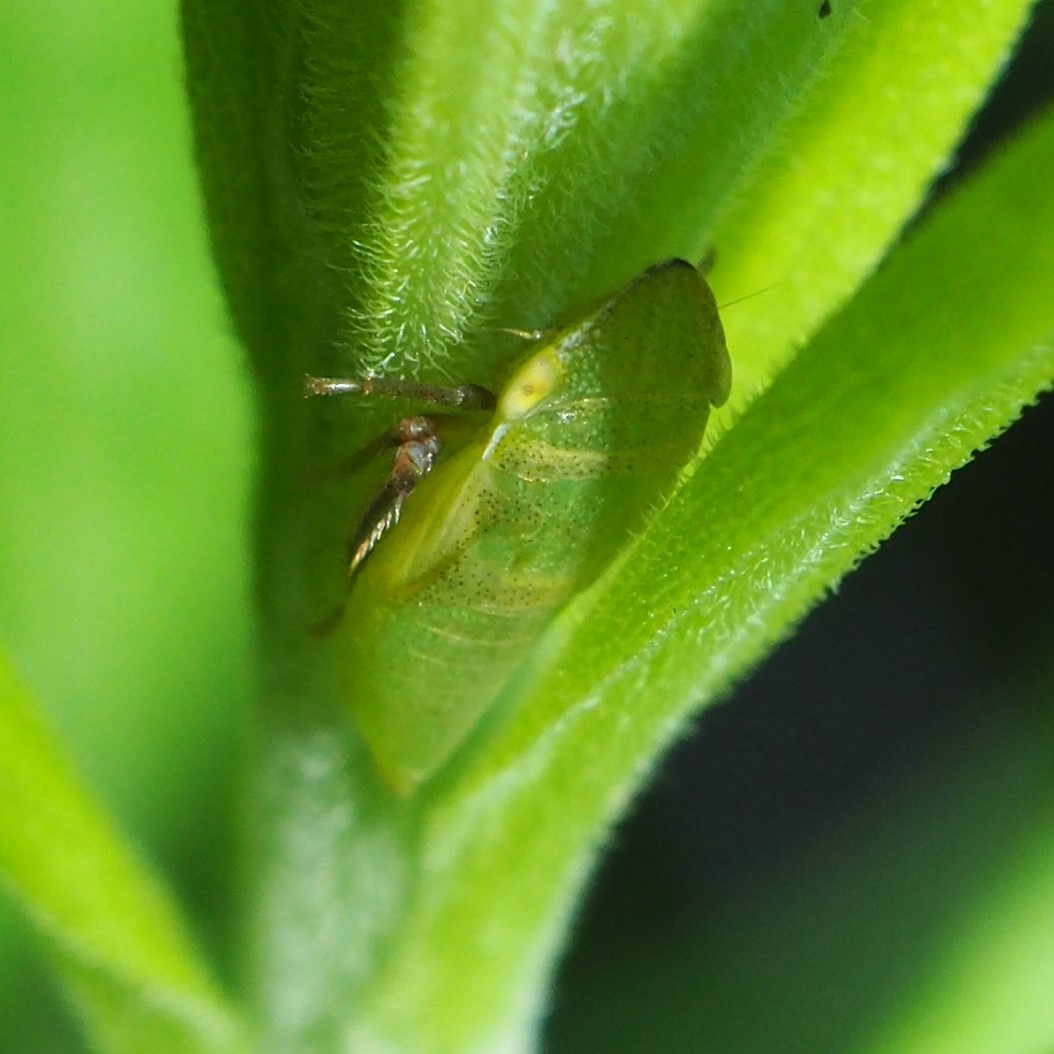
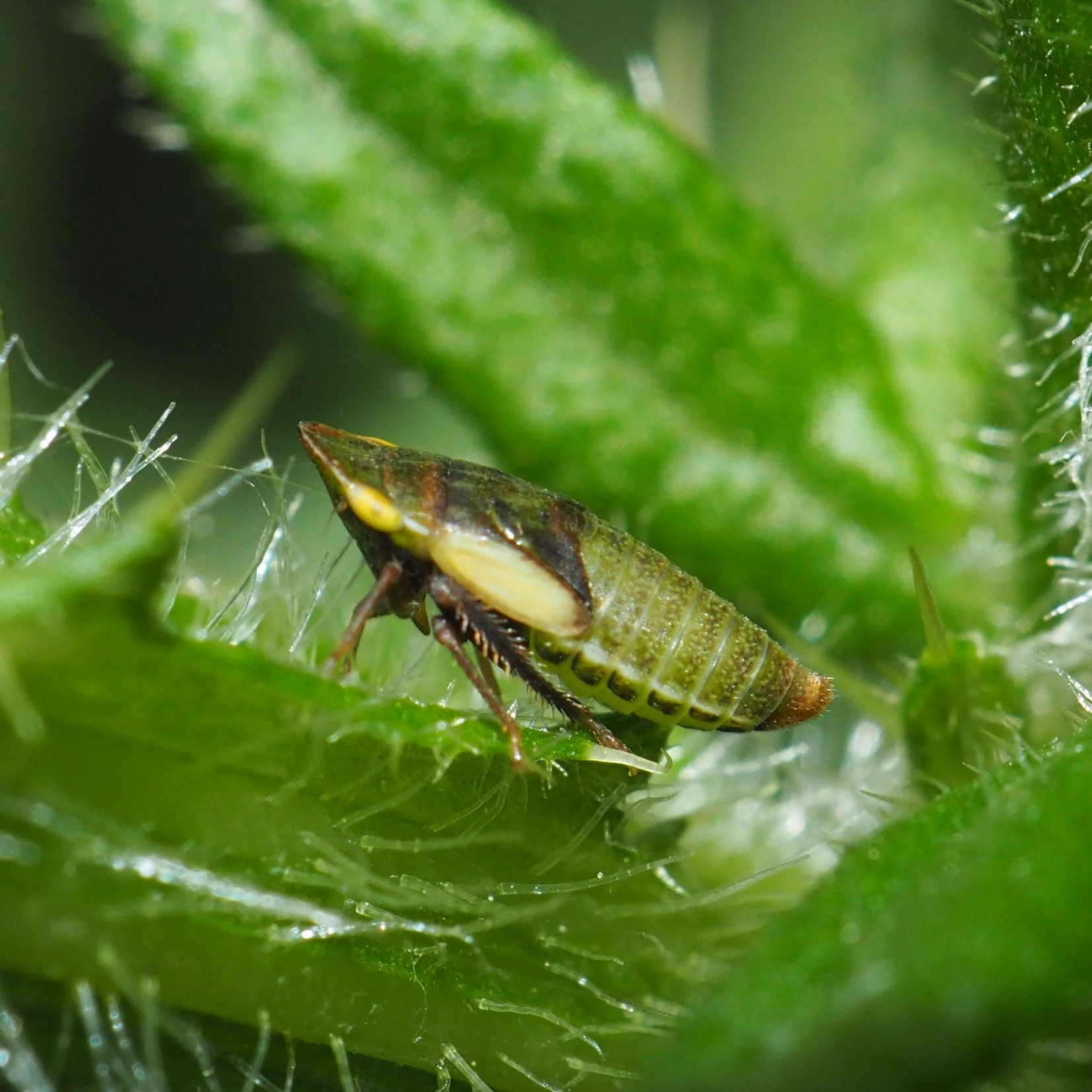
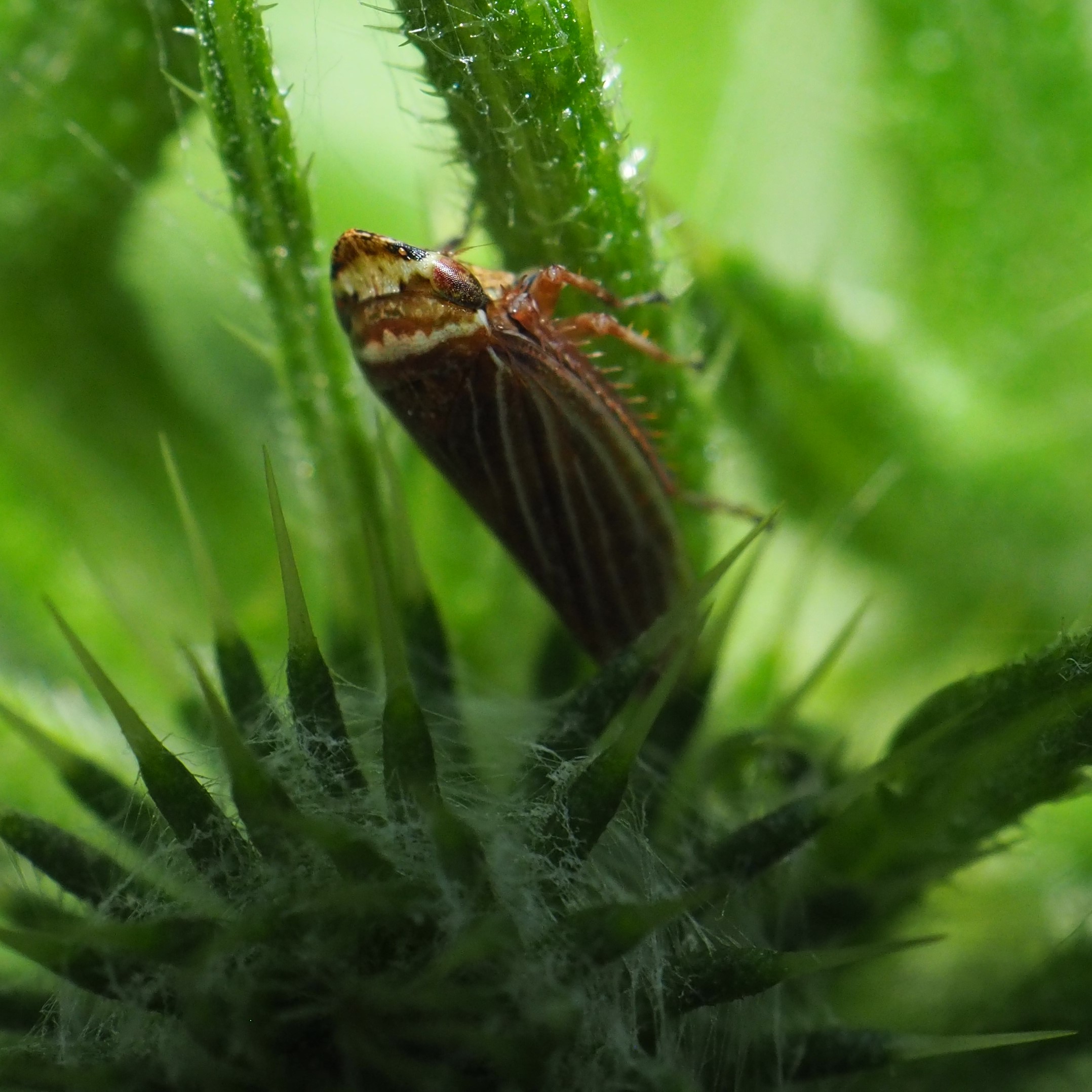
Here are some other Leafhoppers we saw this week. This first one, Pediopsoides distinctus, was in a Redbud sapling. It was the first time I'd ever seen one. Second is in genus Scaphoideus.
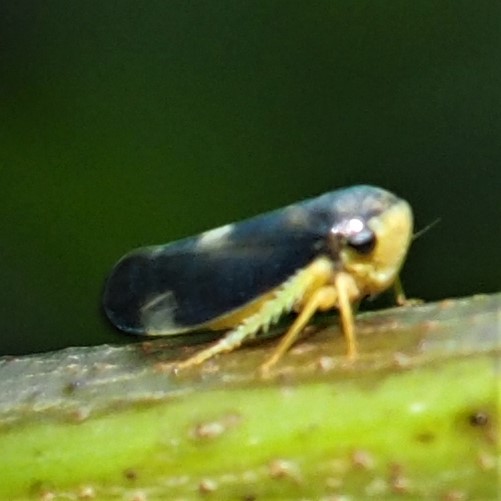
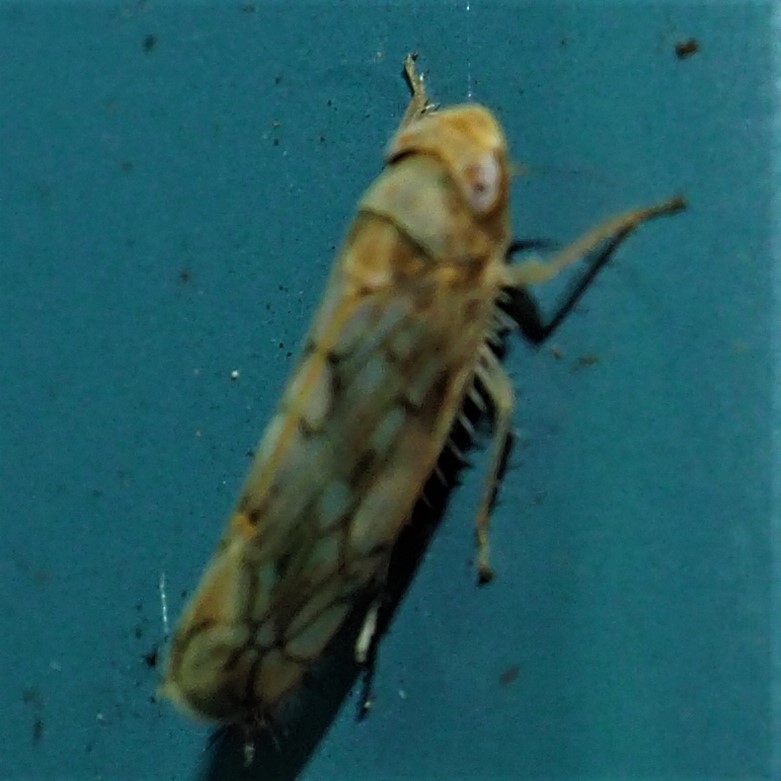
Here are a couple of nymphs that do not resemble their adult forms AT ALL (to me). The first is the nymph of the Japanese Maple Leafhopper, whose adult is in picture 2. The next really different nymph does resemble the first one, but I think it is the nymph of one of the Scaphoideus genus.
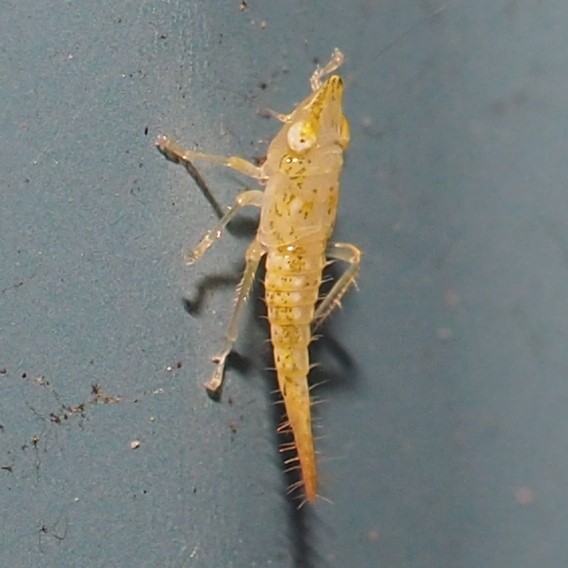
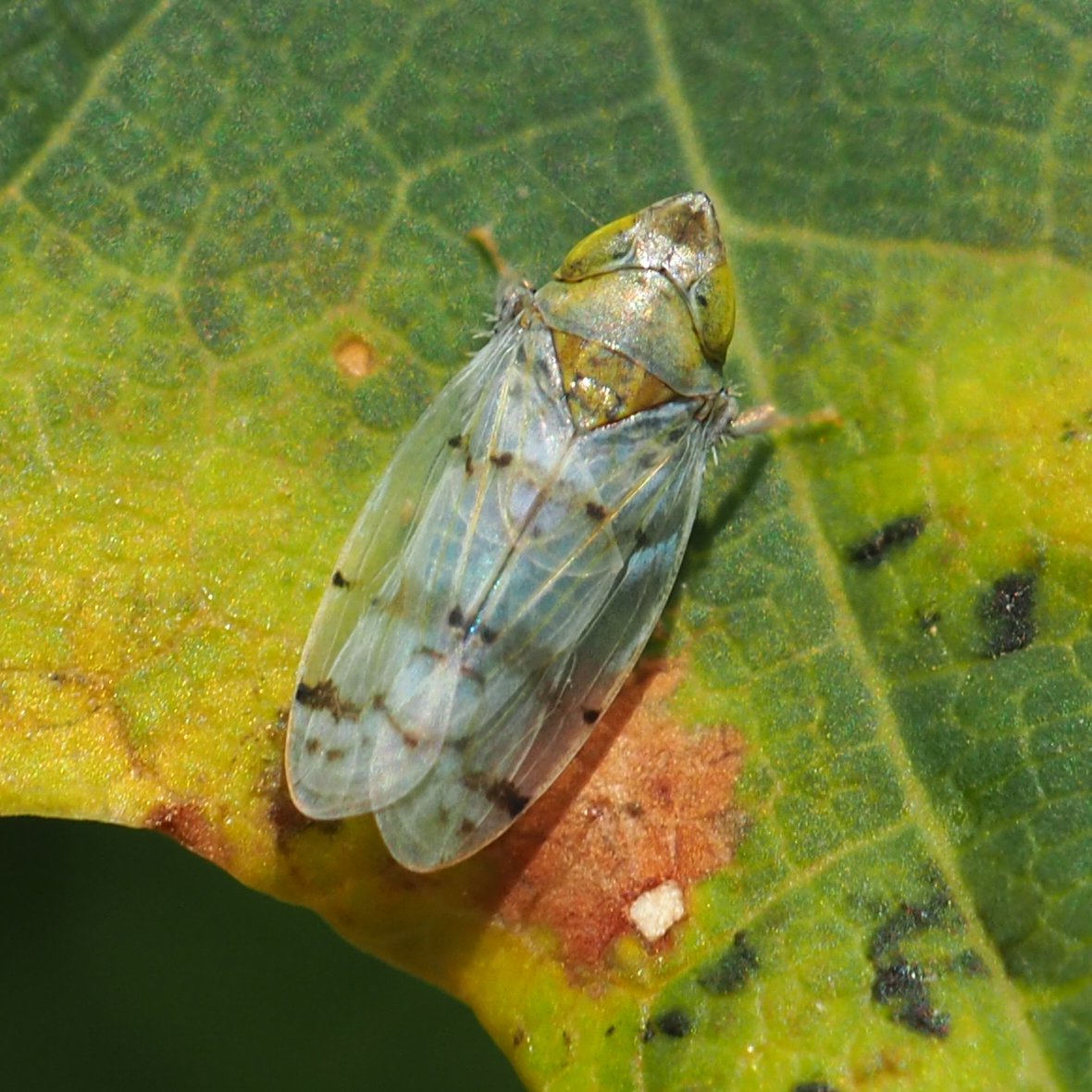
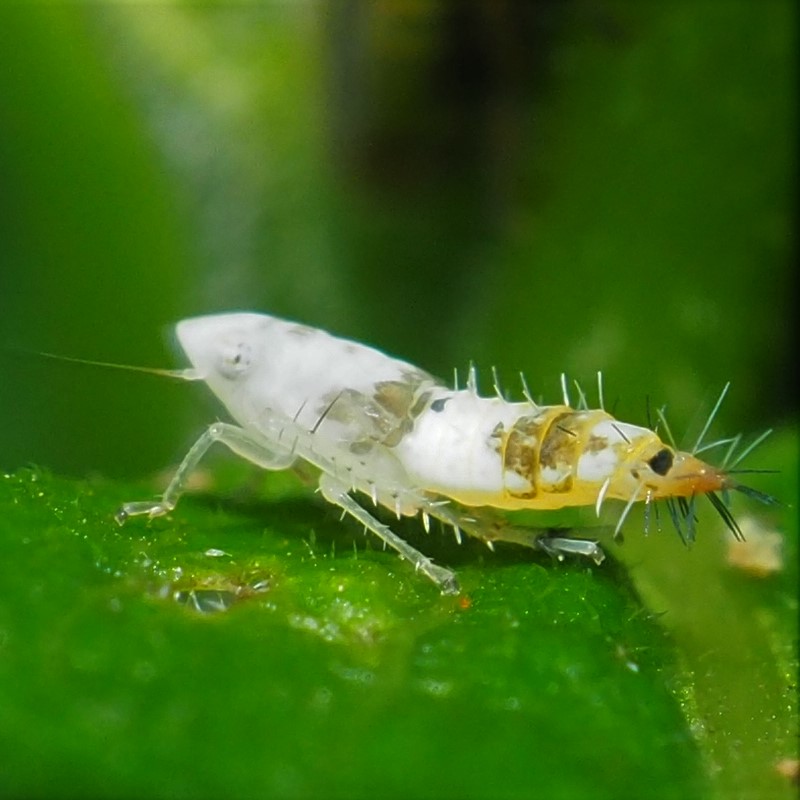
From Leafhoppers to Planthoppers. This first one is the nymph of the Citrus Flatid Planthopper, Metcalfa pruinosa. I hope we will be seeing an adult of this species soon. The second one came in on my T-shirt yesterday afternoon, and it turns out to be another Planthopper, the Two-striped Planthopper, Acanalonia bivittata. Third here is probably another member of the Acanalonia genus.
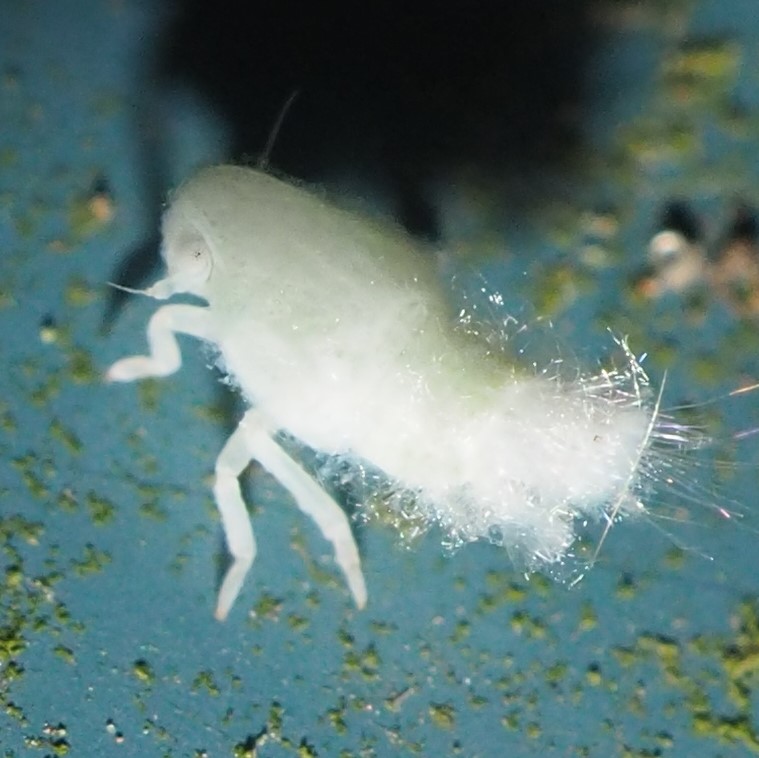
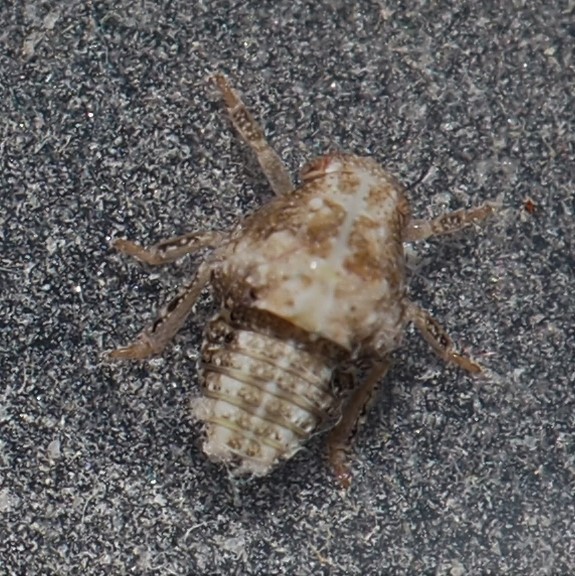
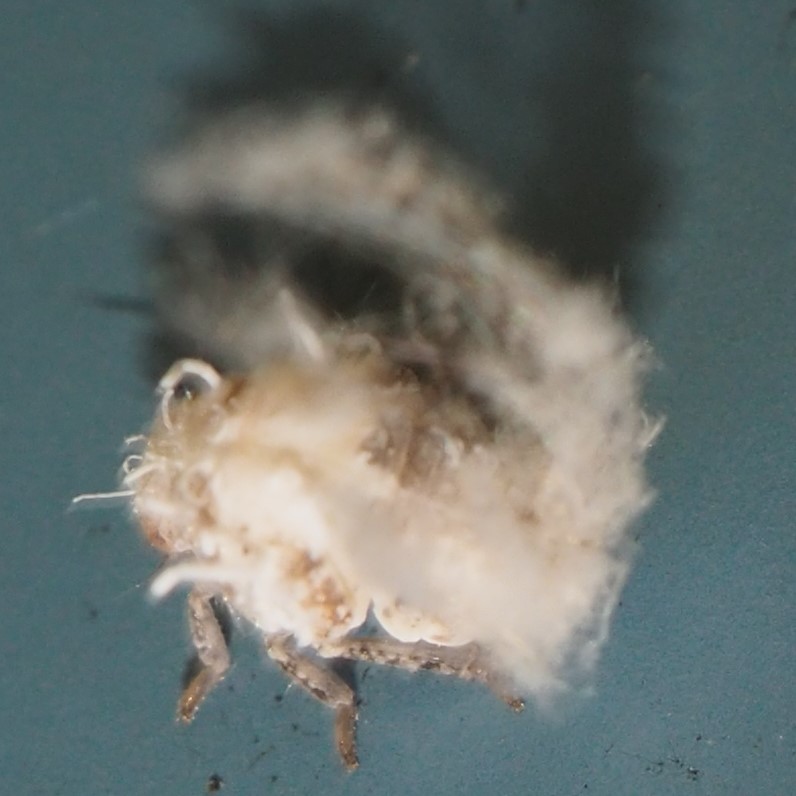
Continuing with the Hopper theme, we come to the Treehoppers. First is the nymph of one of the Buffalo Treehoppers, this one green. Next is a nymph of the Two-Mark Treehopper, which colonizes my Redbud Trees and Saplings. Its adults are already starting to appear, like the two adults in number 3.
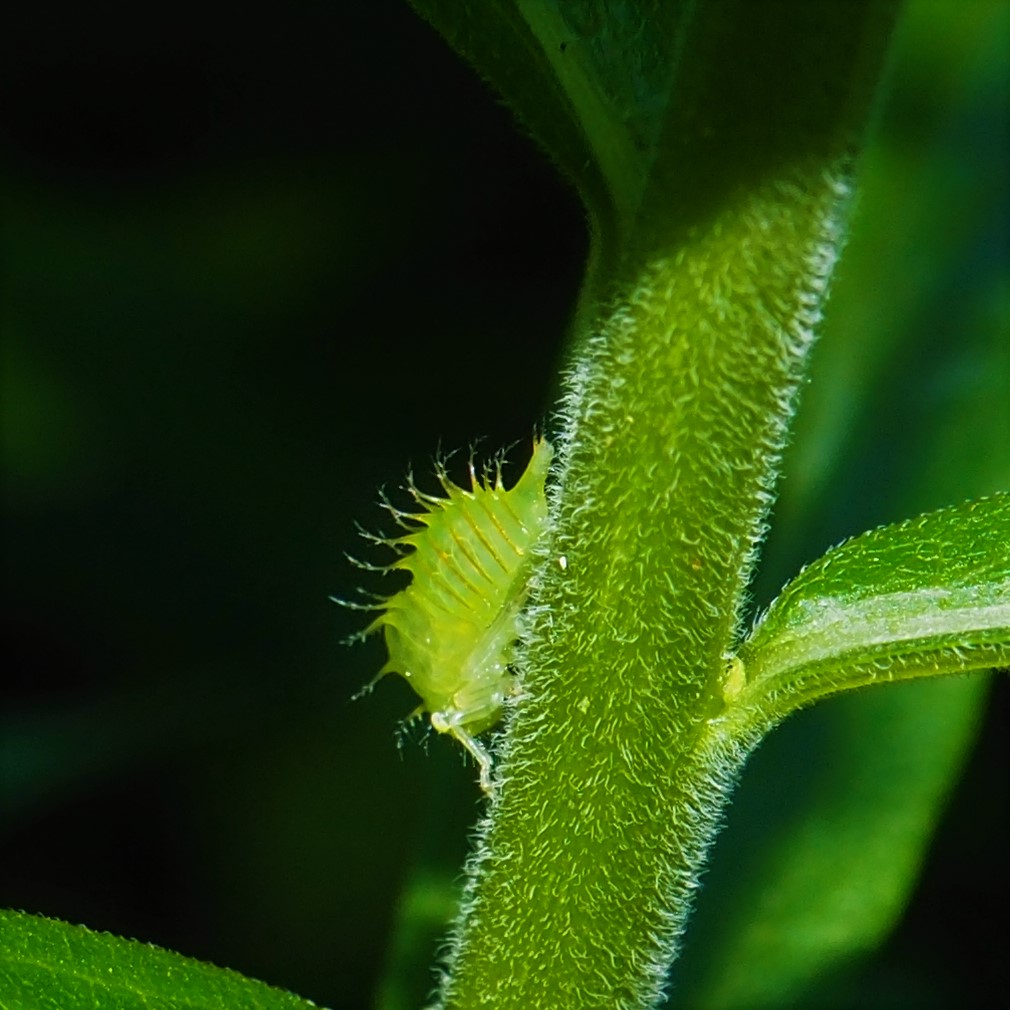

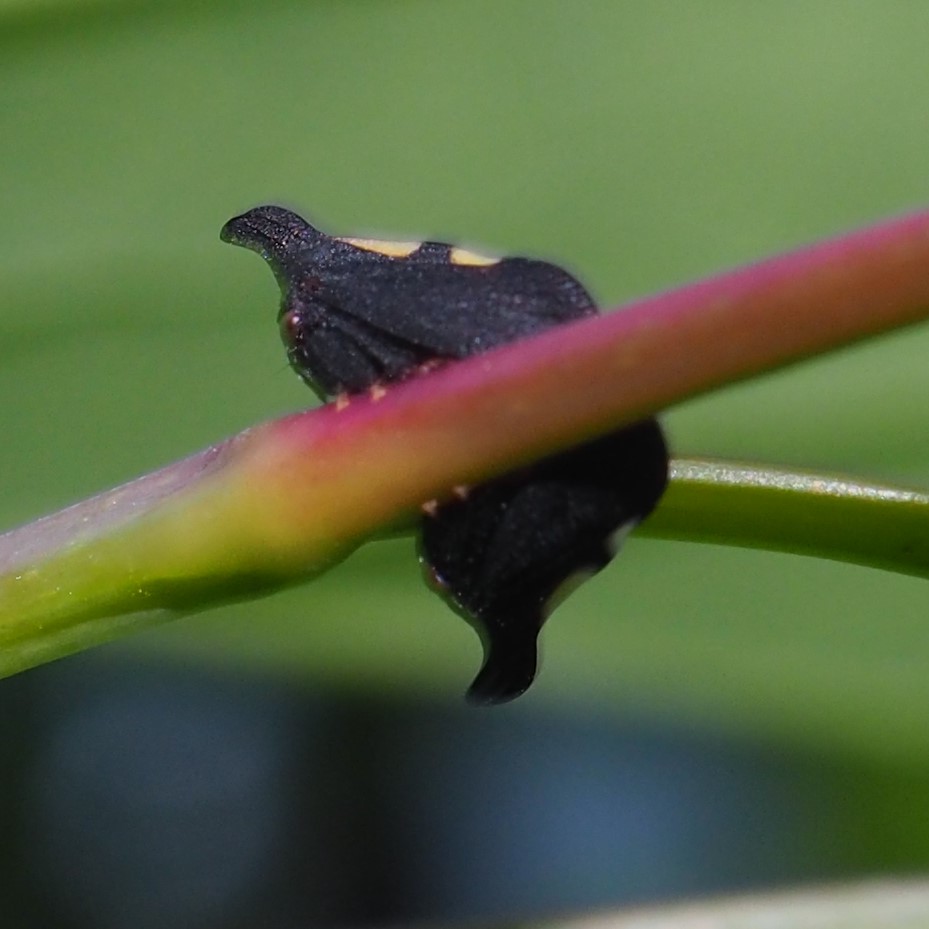
My other Treehopper colonies inhabit this year two good-sized Thistles. The adults you've seen before - here's one, with her nymphs. They seem to move away from the location where they laid their eggs, leaving the nymphs on their own.. I have been delighted to see that some of the Hairless Rover Ants have been taking some responsibility with nursing the nymphs (picture 2). This brings us to the end of the Hopper section of this blog!
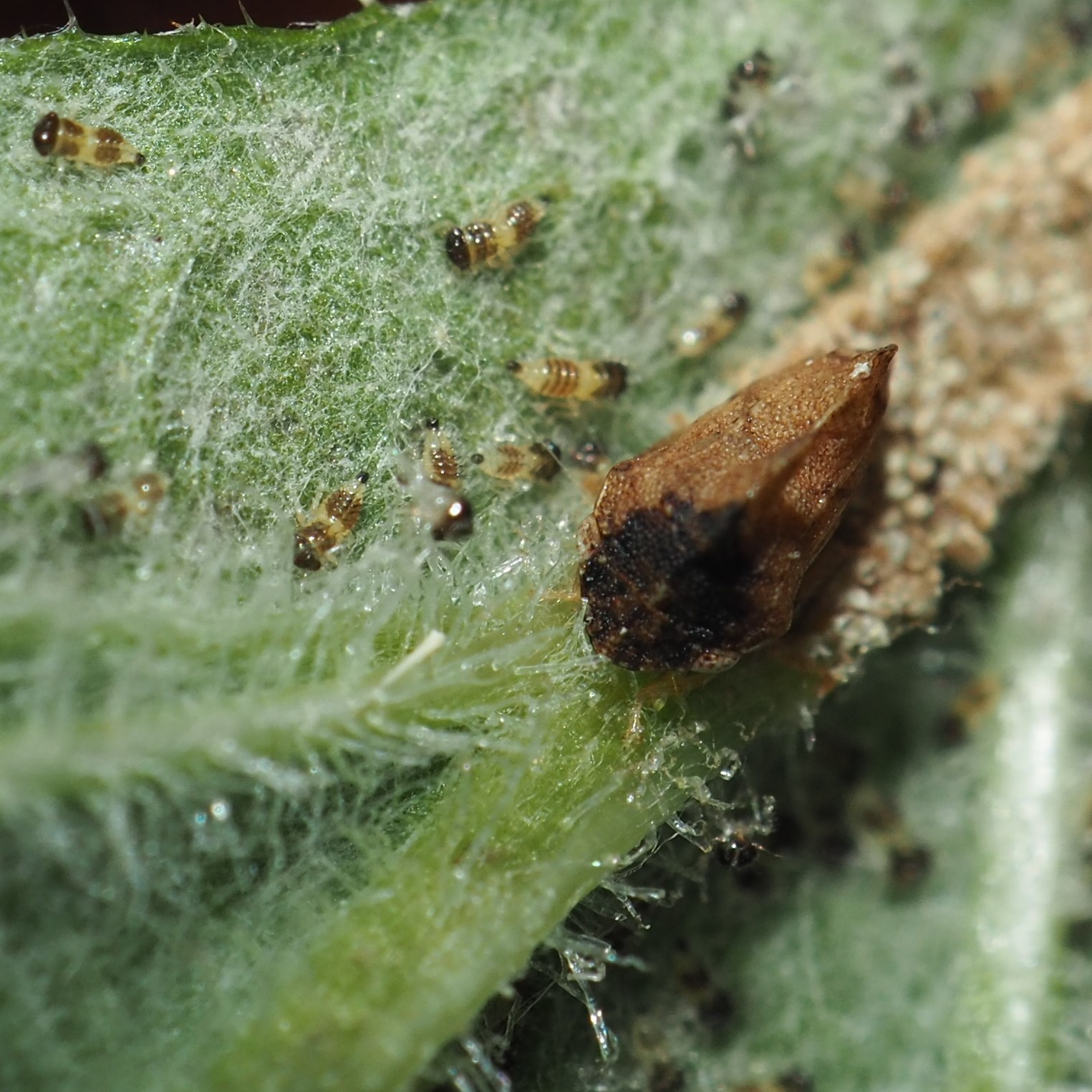
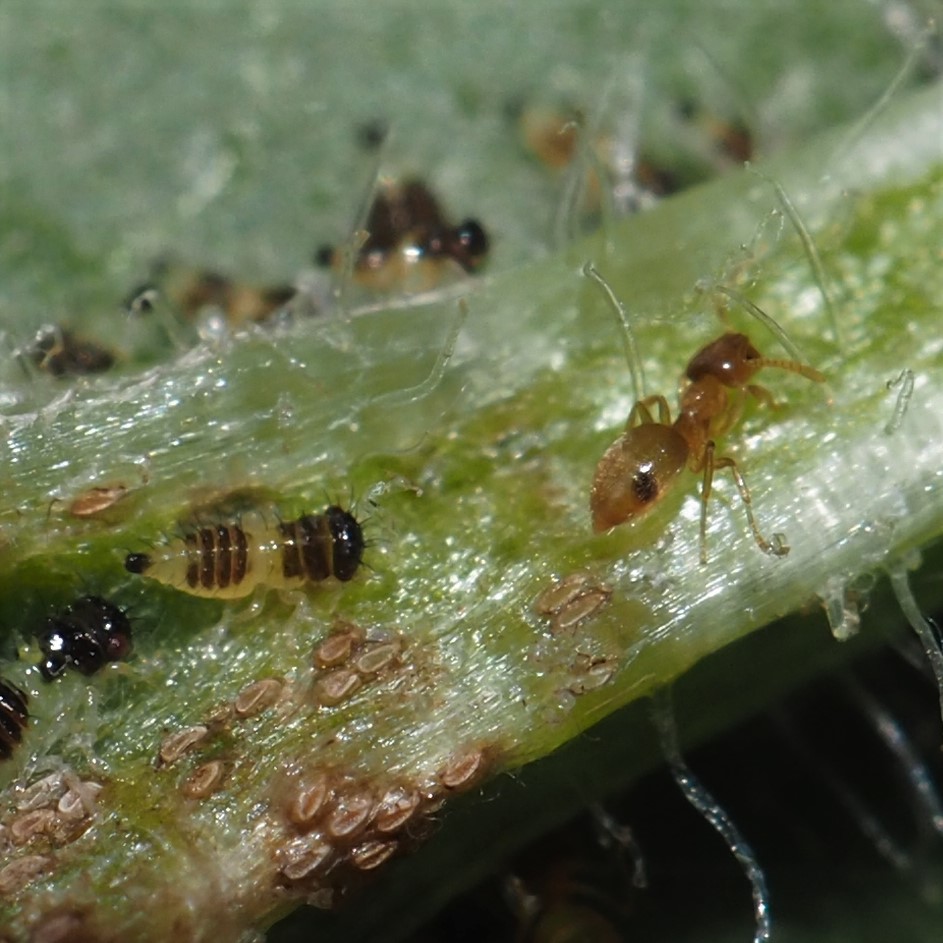
Another large category of Bugs is the Plant Bugs. I'm not so great at differentiating them from other Bugs, but I think we can at least put some together that may be related. First here is the Four-lined Plant Bug, one of the most destructive bugs in my yard. If you will bring a container, I will give you as many as you like. Next is the Obscure Plant Bug. Third is the member of genus Phytocoris that I've been seeing every few days for a couple of weeks. It is still decorated with what almost seems to be a fabric print.
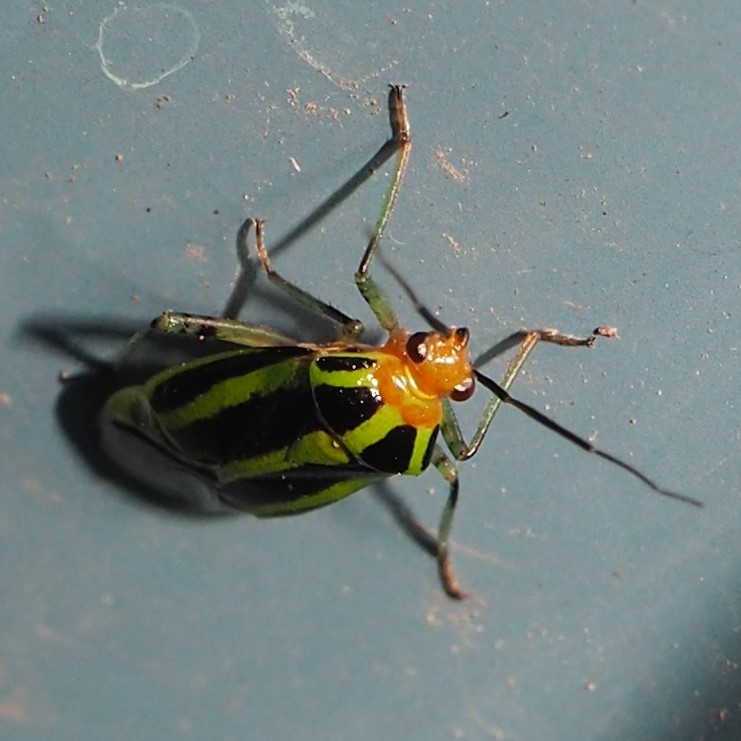
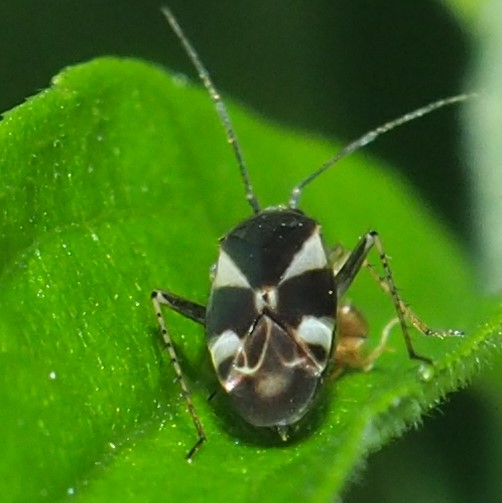
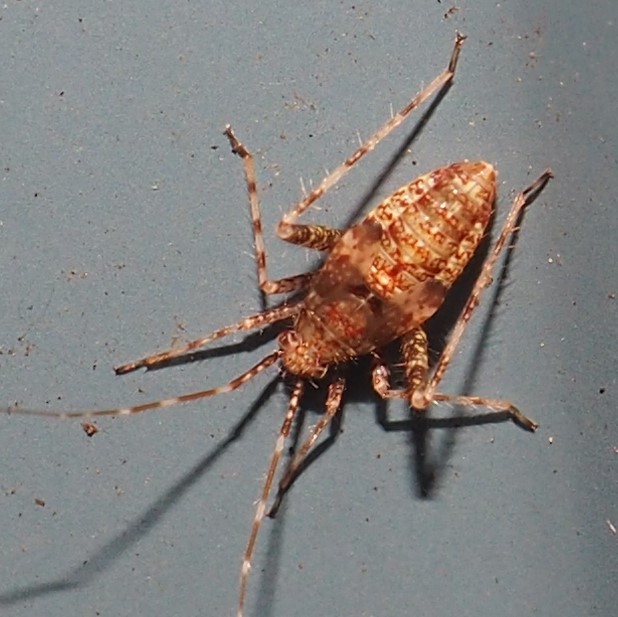
A few more Bugs. This first one seems almost sequined. The next may be another copy of it. Third is the White-margined Burrowing Bug, or more likely, its lookalike, the Ebony Bug in genus Corimelaena, since there seem to be breaks in its white belt.
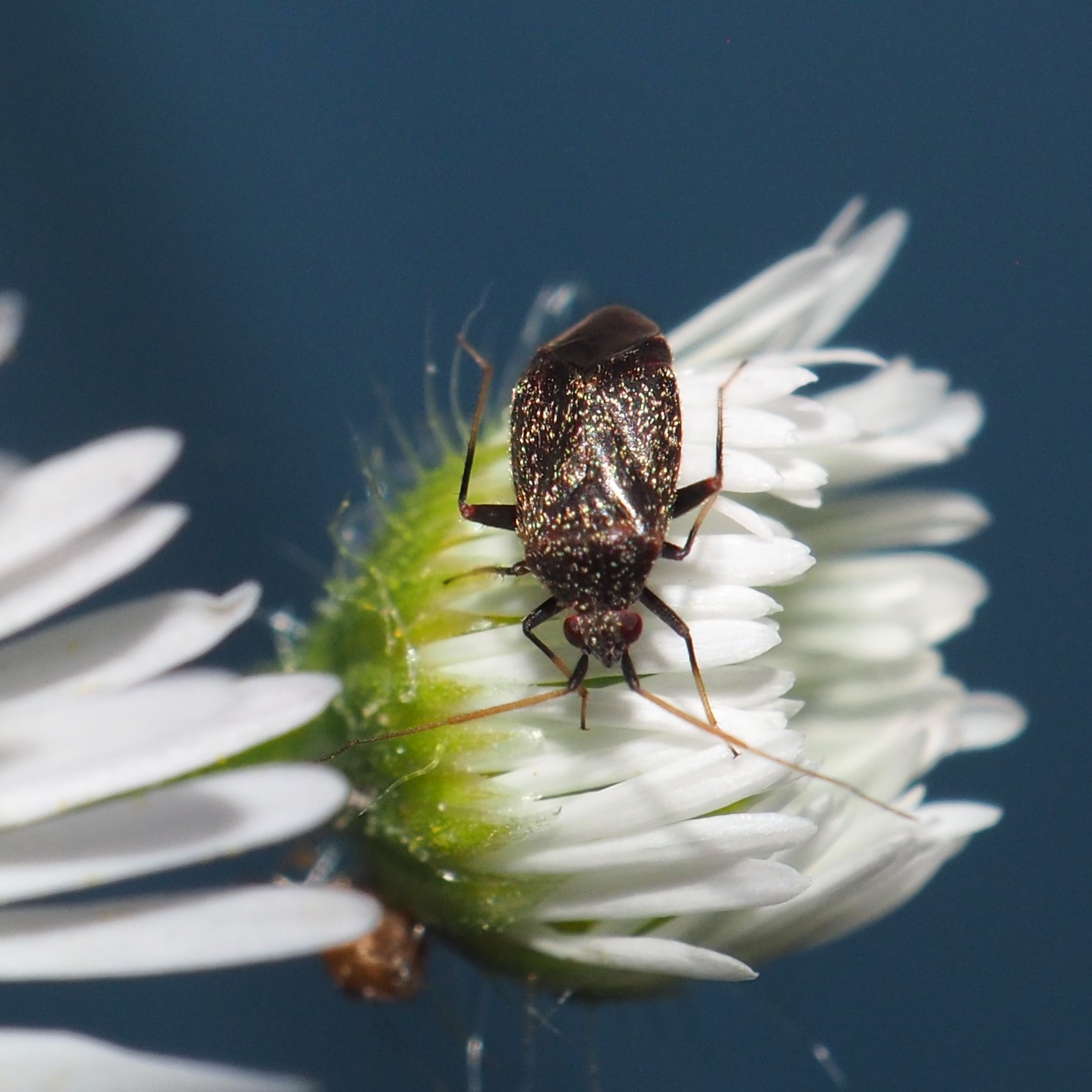
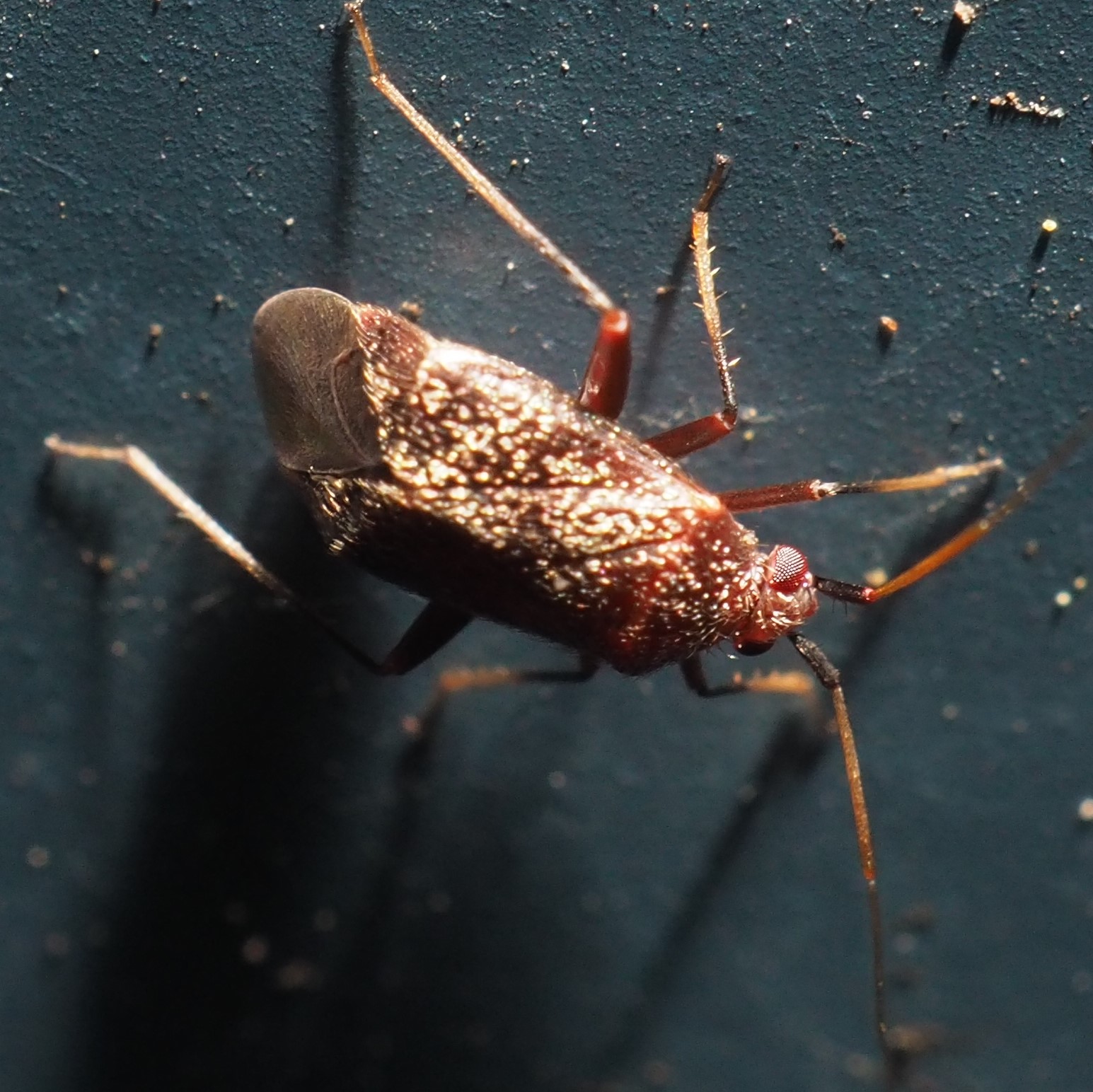
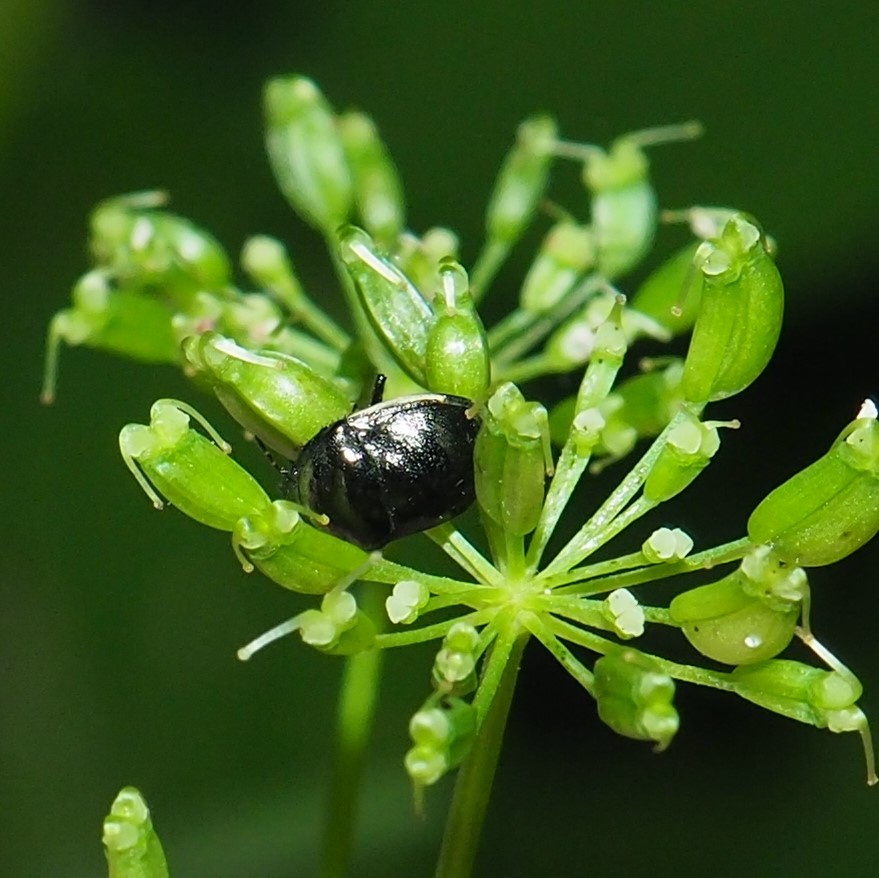
I got a big surprise the other day when this Bug got into the house and didn't seem to mind being taken up to my room to be photographed. He spent the evening in a container and then obliged me by going out the bathroom window. The ID app in iNat suggested he was an Assassin Bug but not until I saw his siphon in picture 2 did I believe it. Third here gave me a start. I had just put the lid down on our garbage Kerby when I saw the little Leaf-footed Bug (Acanthocephala terminalis) nymph doing its little disco dance! Haven't seen one of them for a few years!
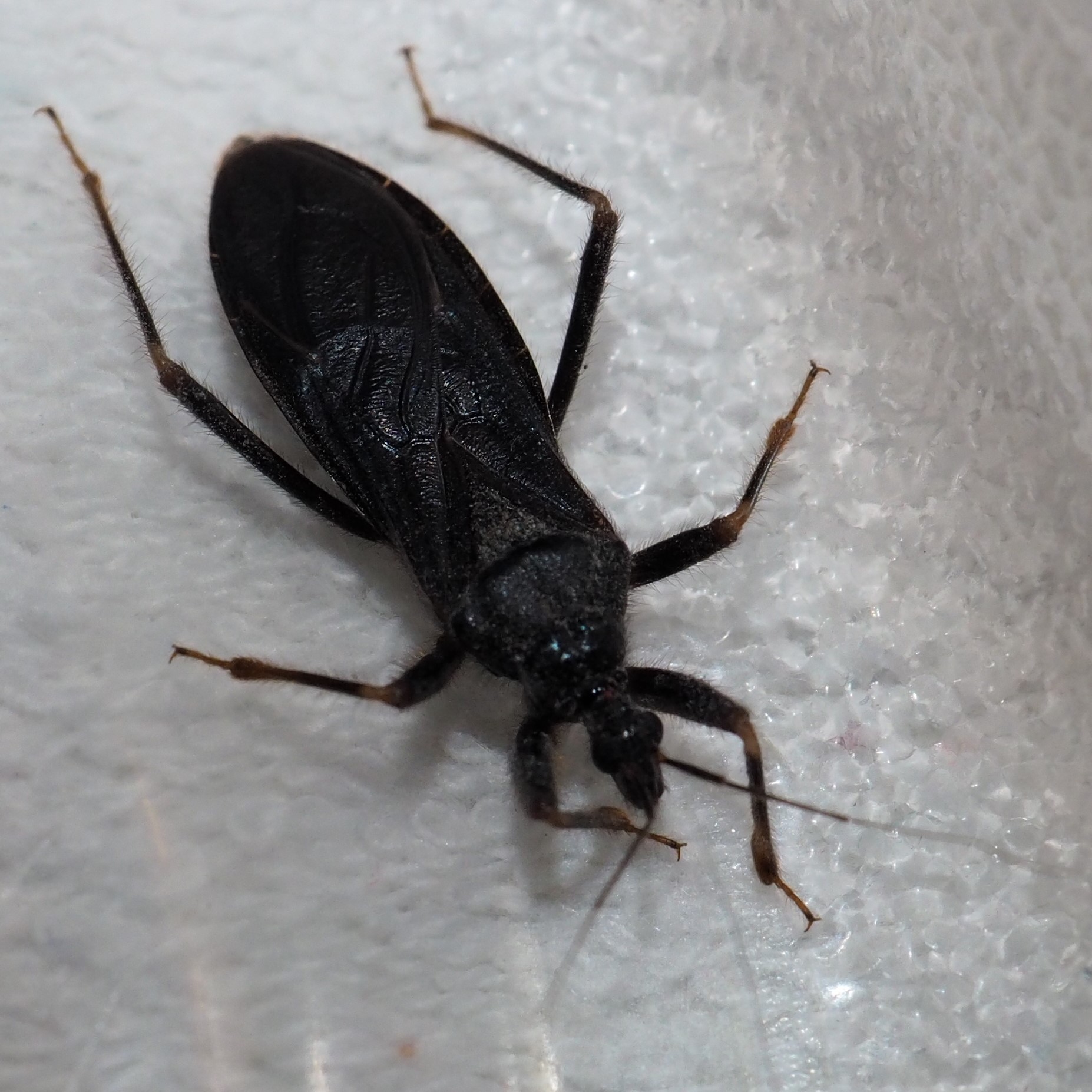
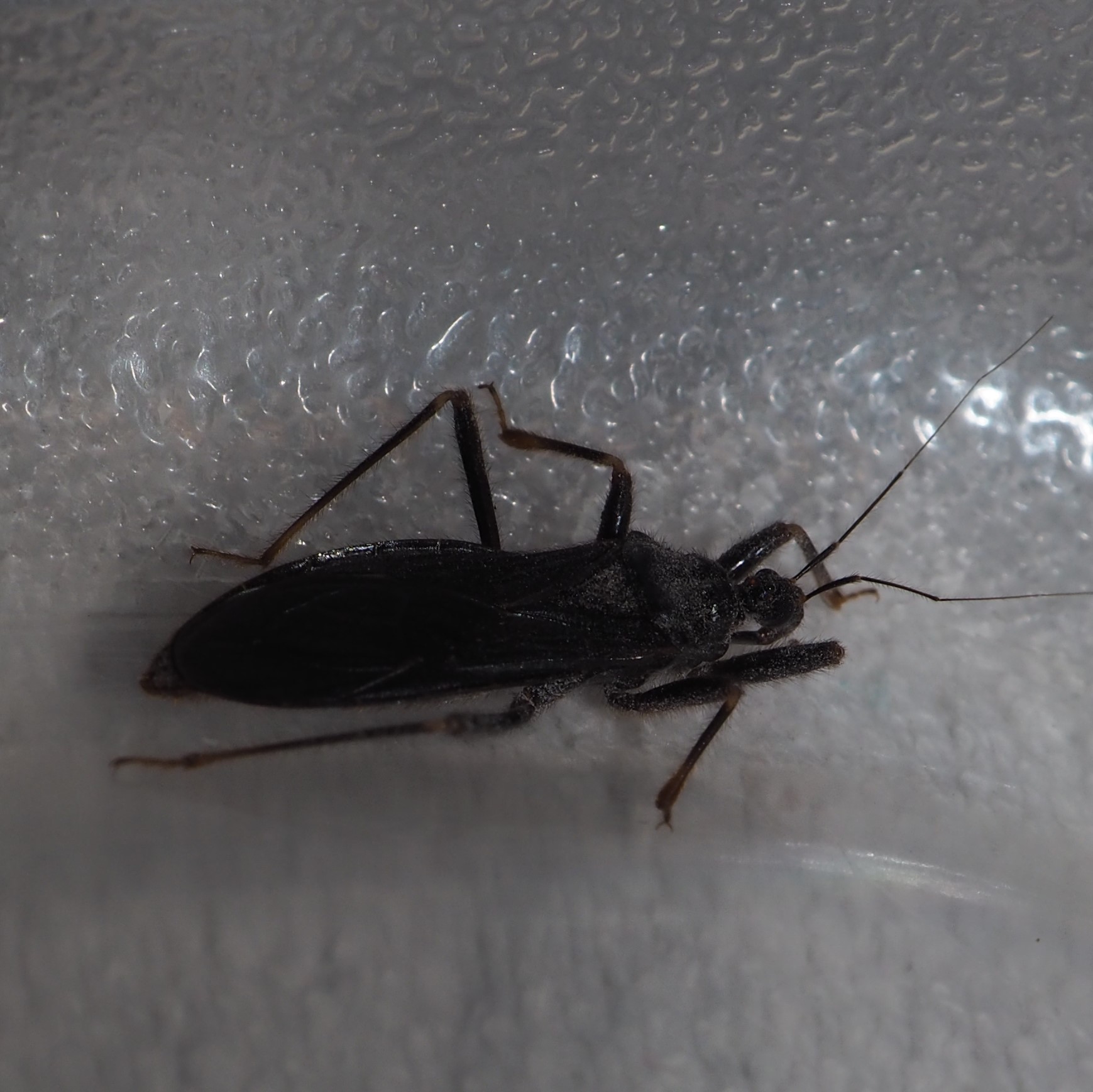
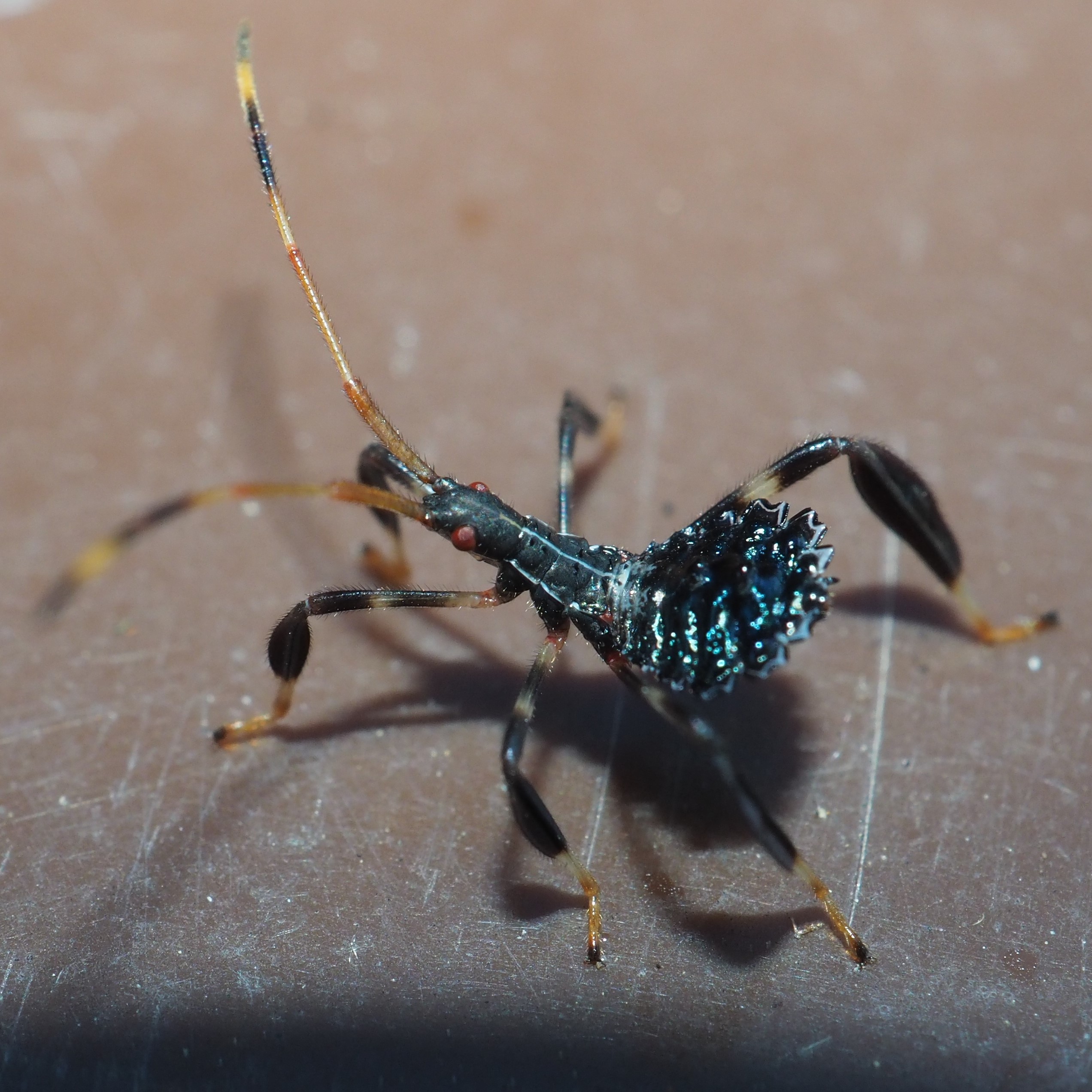
We found a few Damselflies - my favorite of course is the Ebony Jewelwing. He didn't want me to get any closer and I was beginning to trip over some raspberry vines so this is a bit farther away than would be a better shot. Parse that, linguists! This next one is a Pond Spreadwing. And I almost tripped on the Meadowhawk, the biggish Dragonfly that snuck up upon me out in the front.
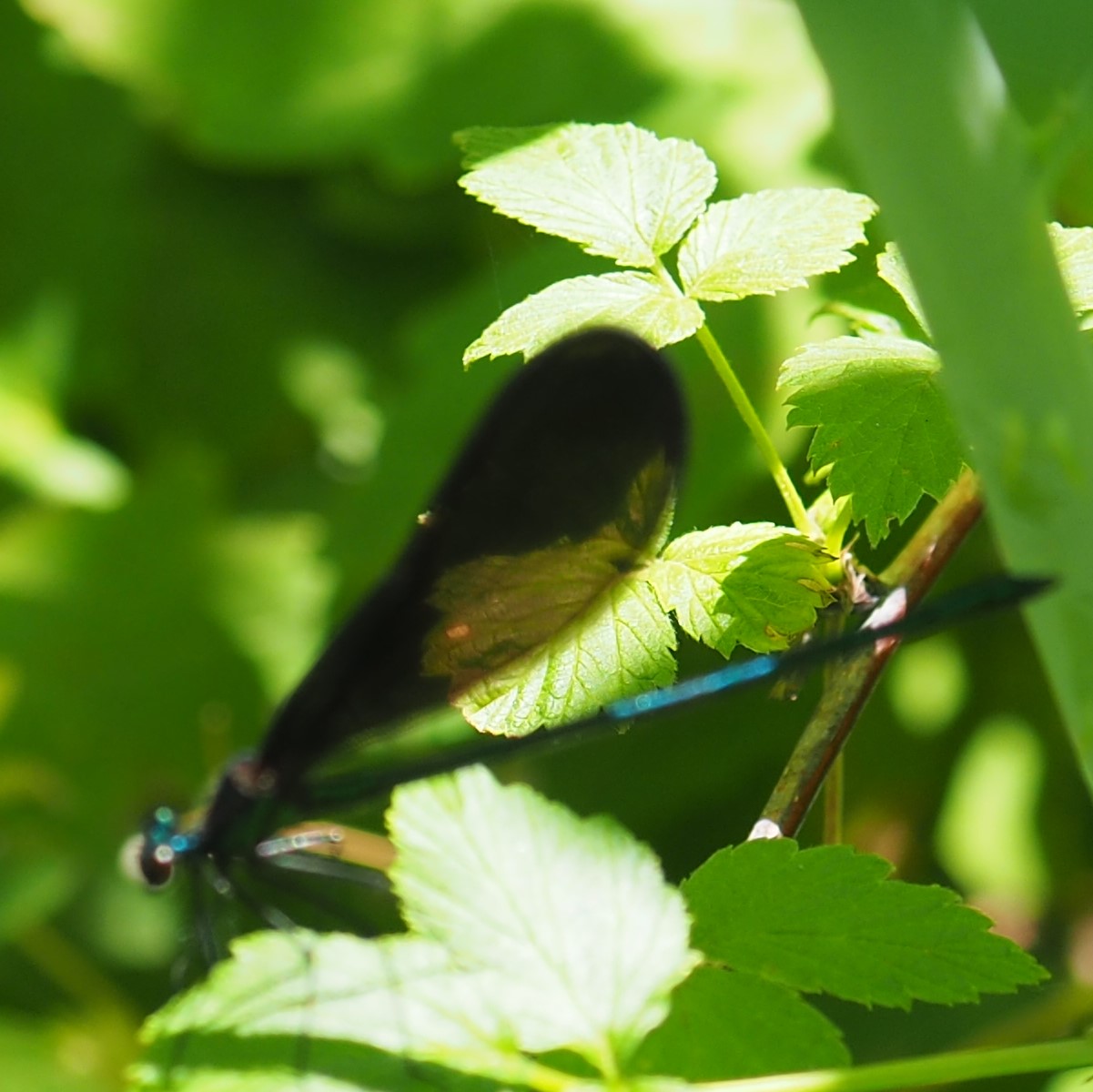
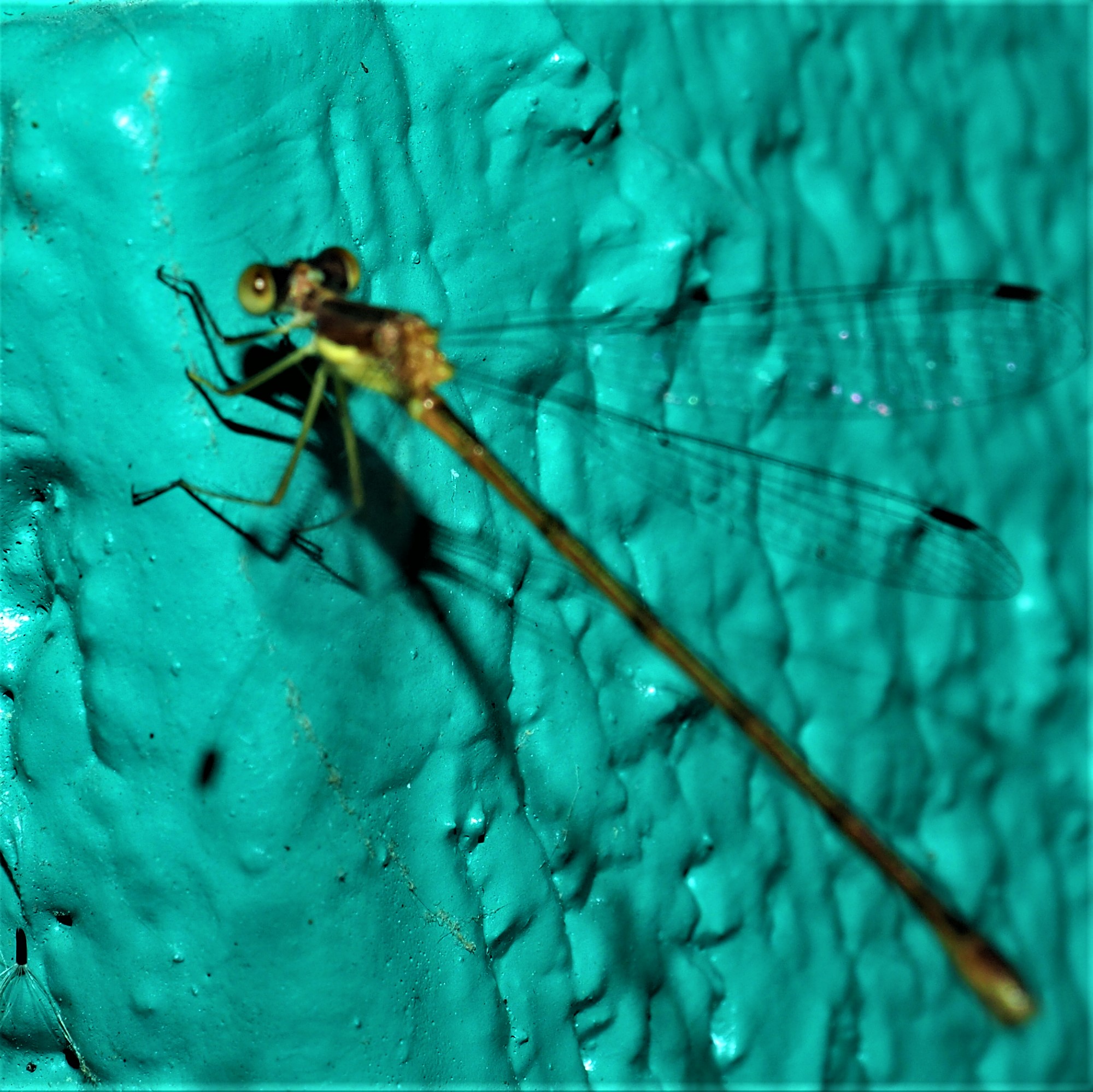
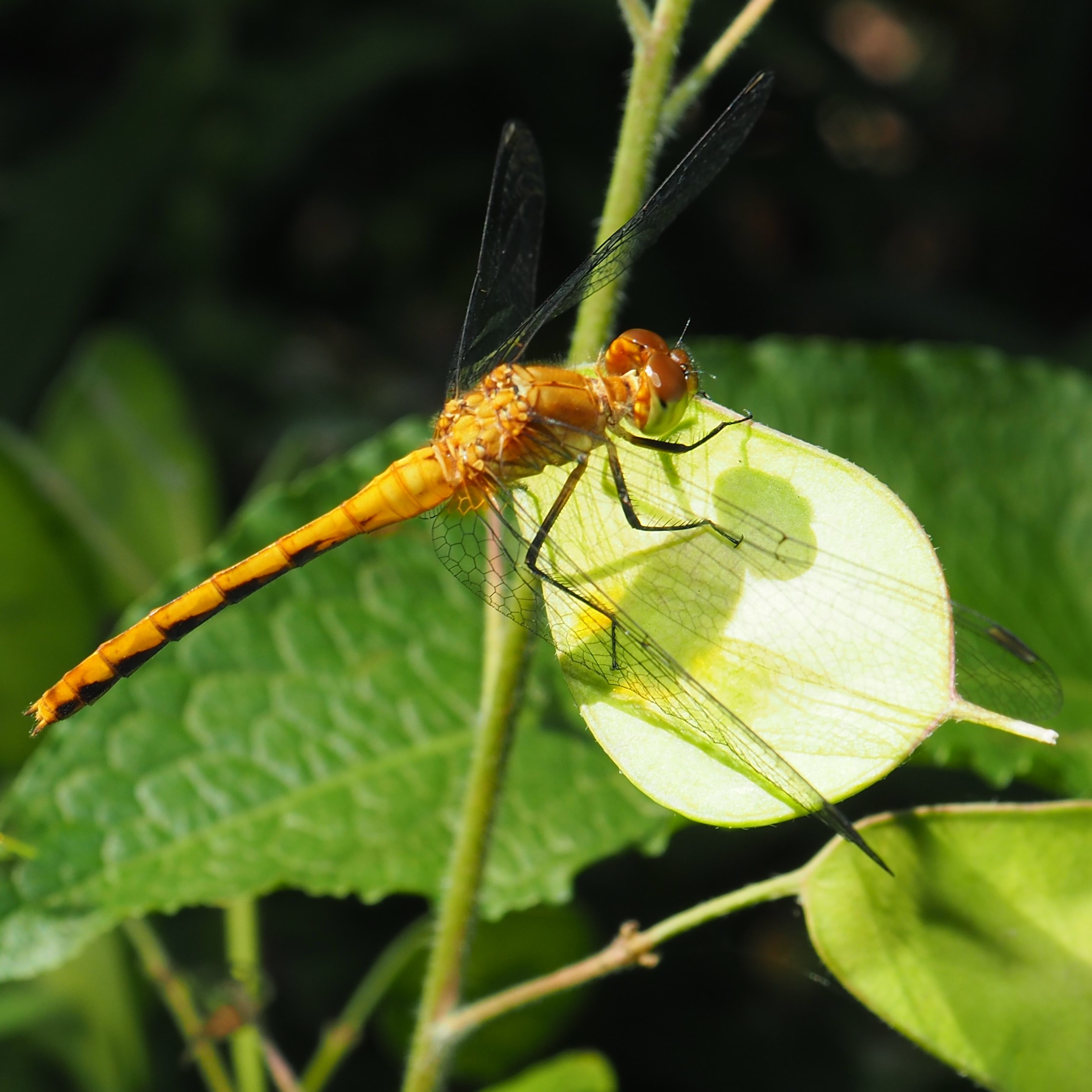
I believe that this Earwig is a European one. The Fishes are good old mutts. There are a few tiny baby Fishes in there but they are still quite shy. The big light blue one with the reddish spot behind the eye is the Mother. She used to be called Chico because of the red cheek. Note the Toadpole clan.
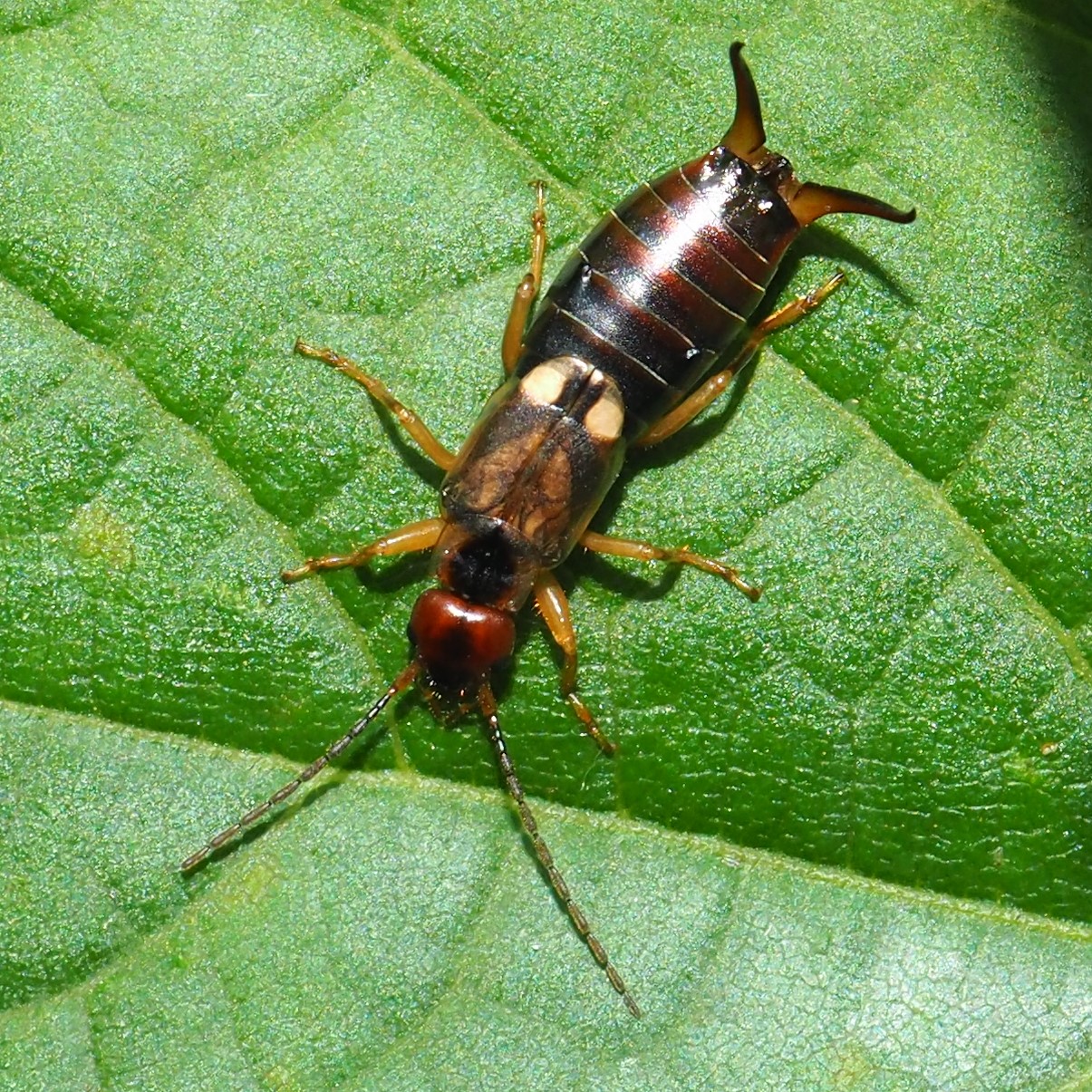
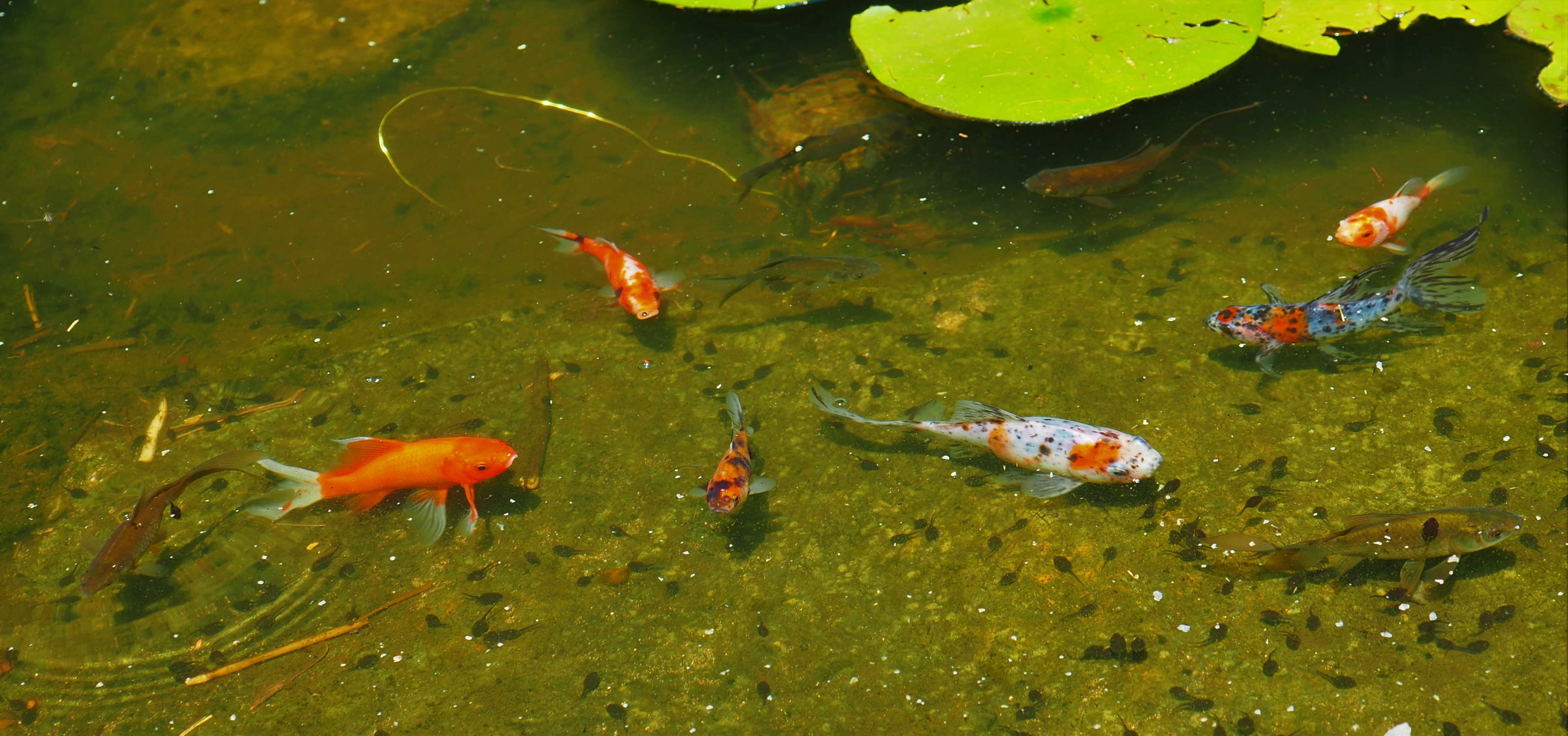
The little Long-legged Flies (first two pictures) are so lovely with their iridescence. And the handsome tiny Rust Fly, Lonicera (cylindrica?) is another piece of art.
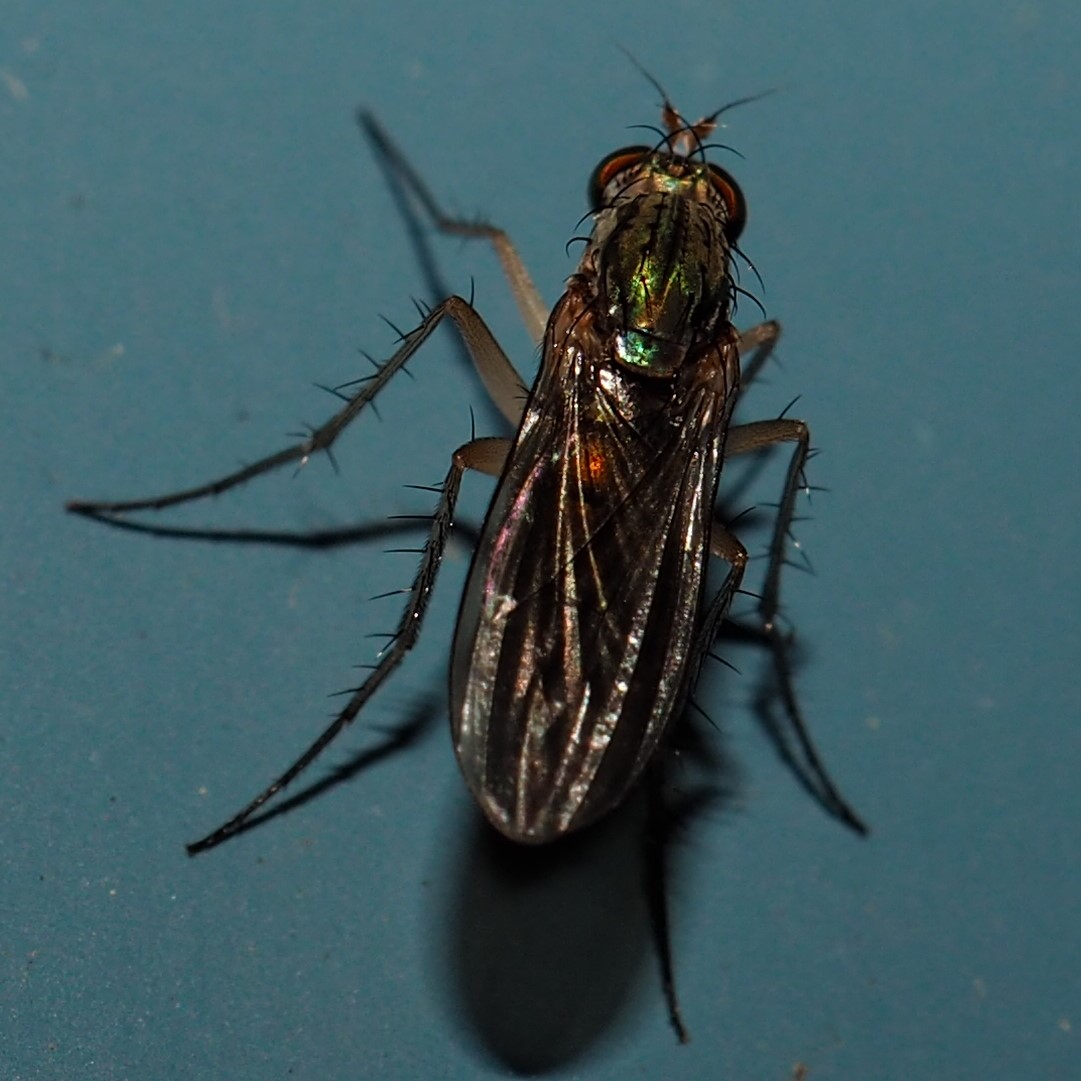
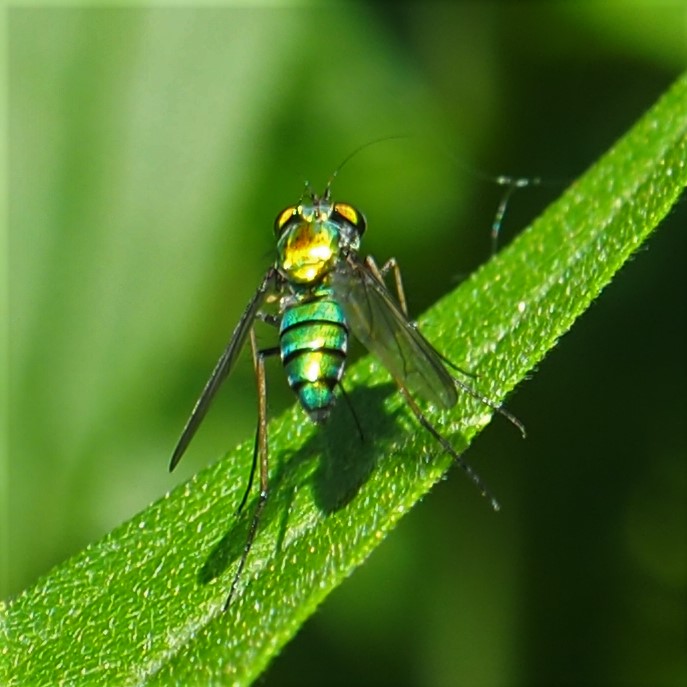
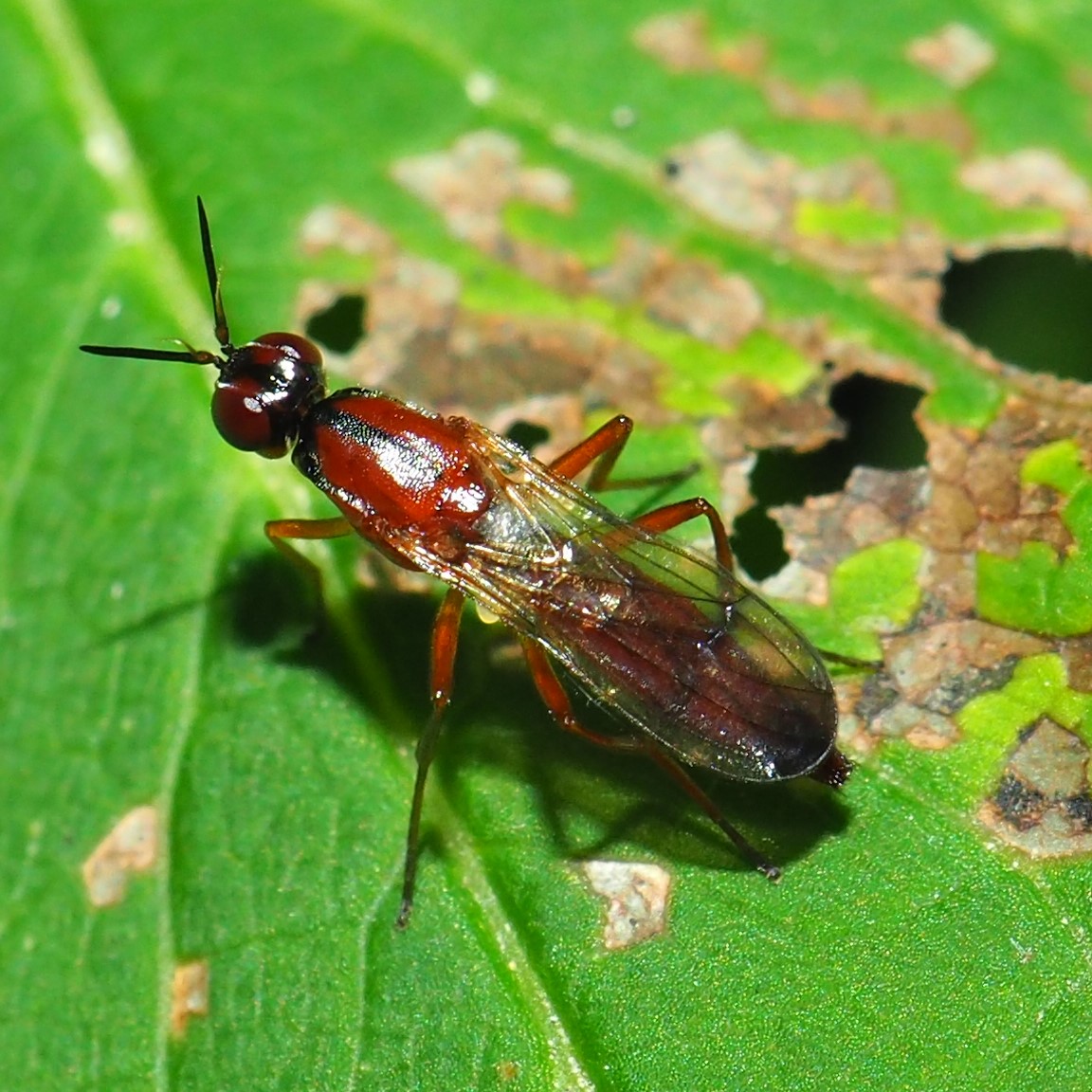
First up here is a Stiletto Fly looking sharp with its white stripes. Second is only a Lesser Dung Fly. I thought it should have got a Greater from the judges, but what can you do? Third is one of those Mosquitoes that have been so annoying.
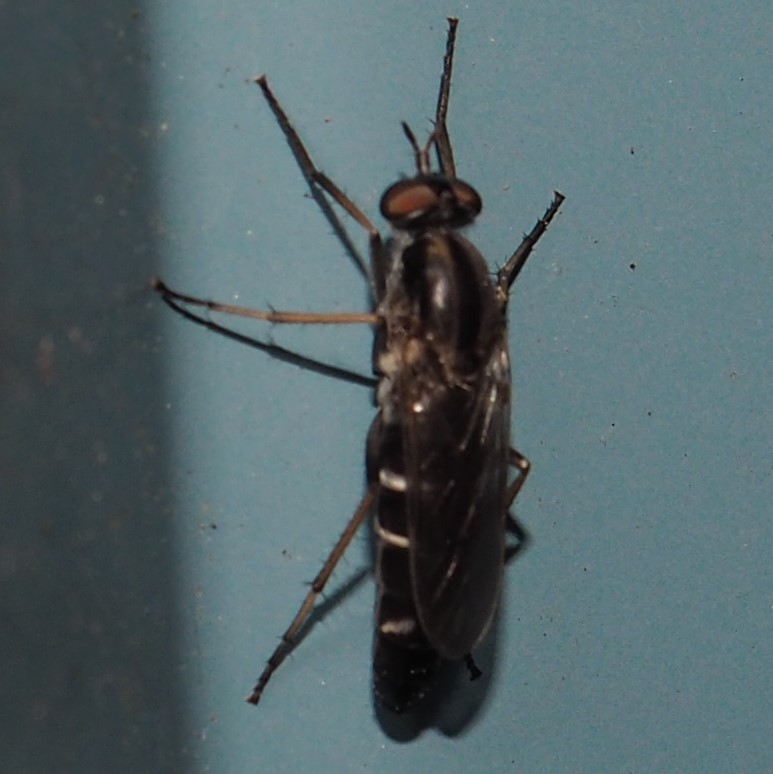
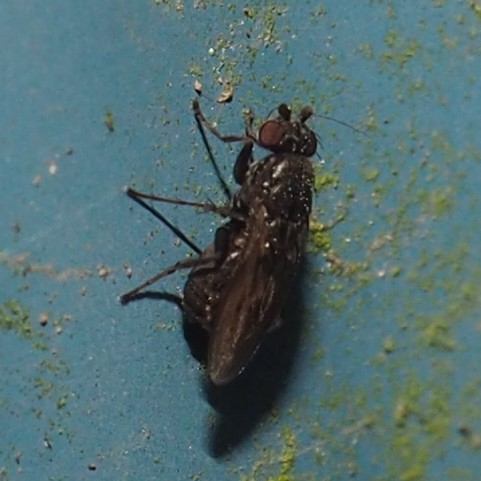
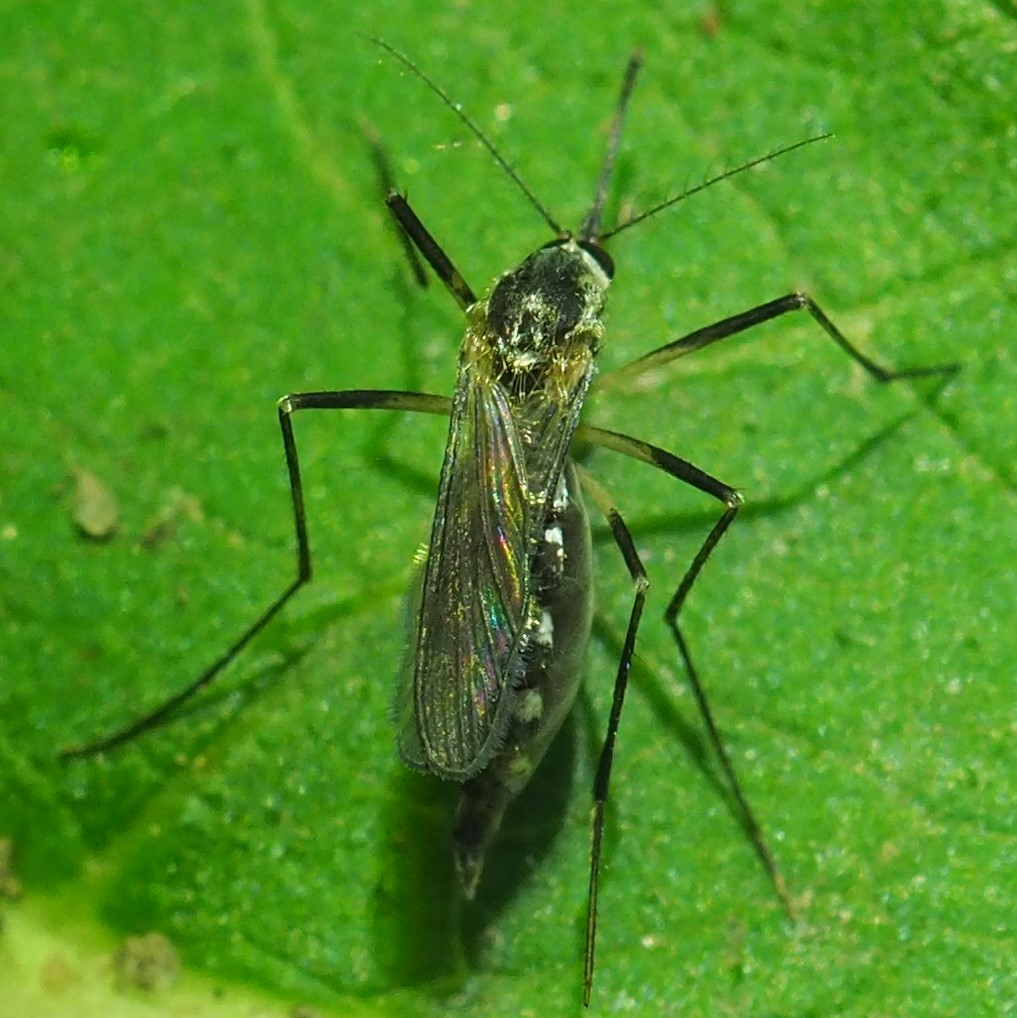
There are quite a lot of fruit flies out there now. Here are probably two kinds. Third is a Gall Midge, I'm pretty sure. They have such pretty antennae.
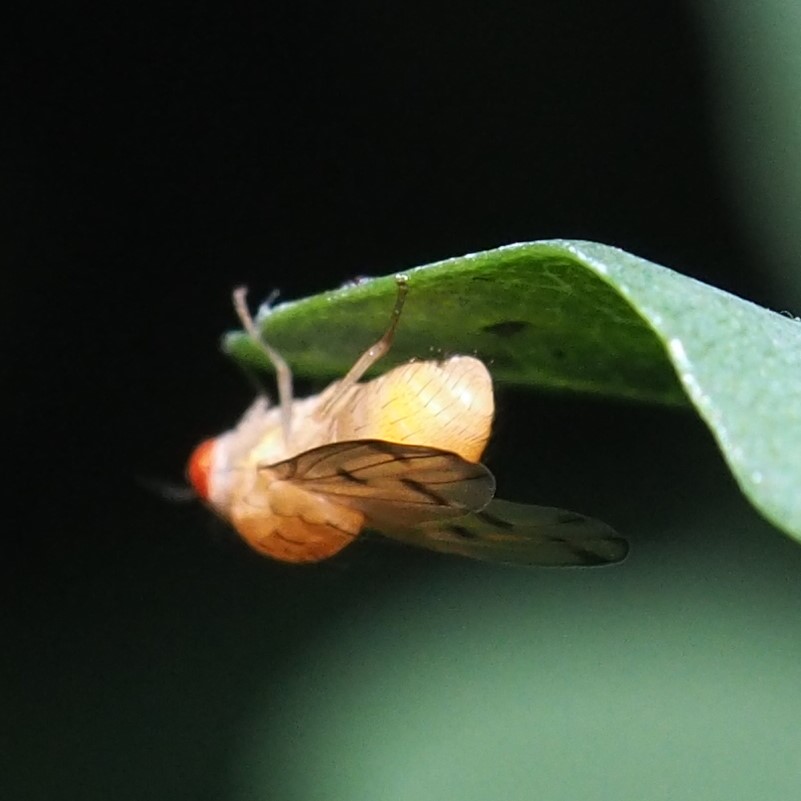
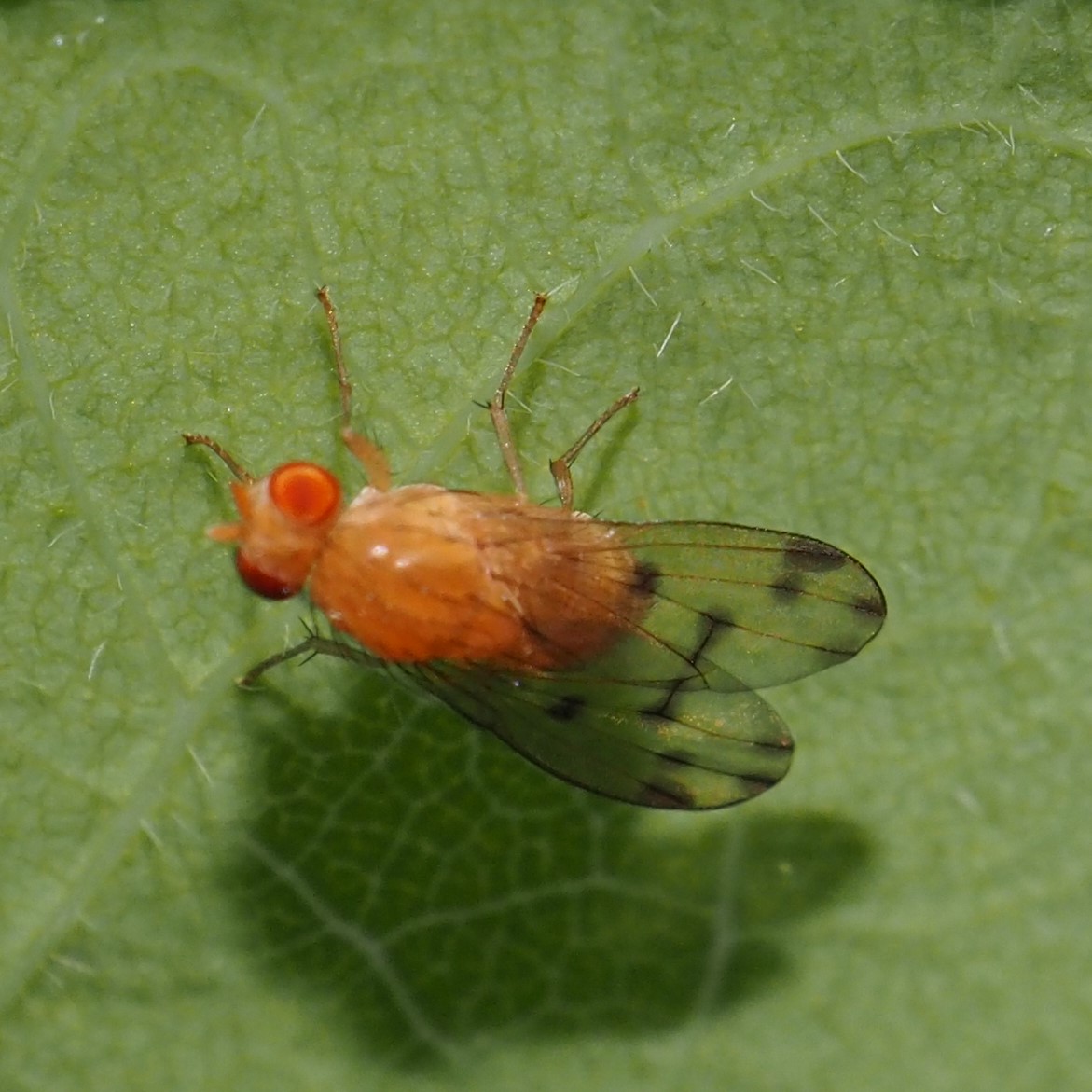
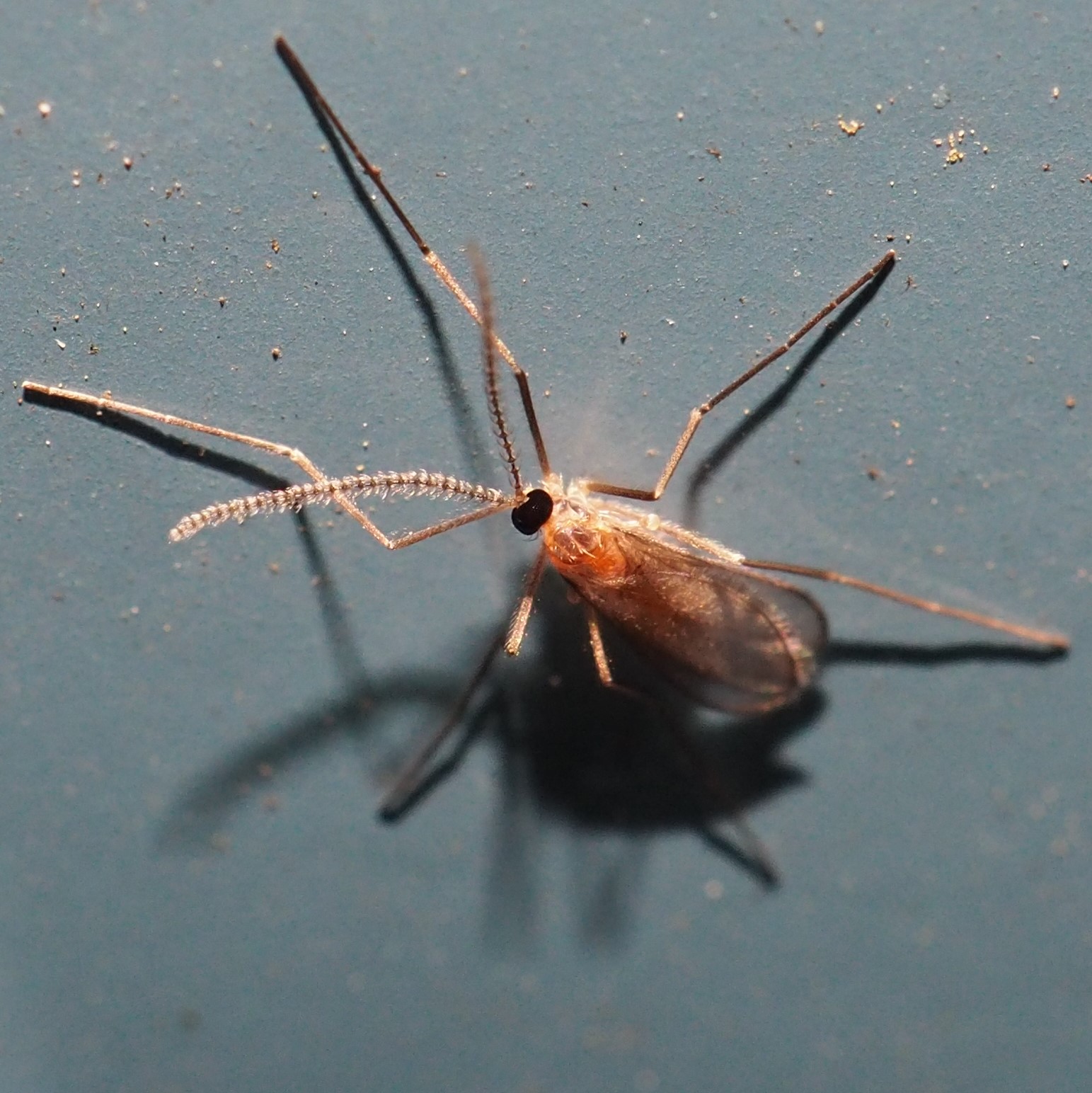
There were a few Hover Flies. They seem even smaller than usual! Here is Toxomerus marginatus. Next is another Toxomerus sitting on a Deptford Pink stem. You know how small the Pinks are!
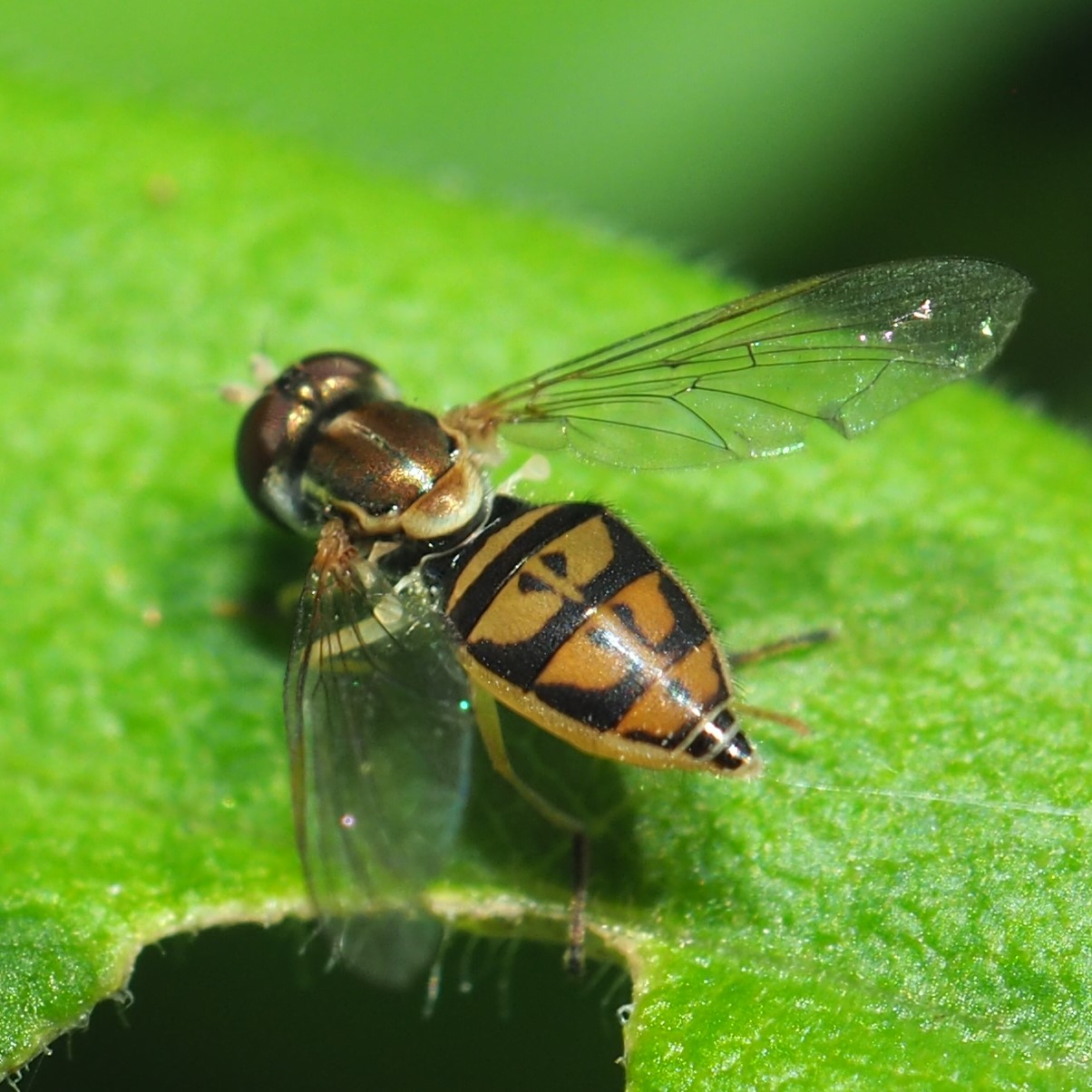
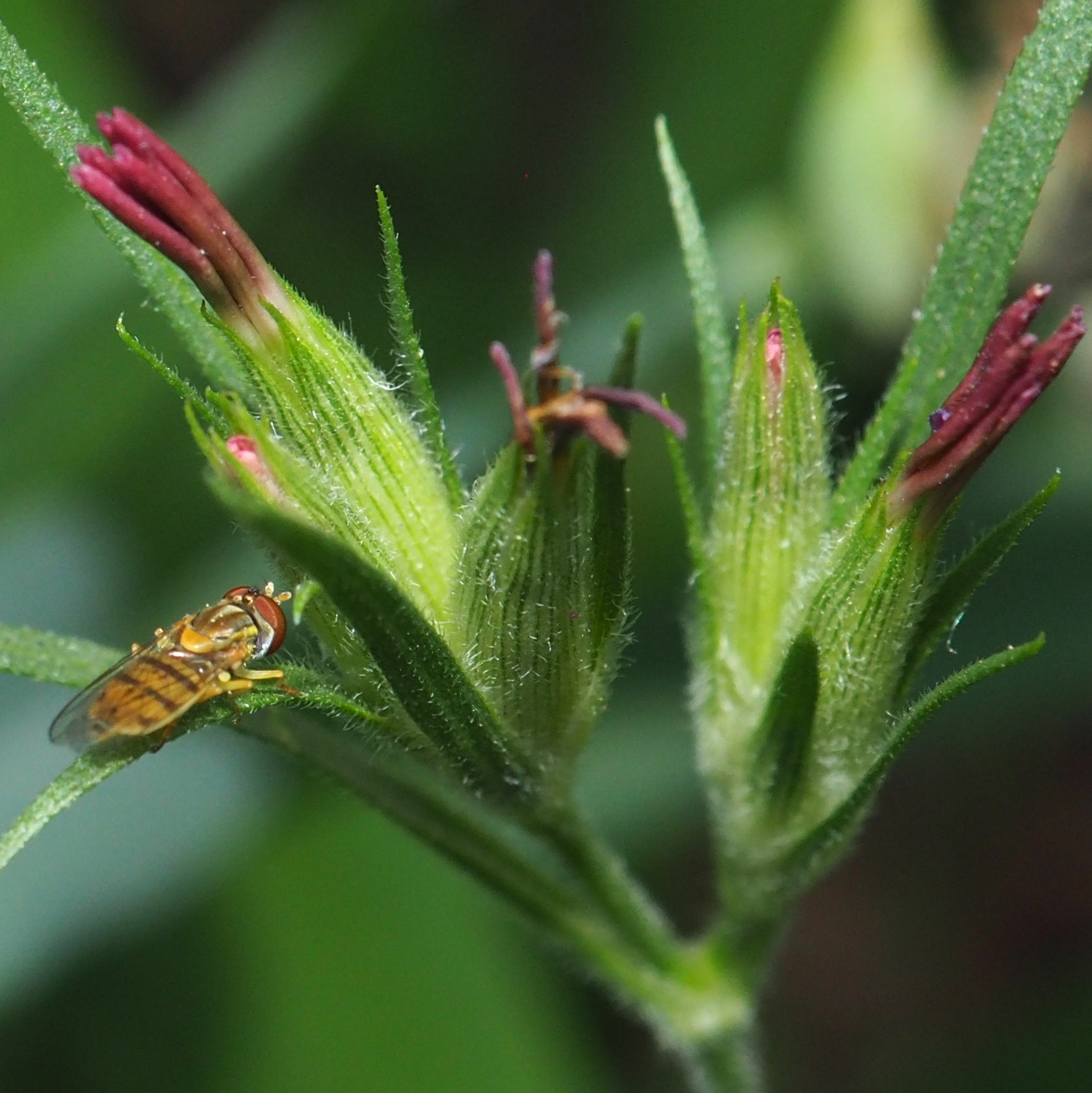
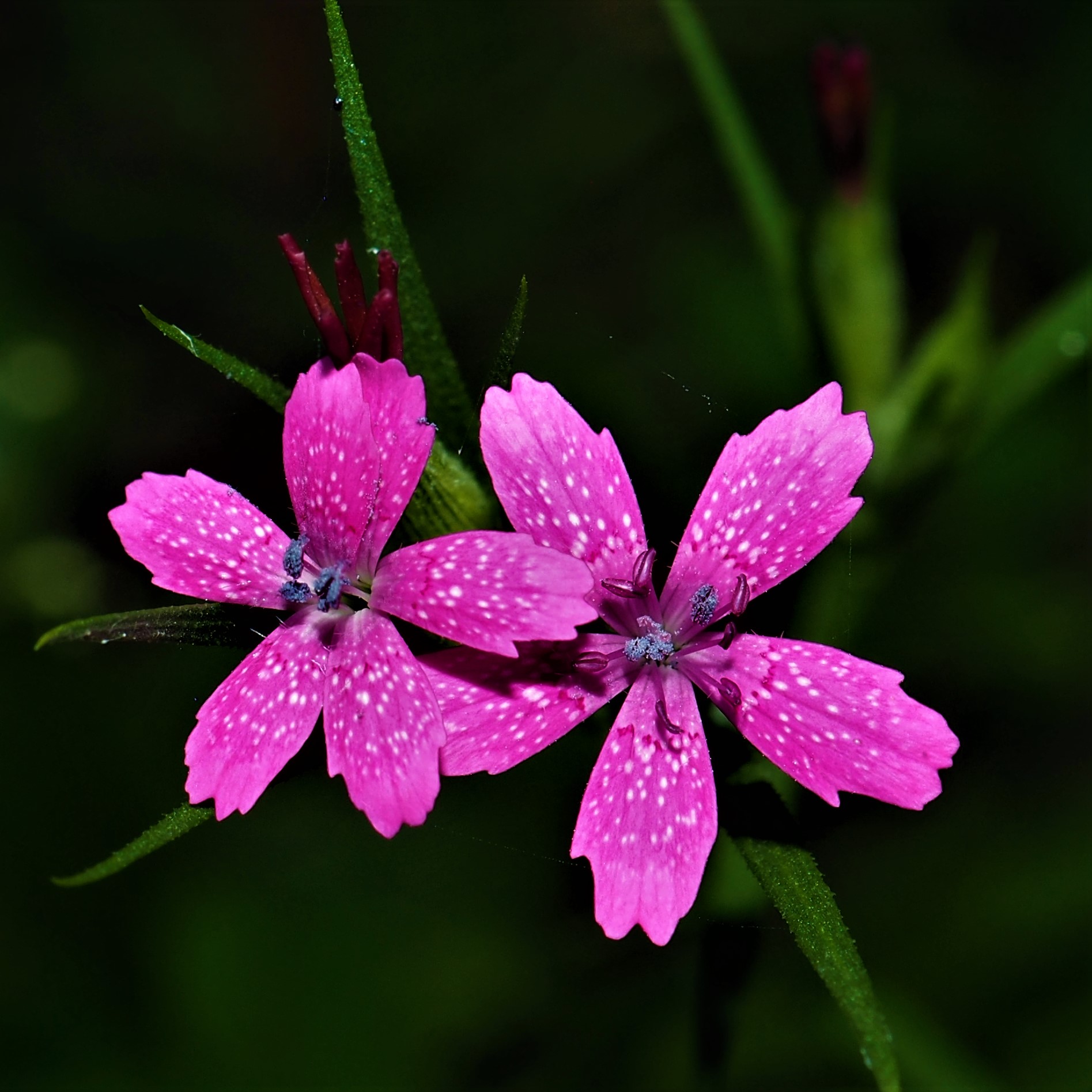
Here is one more very little Fly. It seems very ordinary but I like the way the light flashes off of it.
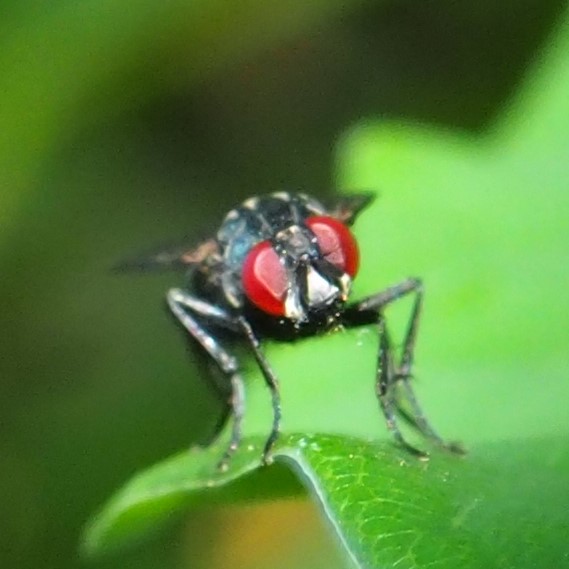
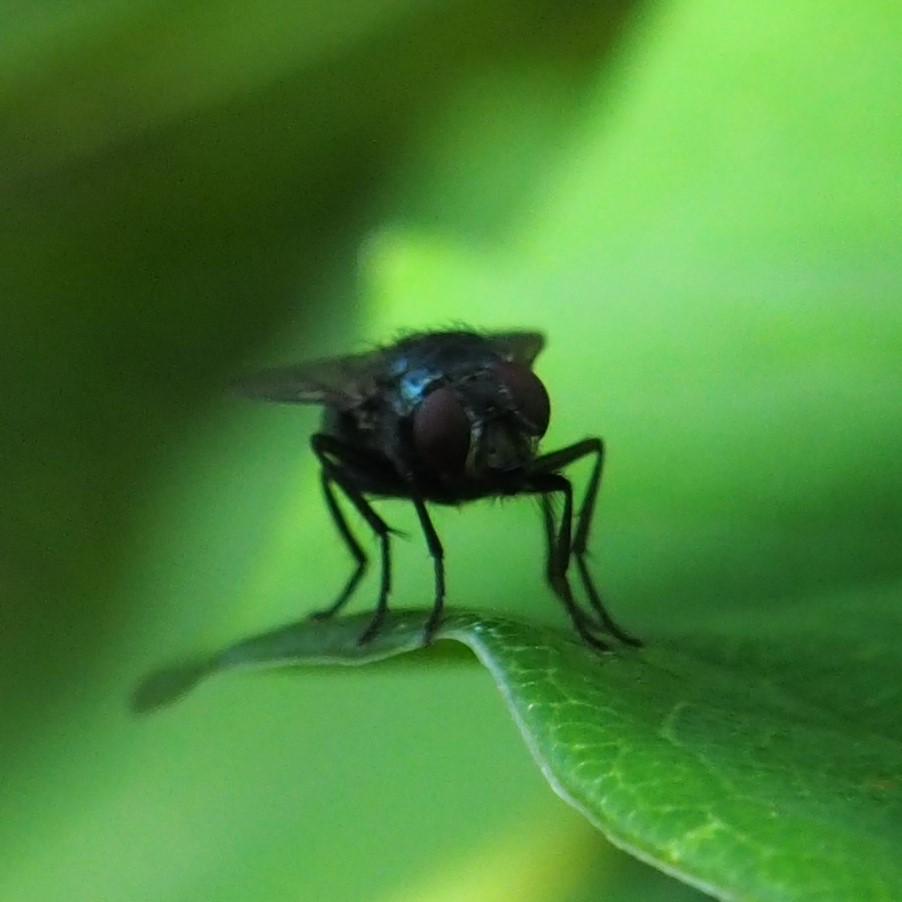
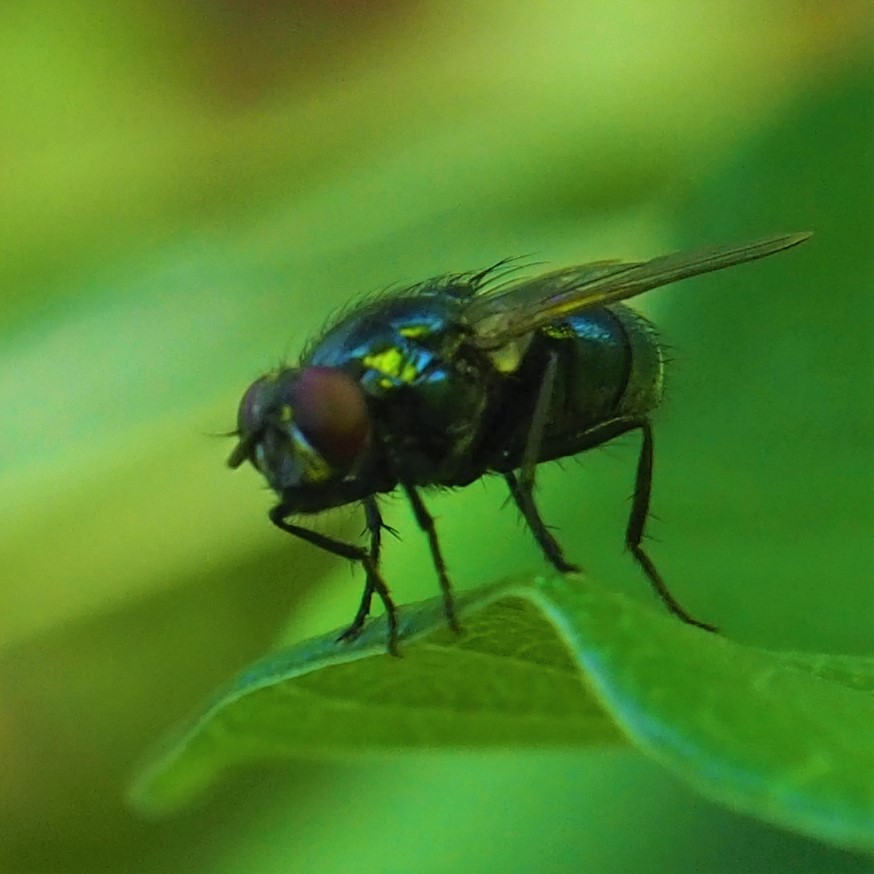
Here is our beloved Froggy. He has really found his voice. If two people are chatting quietly, he will begin to join in. Sometimes if I am muttering to myself he will also add his opinion. He really makes the pond perfect.
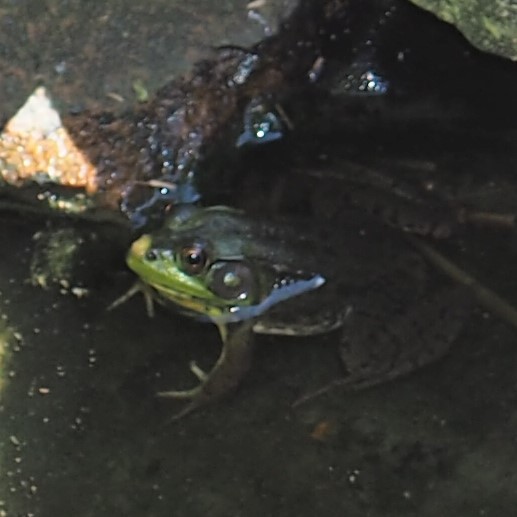
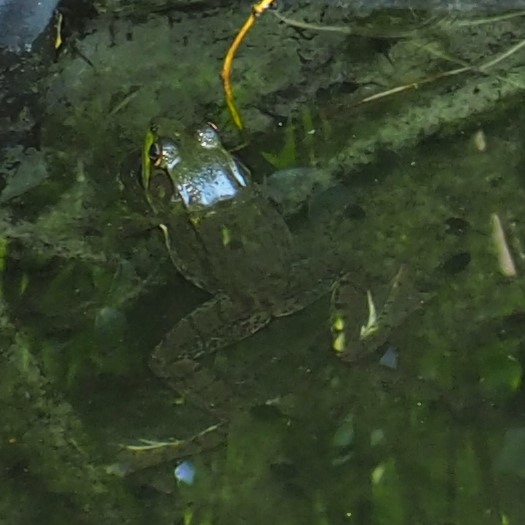
This black Moth with the wrinkled collar is the Grapeleaf Skeletonizer Moth. I should check the Grape leaves. The second very small Moth is probably the Three-spotted Fillip, Heterophleps triguttaria. Third is another even smaller Moth.
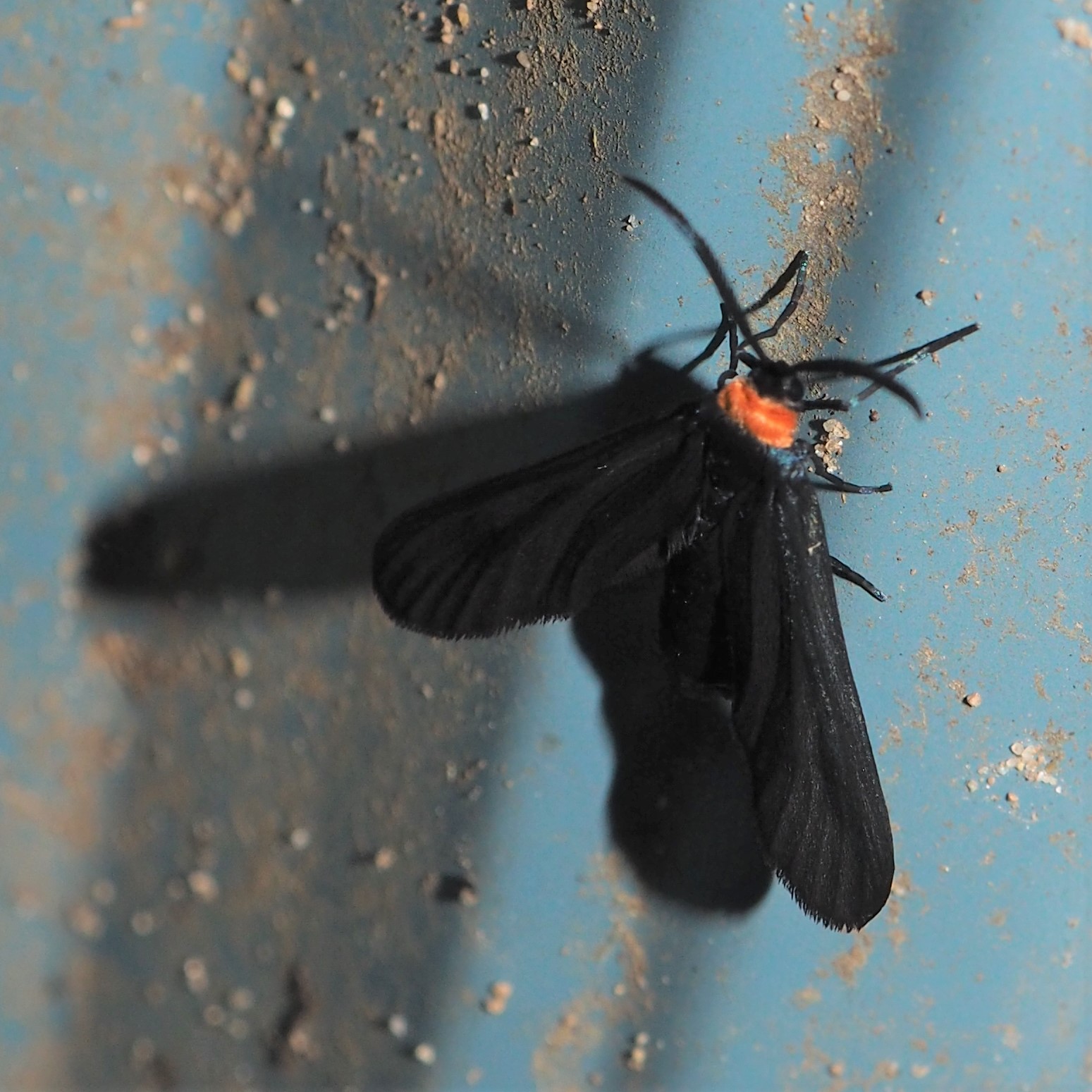
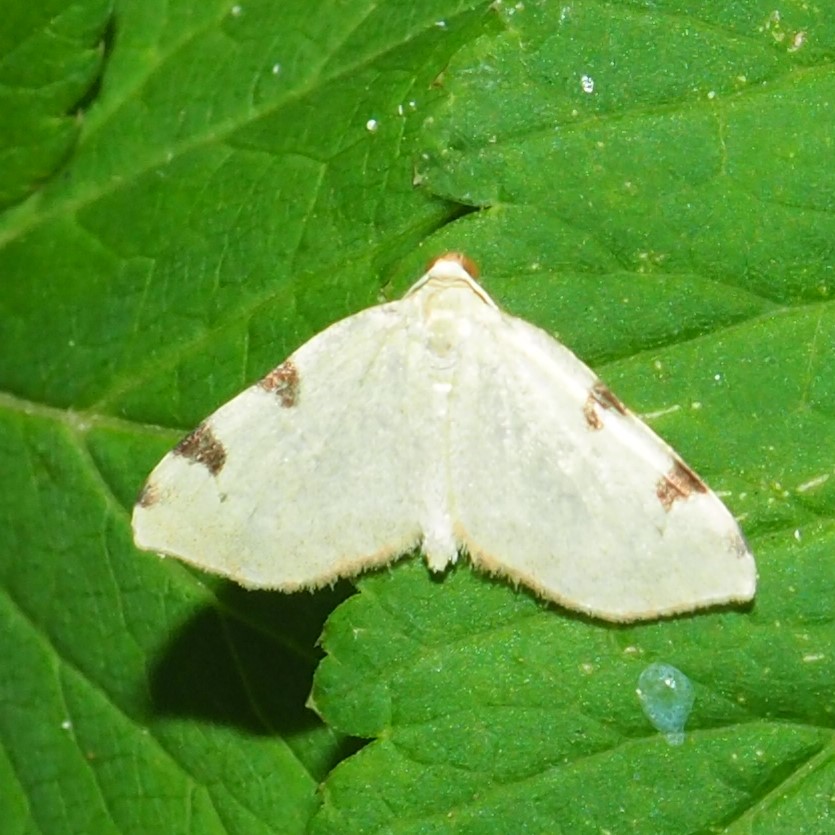
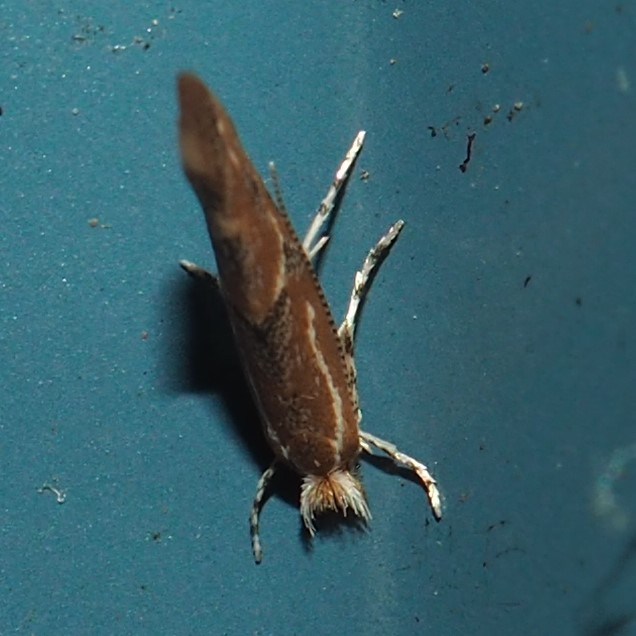
Since we skipped over the category of Caterpillars, here is a nice one with a funny name: Hitched Arches, Melanchra adjuncta. At first I thought it was one of the Hornworms, but it didn't have a horny tail. The next one was on a brick in the front porch wall. It's a White-marked Tussock Moth, Orgyia leucostigma. Third is a Gypsy Moth Caterpillar, which is either starting to pupate or is being spun into a Spider wrap. Fourth is a light-colored Looper, looping its way along a leaf.
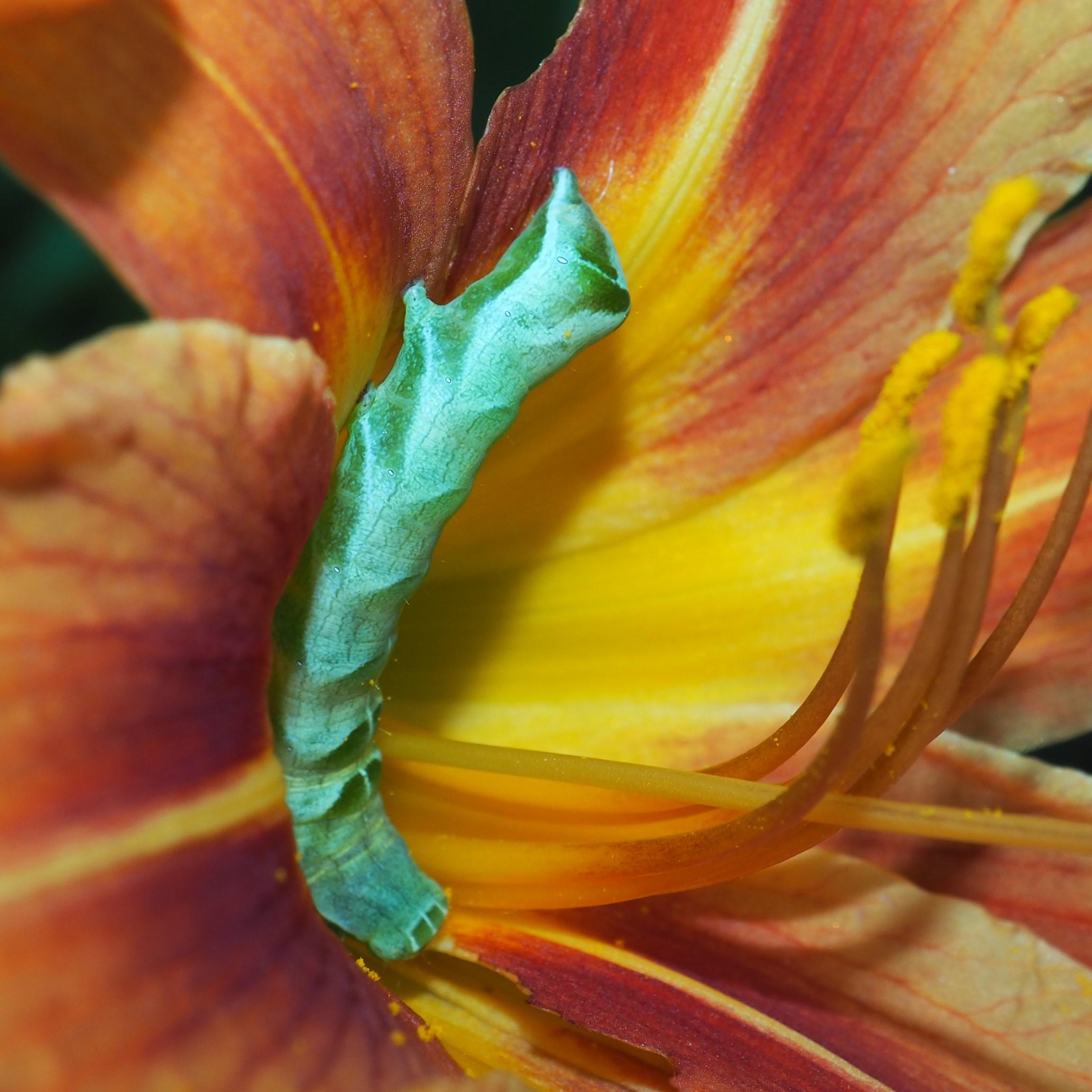
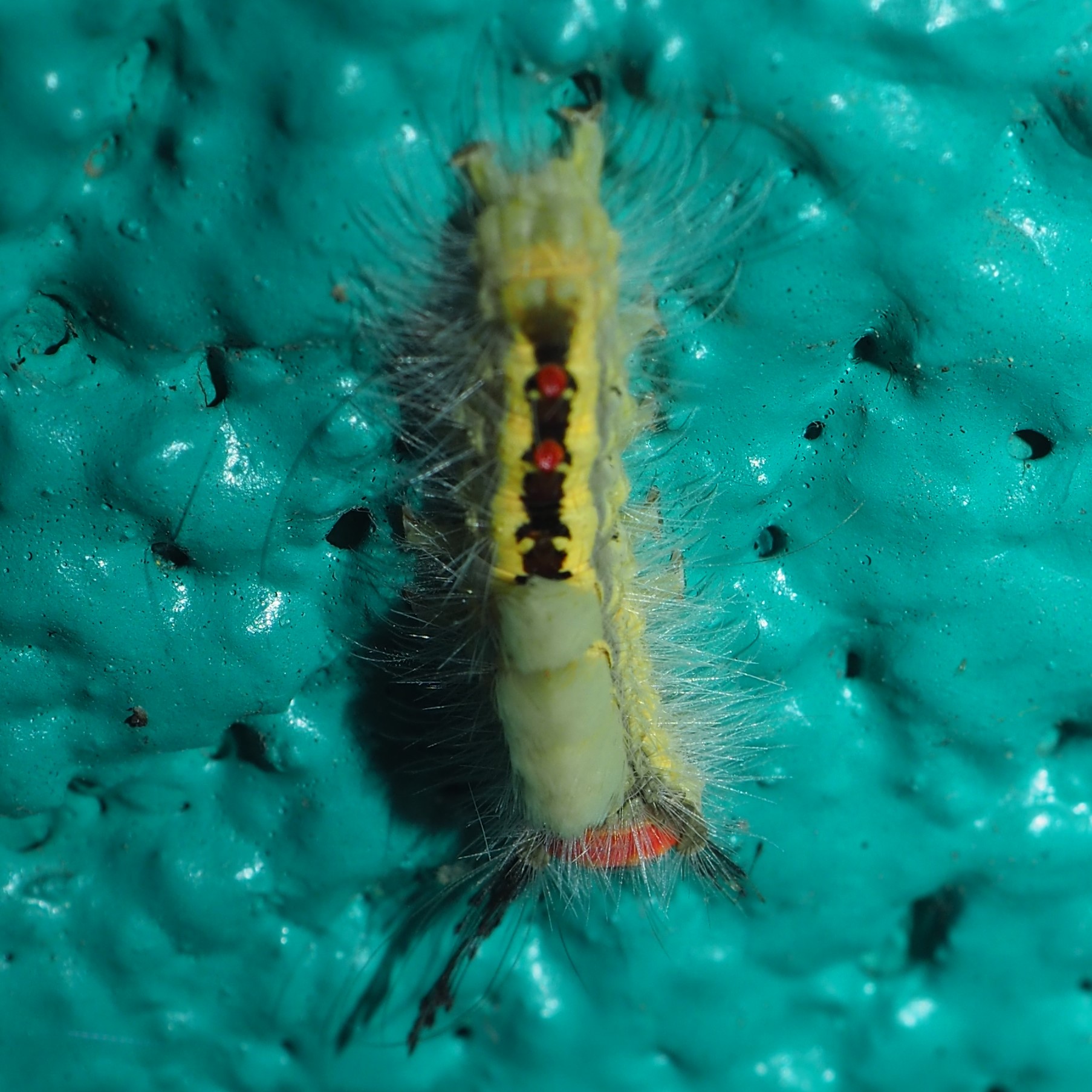
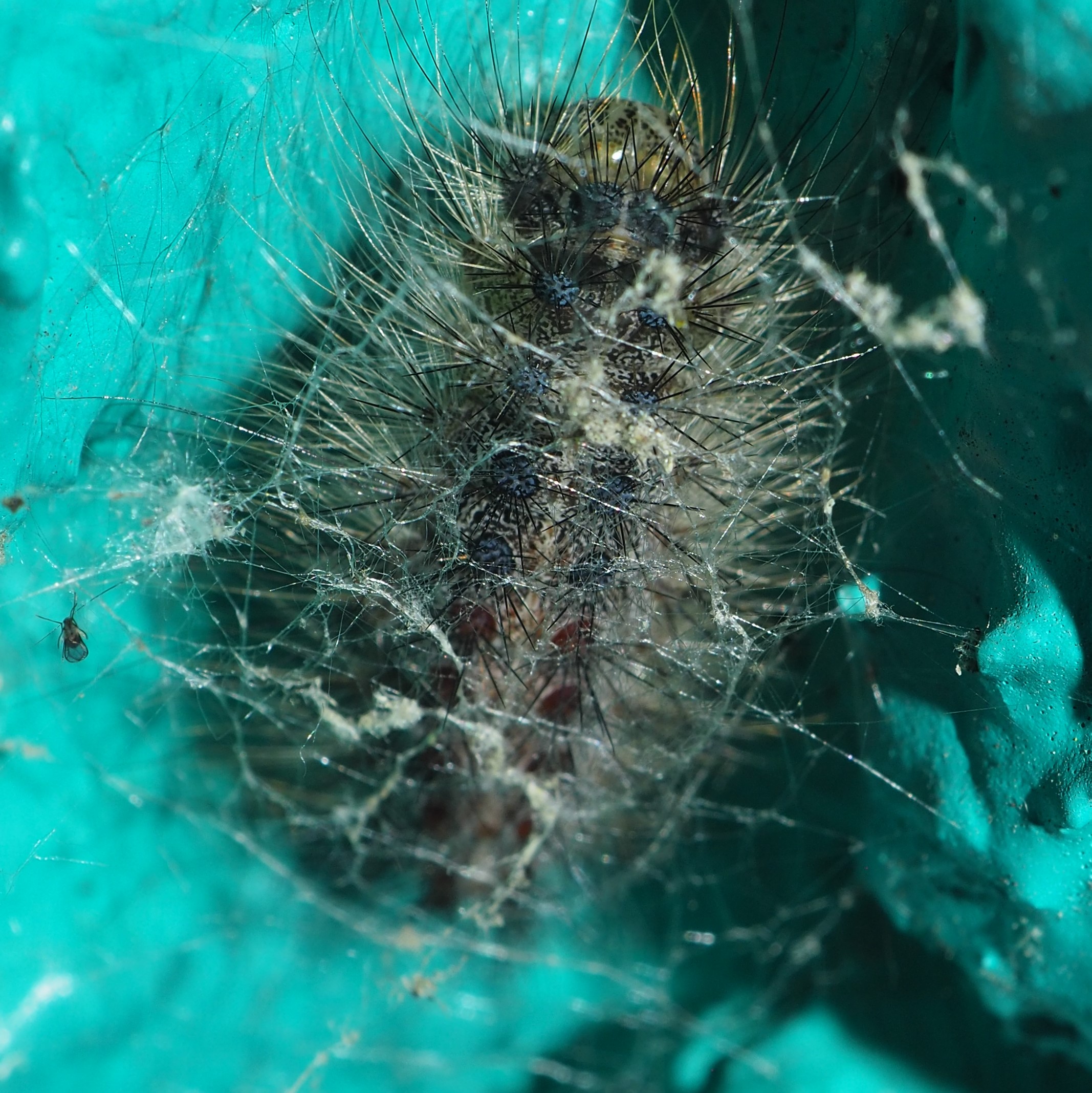
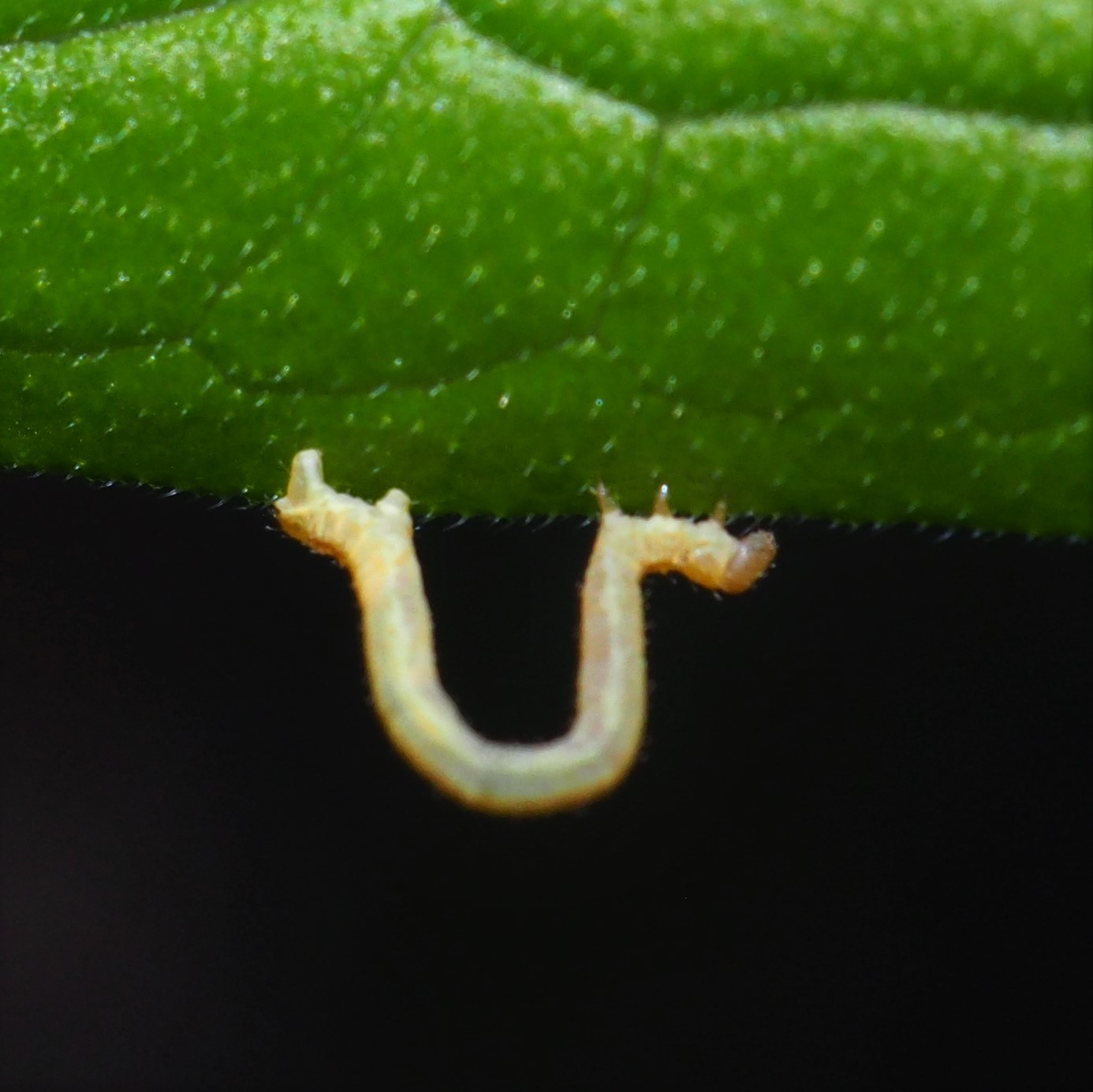
Here are some Mystery creatures. Some of them were taken from underneath or another unusual angle. I thought at first that number 1 was a Fly, but I'm not sure now. Now I think number 3 really is a Fly.
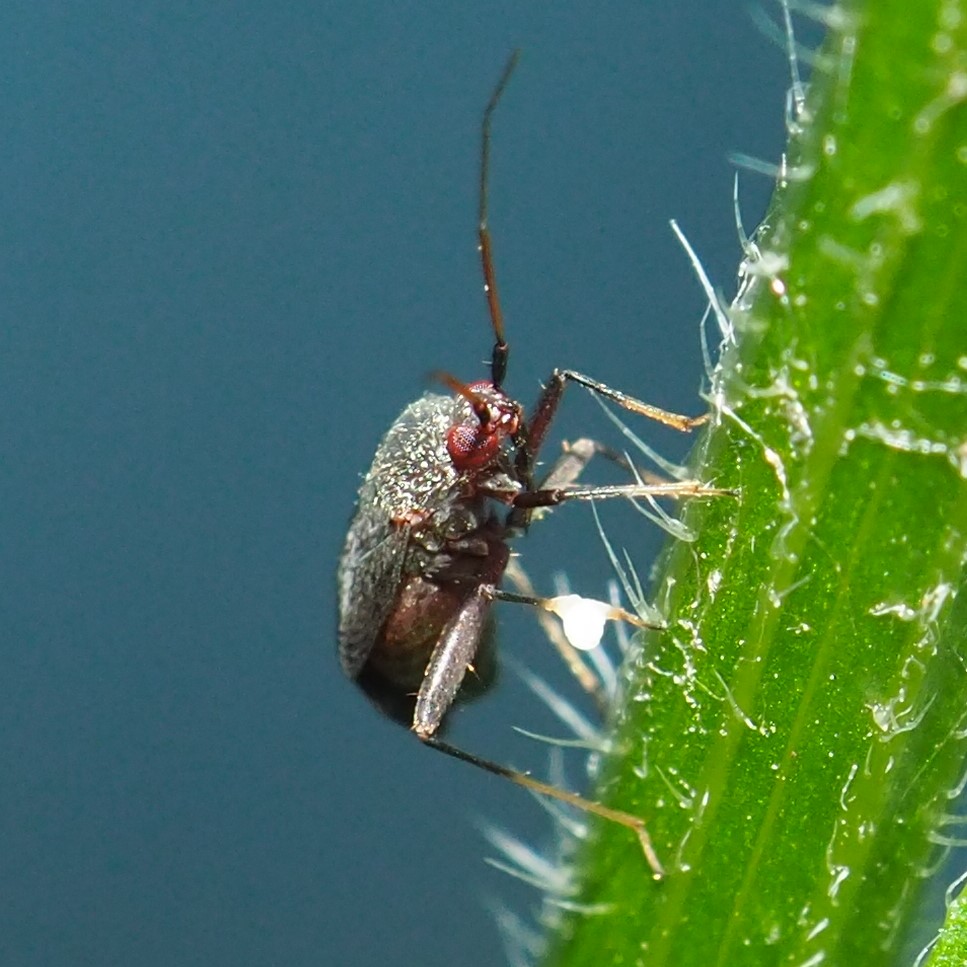
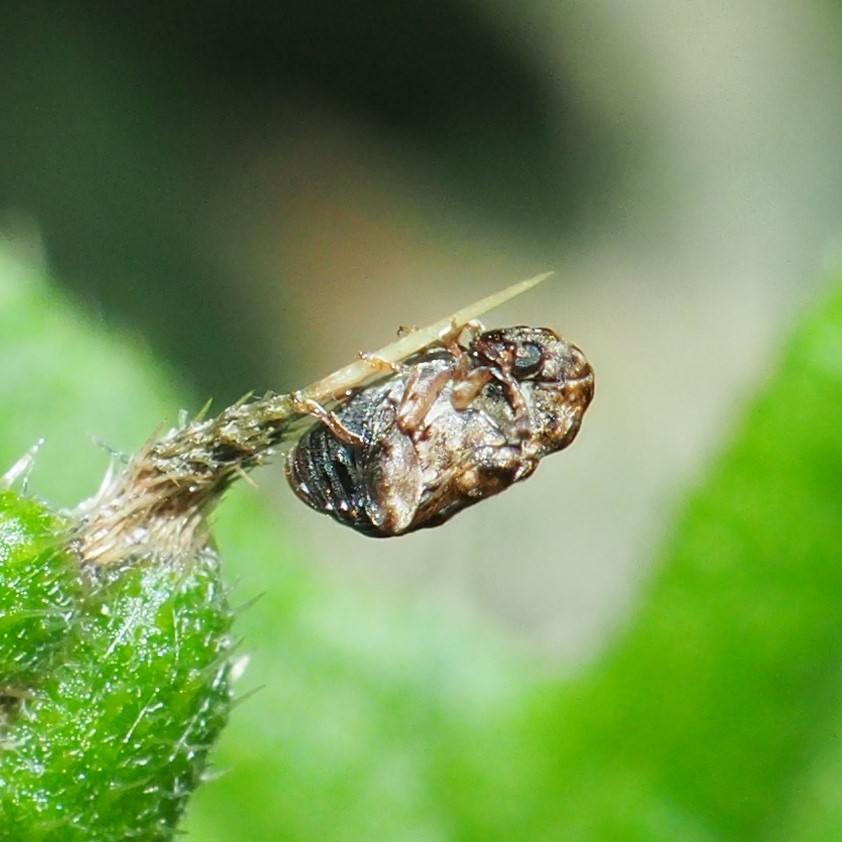
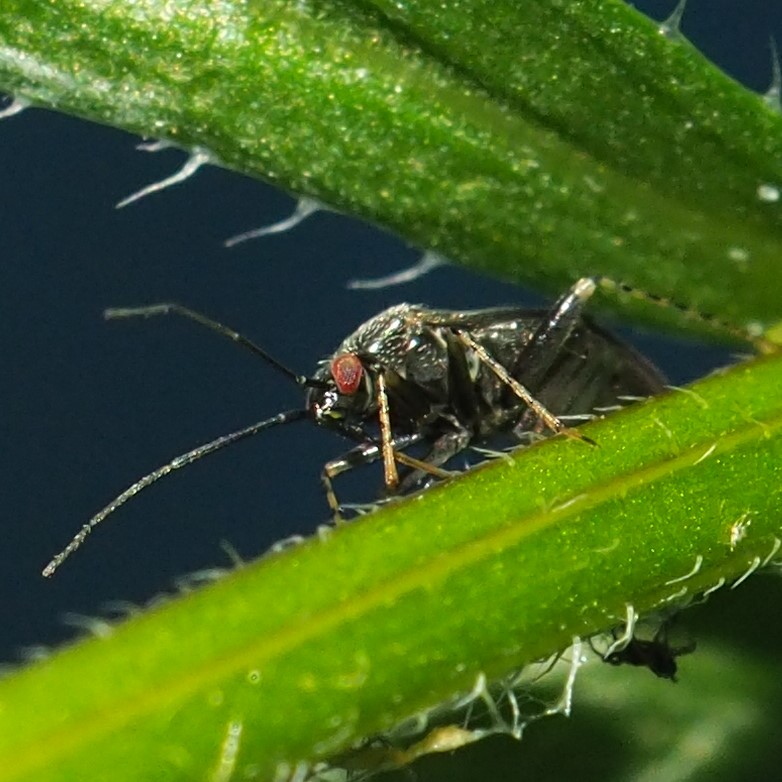
This creature seems to be something like a bagworm but with no fake bag. The end seems to protrude and maybe catch some prey or other. Flash! I submitted this one to iNat and Even Dankowicz says it is actually the larva of a Hover Fly. No kidding. Apparently they are carnivorous - this third one is eating an aphid. I tell you, this is a never-ending puzzle.

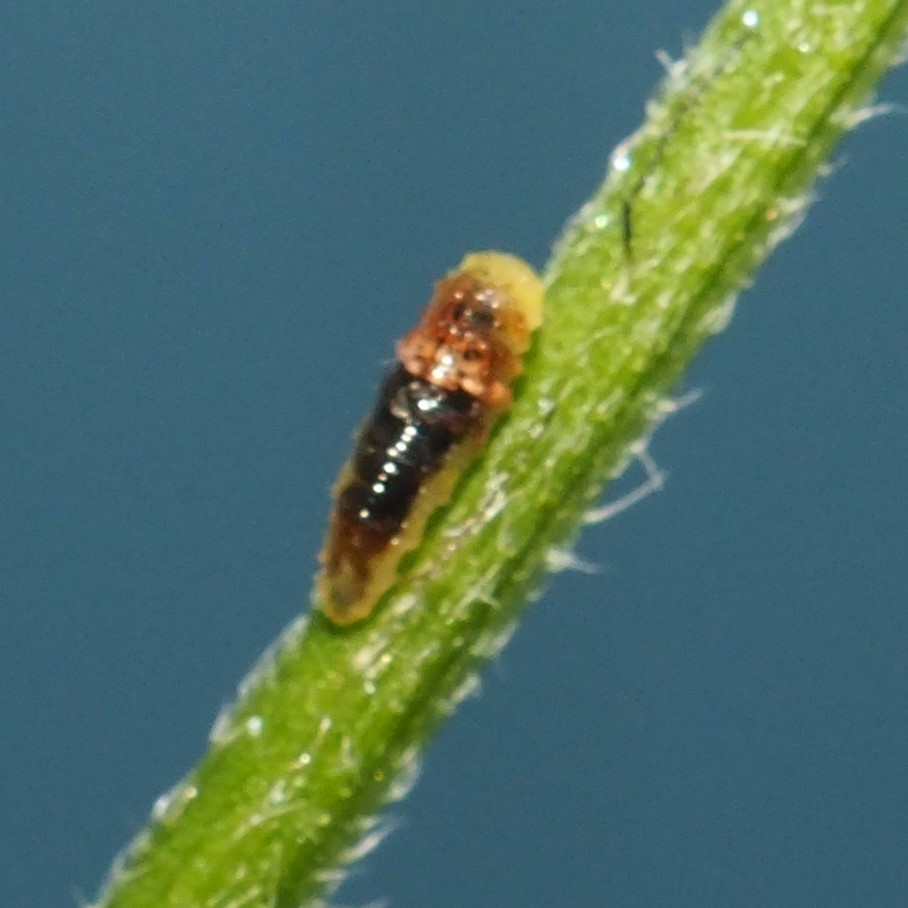
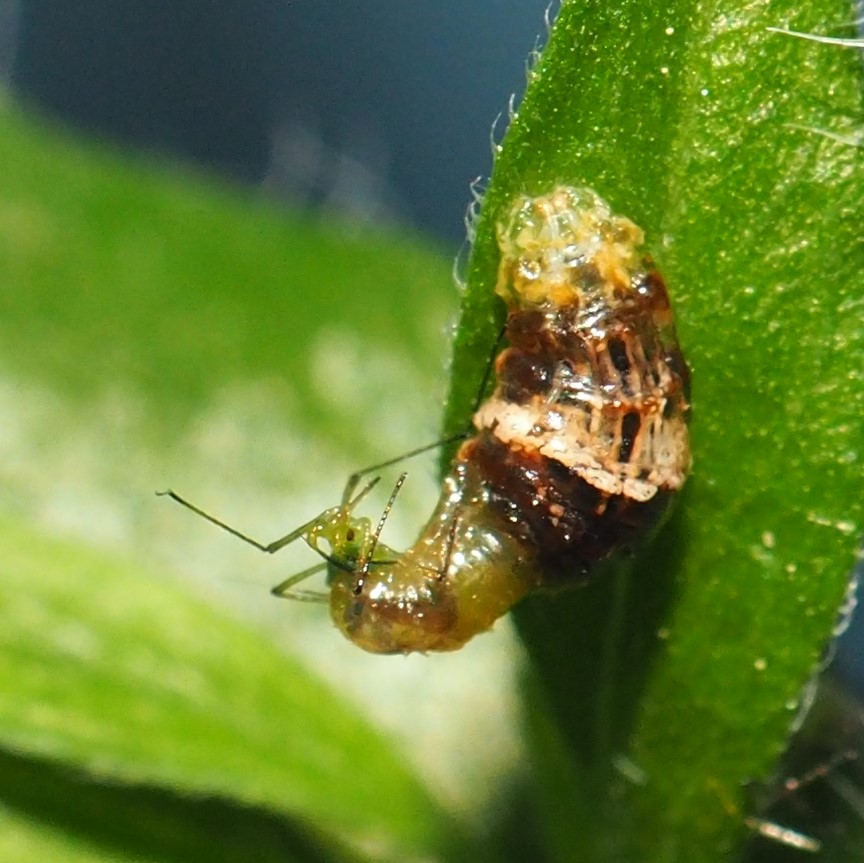
I decided to make a new heading Orthoptera for Crickets, Grasshoppers and Katydids. That way I can introduce the various members right after the Mysteries. First is a minuscule creature that looks like a baby grasshopper. It's actually a Cricket, and is in the subfamily Hapithinae. Next is one that we have seen before in the front yard, and is probably a Cricket. Third is a Scudderian Bush Katydid. If you remember the colorful little one of these from an earlier blog, you might be convinced from the colors that haven't completely disappeared from this one that it is just a bit older but the same kind of creature.
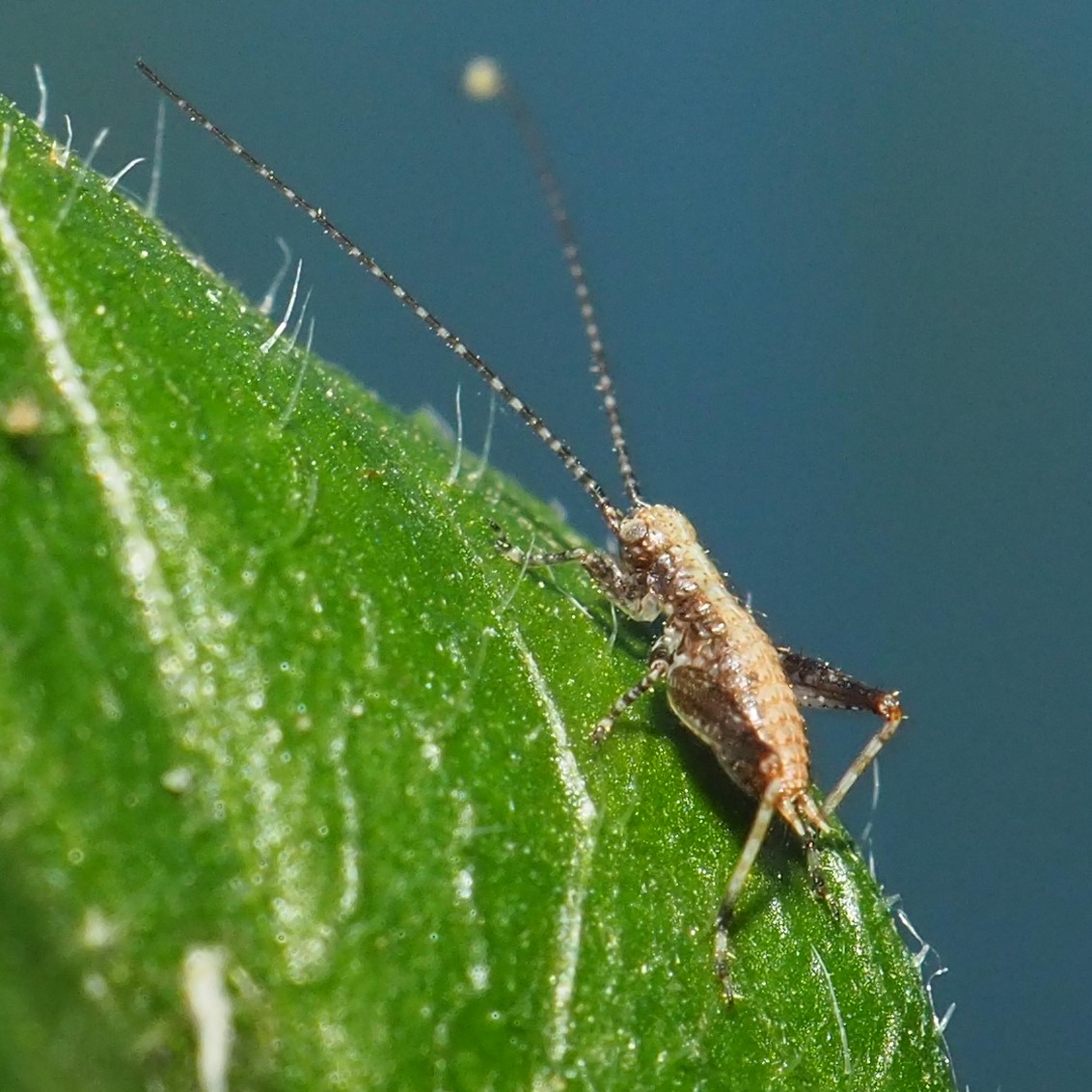
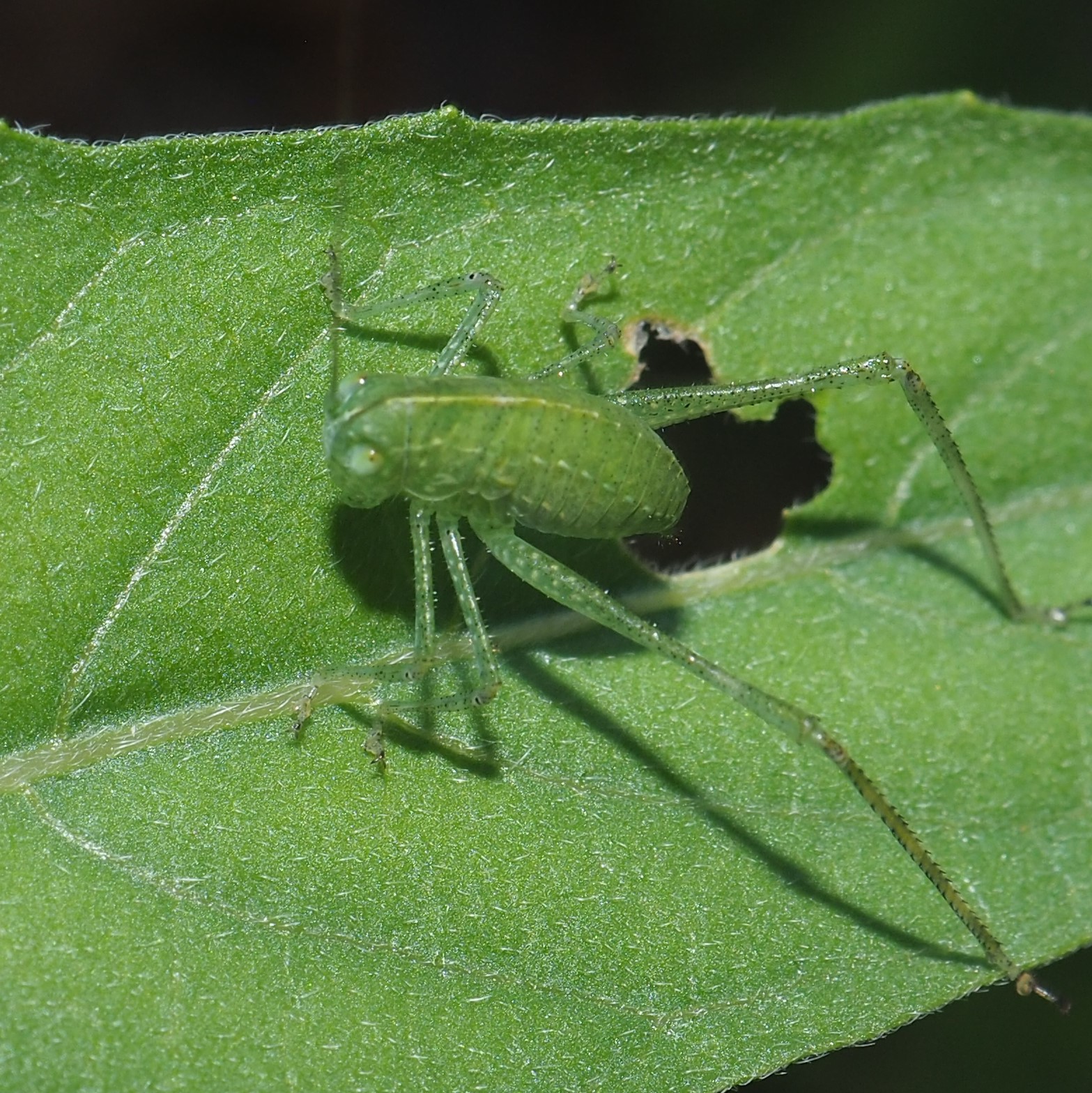
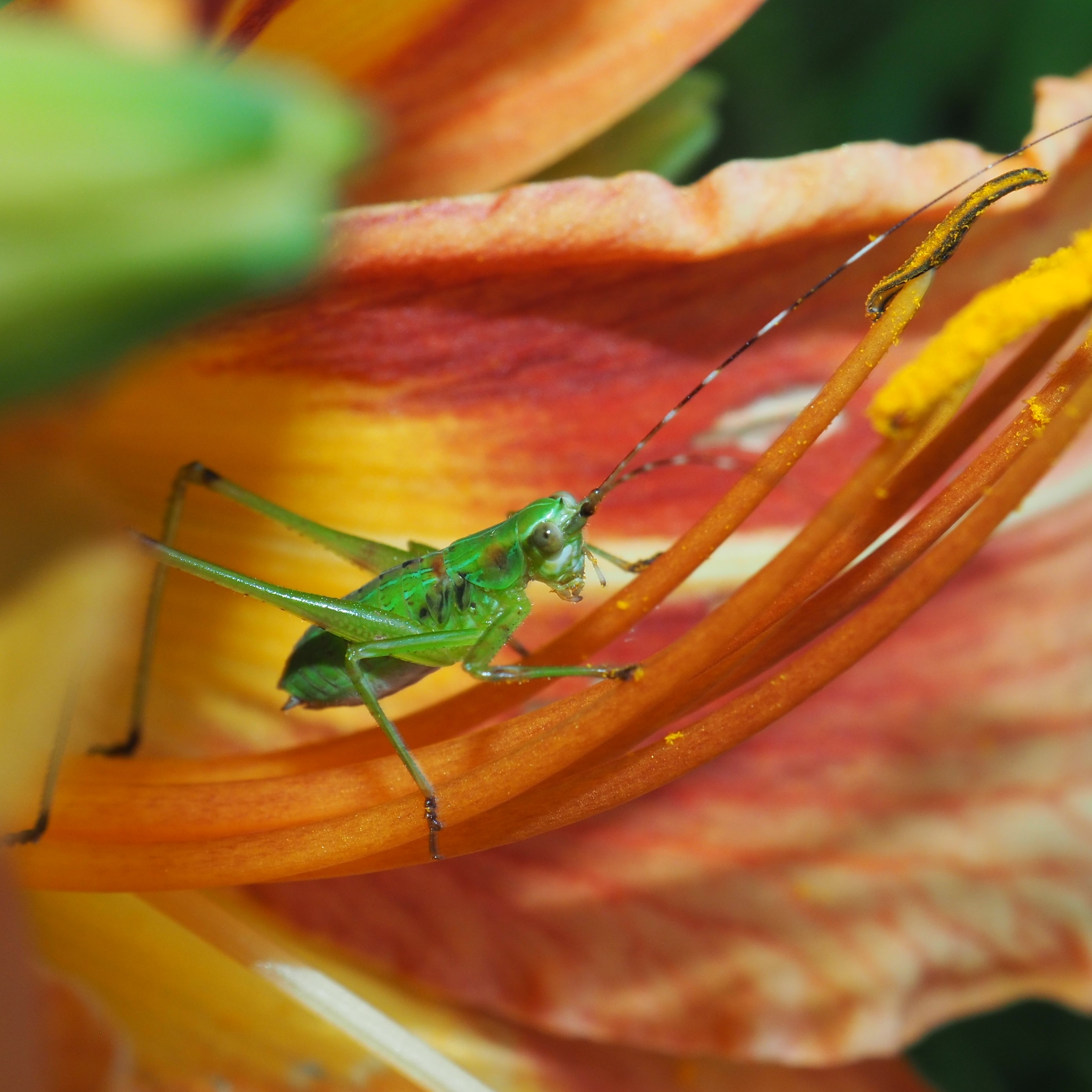
Let's look at a few flowers! Here is the Pond with its now well-established Water Lily plants, Flower, and Water Lettuces. The latter have long fine thickly grown roots that protect baby Fish and eggs from the parents and other Fishes. Next, one blossom amid Lily pads and intricate shadow play. Then, some of the Roadside Lilies that adorn the ways in many countries.
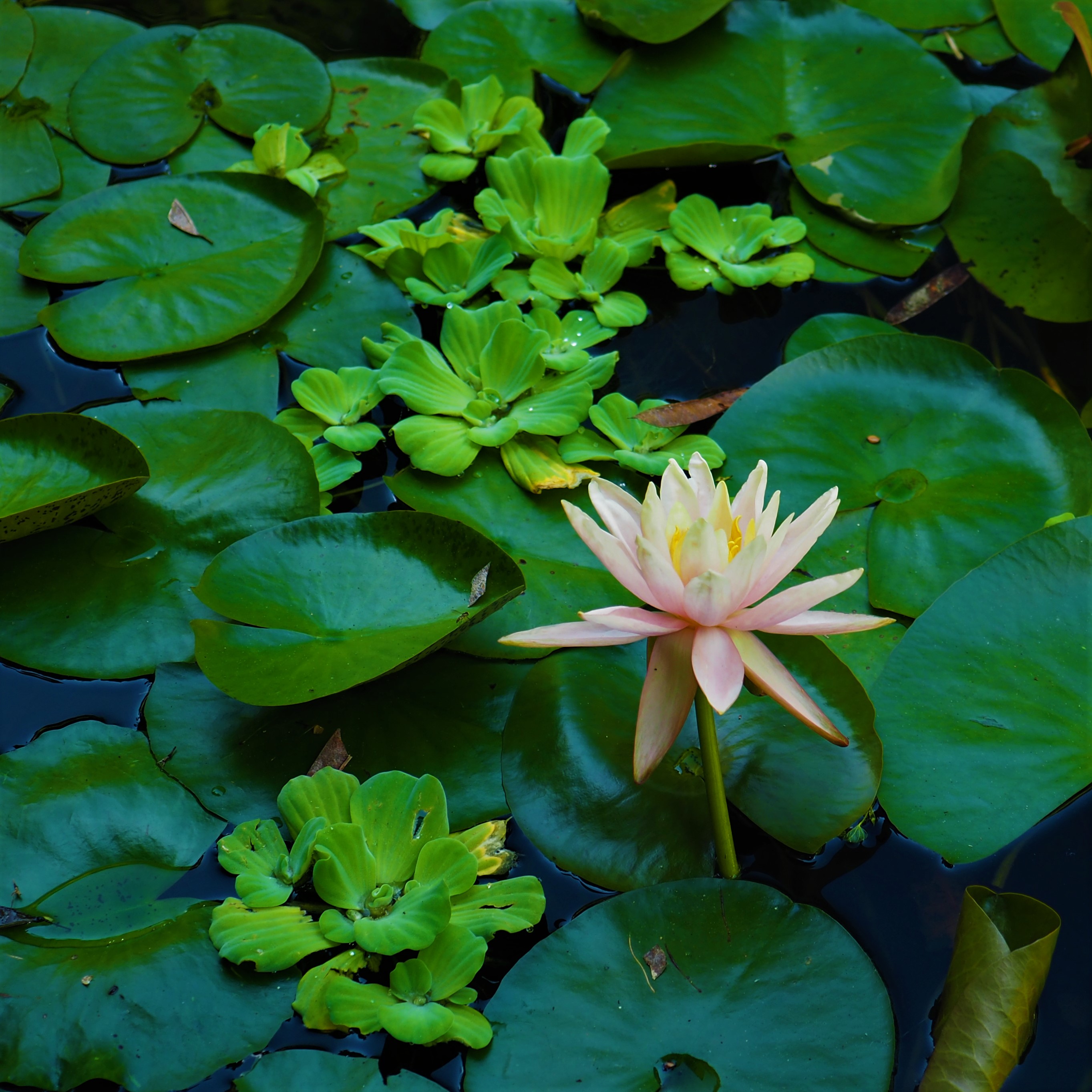
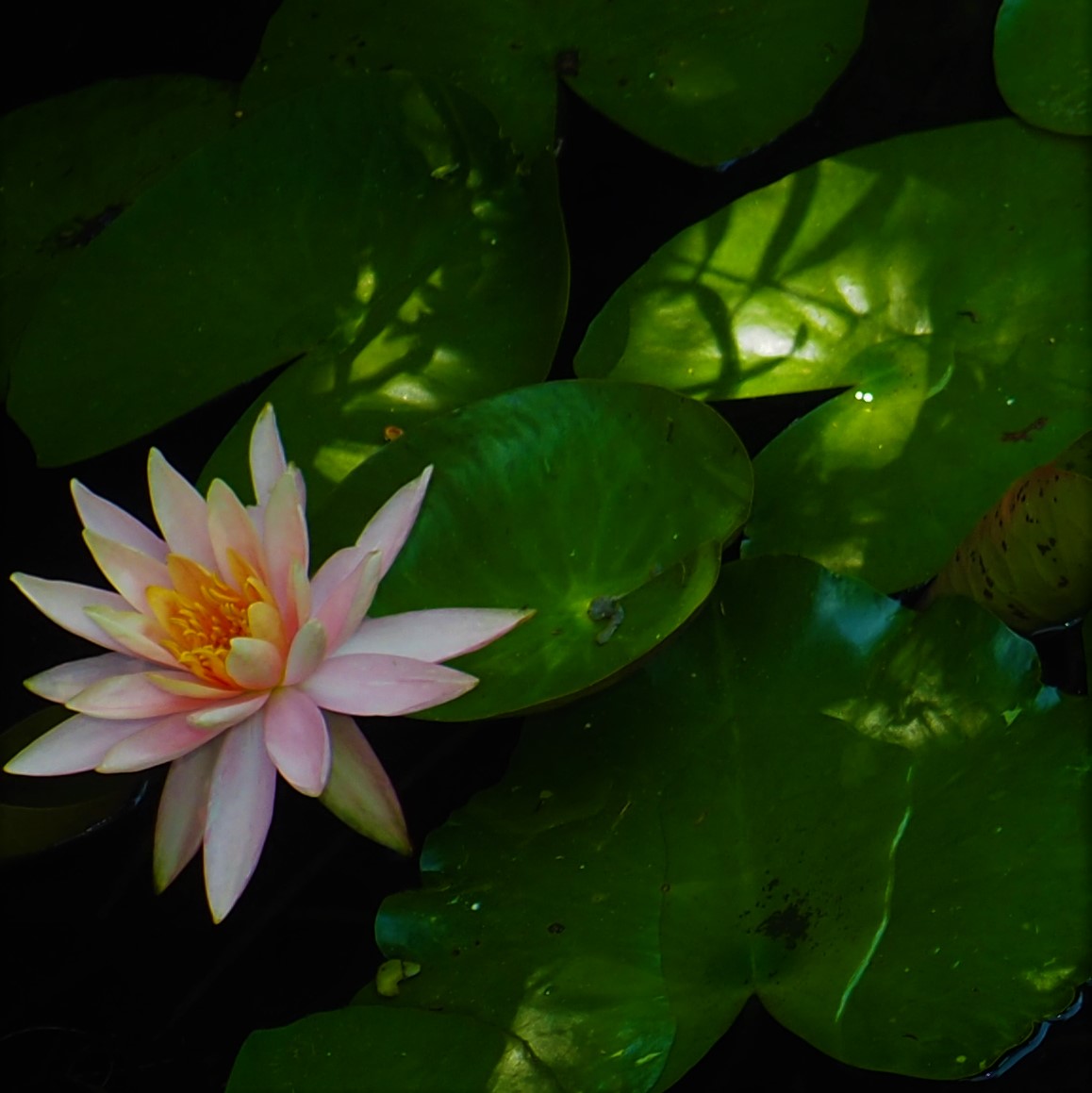
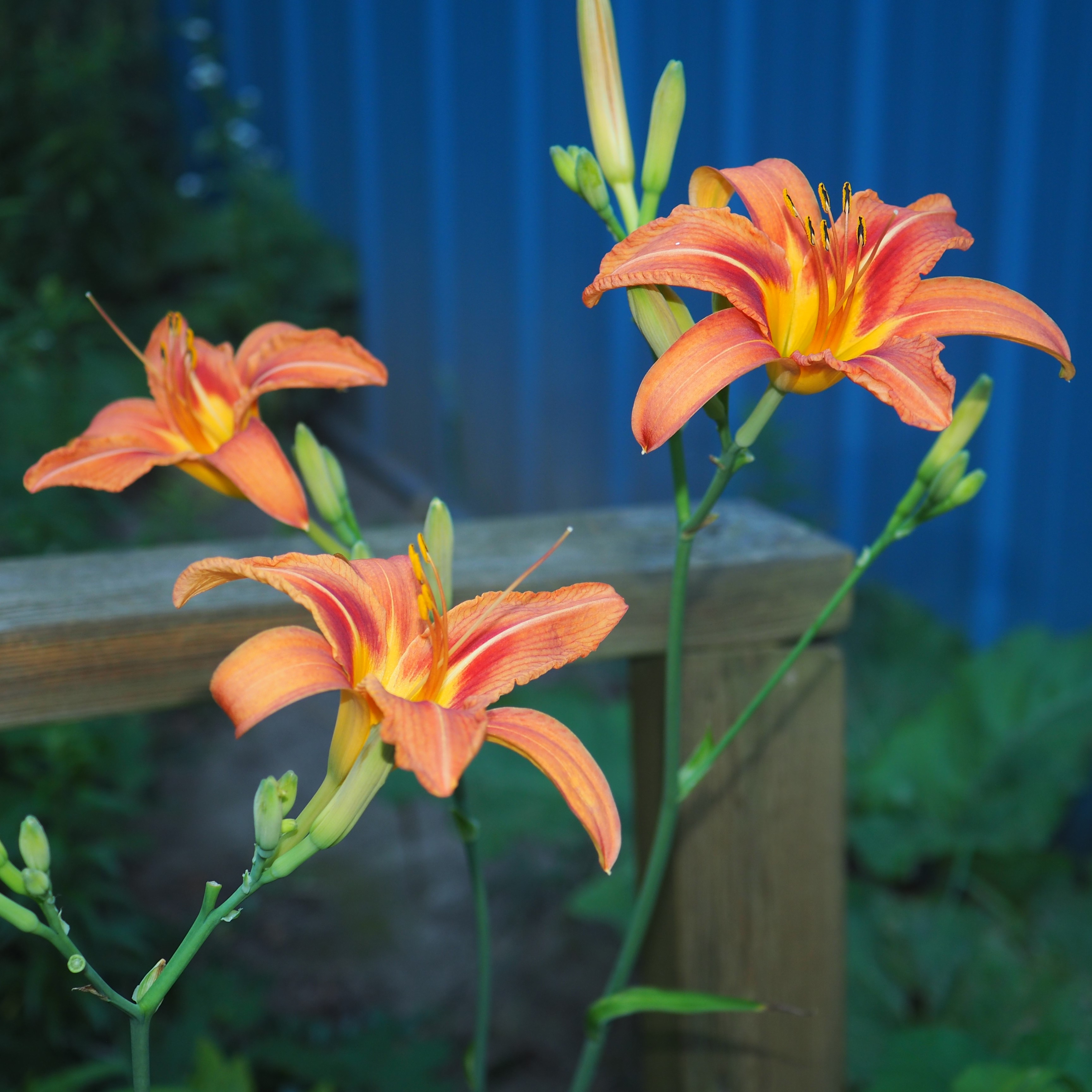
Here are some of the little flowers that are so lovely up close. Spiderworts, Deptford Pinks, and even a group of the Pinks shining out of the shade.
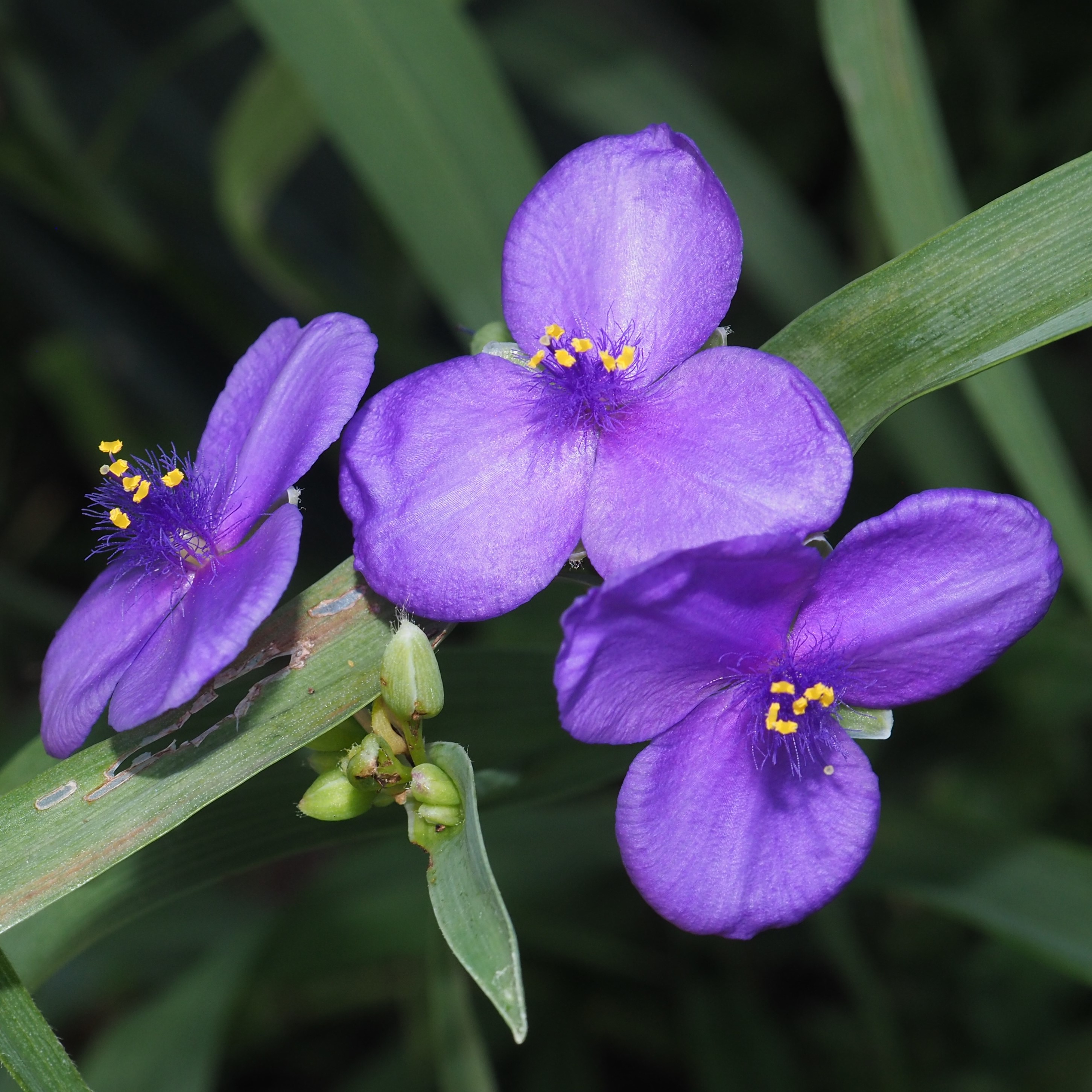
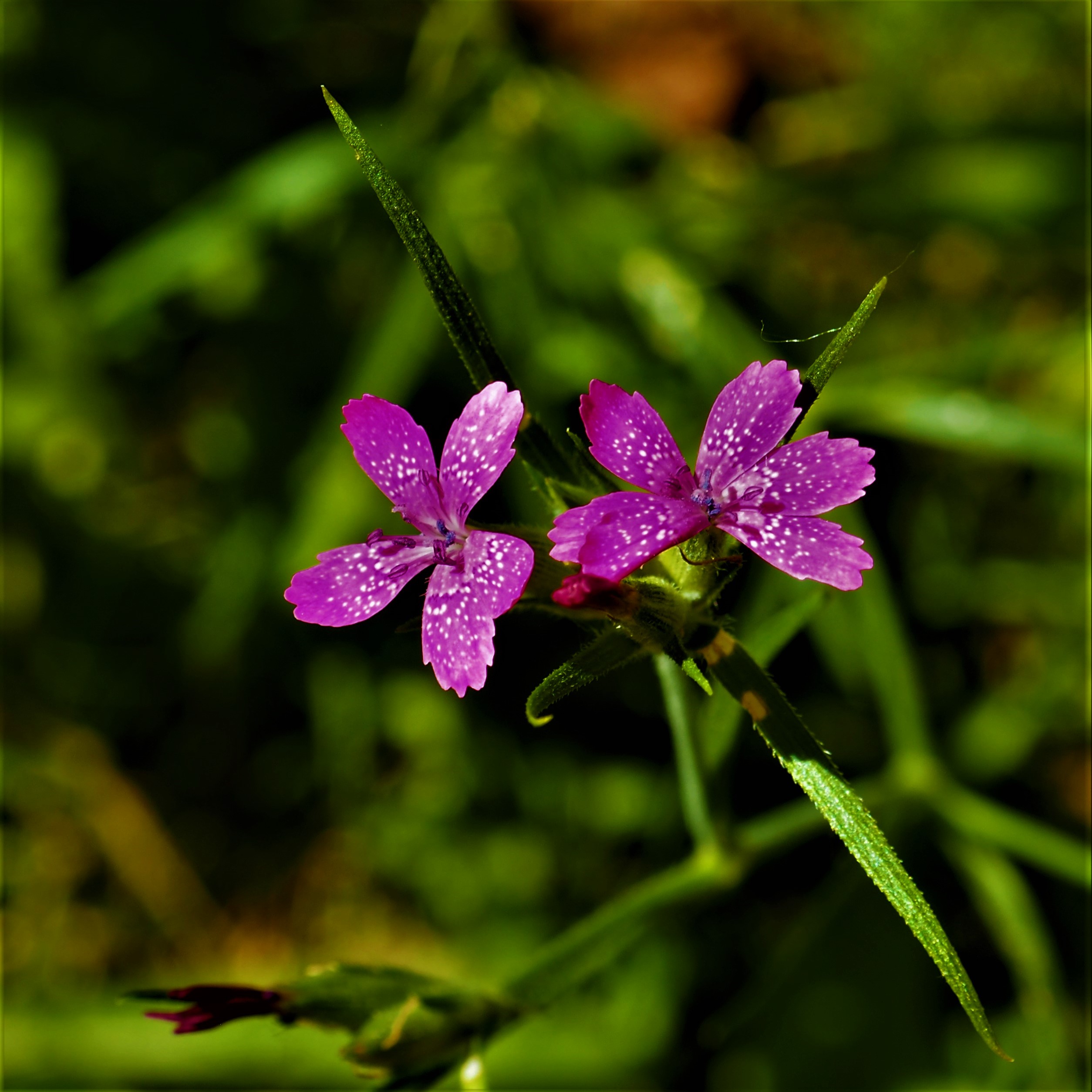
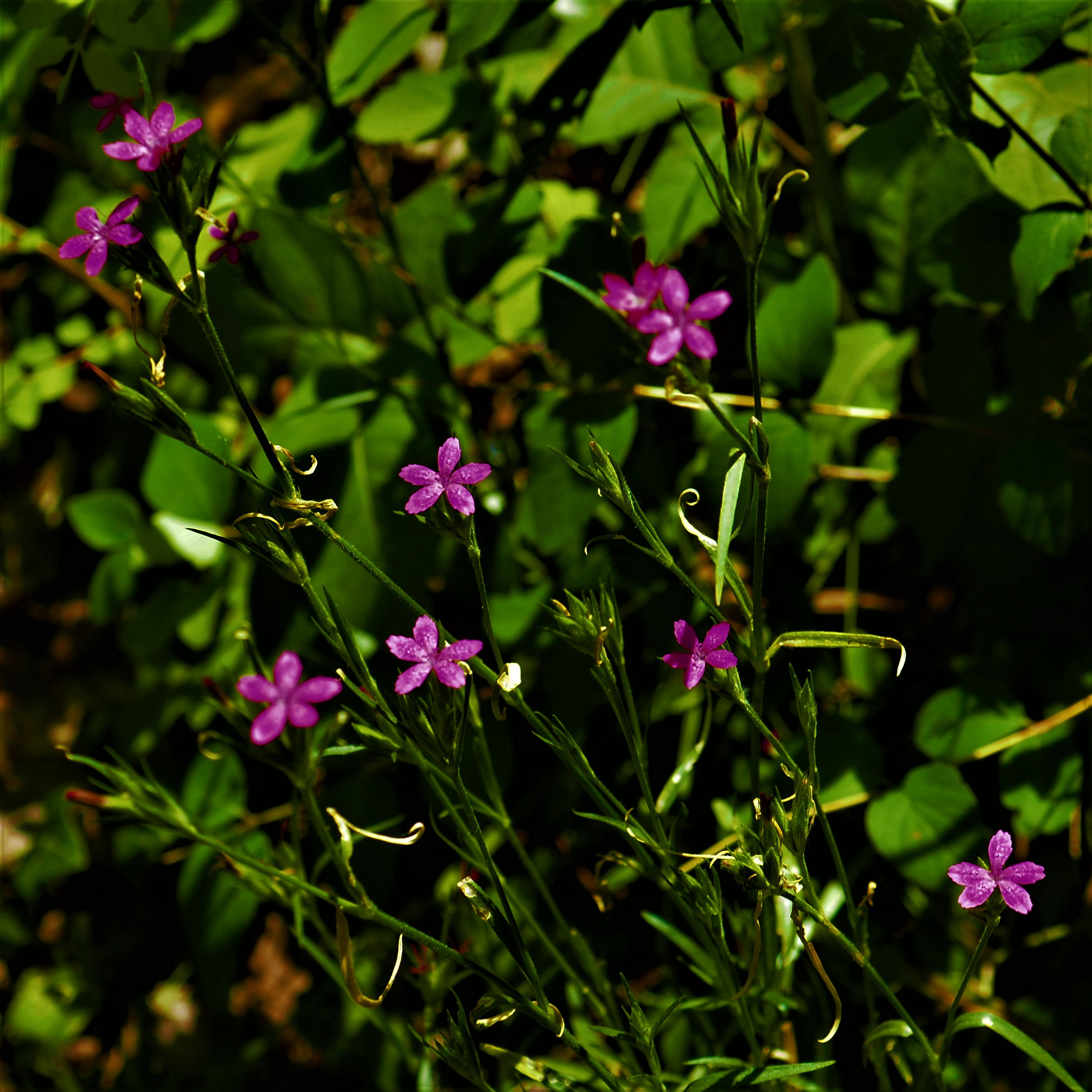
Buds. The Trumpetvines are getting ready to smack anyone who walks under them in the face. The Raspberries are daily raising theim momentum. Yesterday we had one cup of berries and I hope to get two cups in a couple of days. And the Zinnias that I planted several weeks ago are now budding up. Hopefully, the butterflies will reward us by visiting.
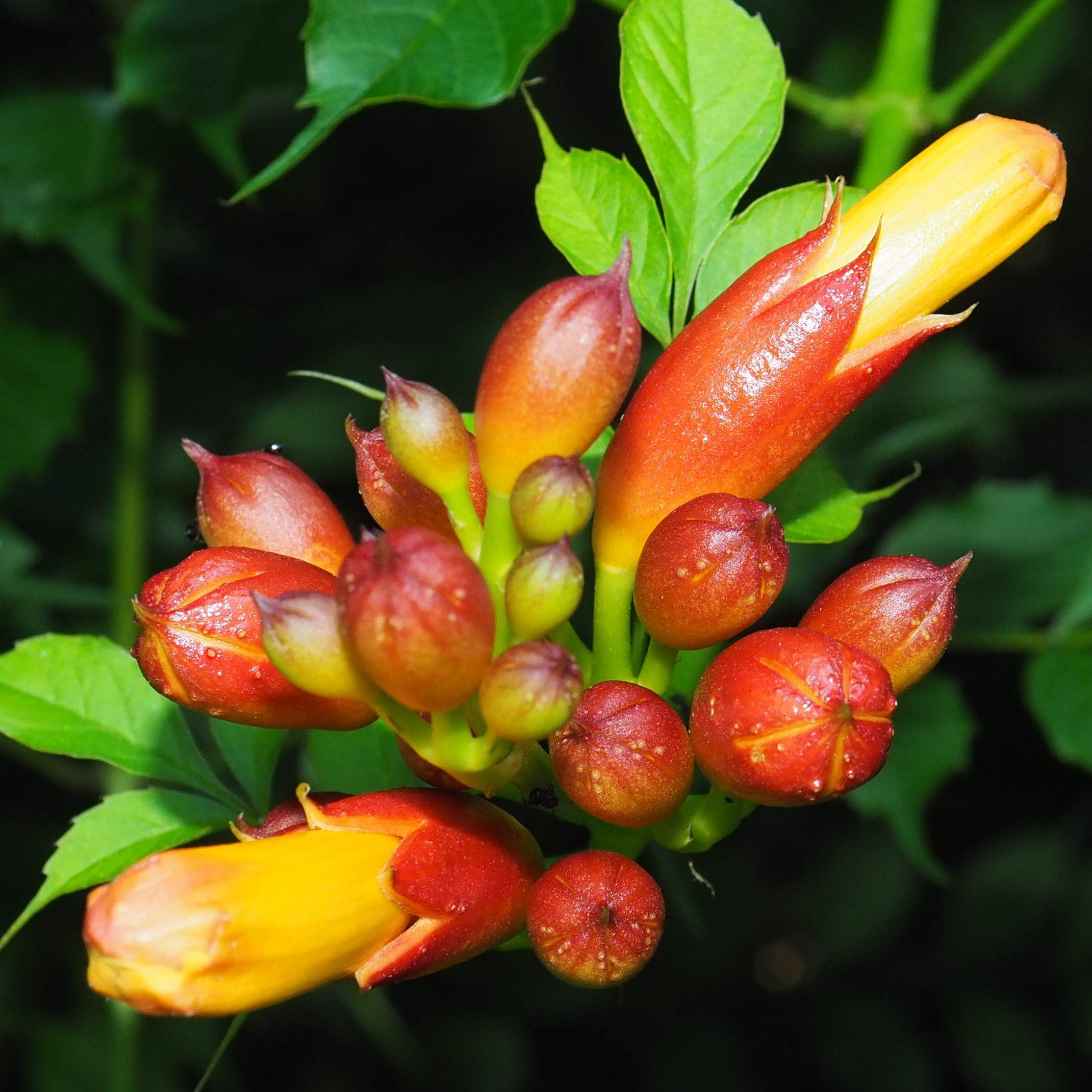
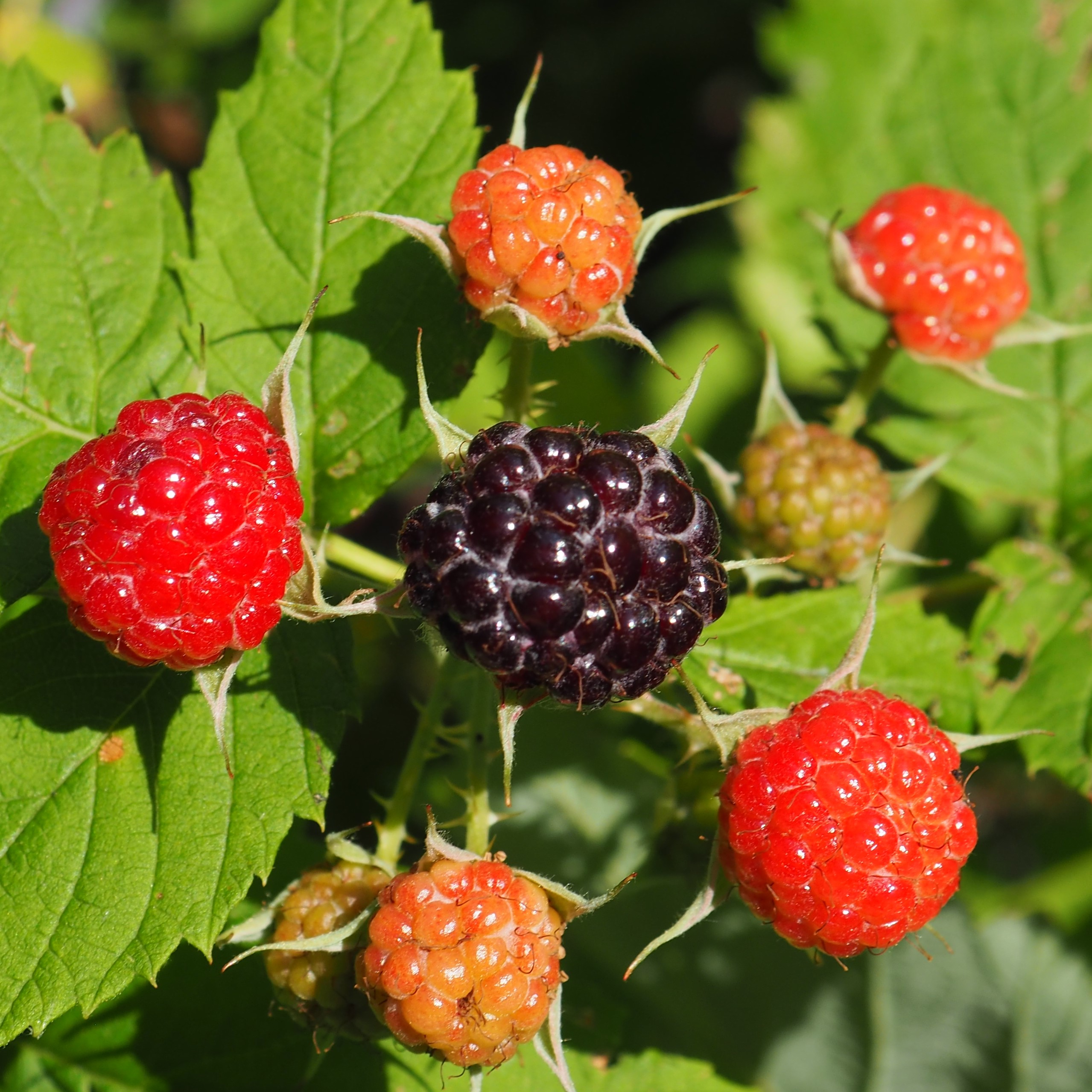

Here are a few Spiders. This first one is probably a Social Cobweb Spider. Second is a little Grass Spider in its sheet web that she uses to dart in and out from - sort of a hunting blind. Third shows her with a Leafhopper piece of prey.
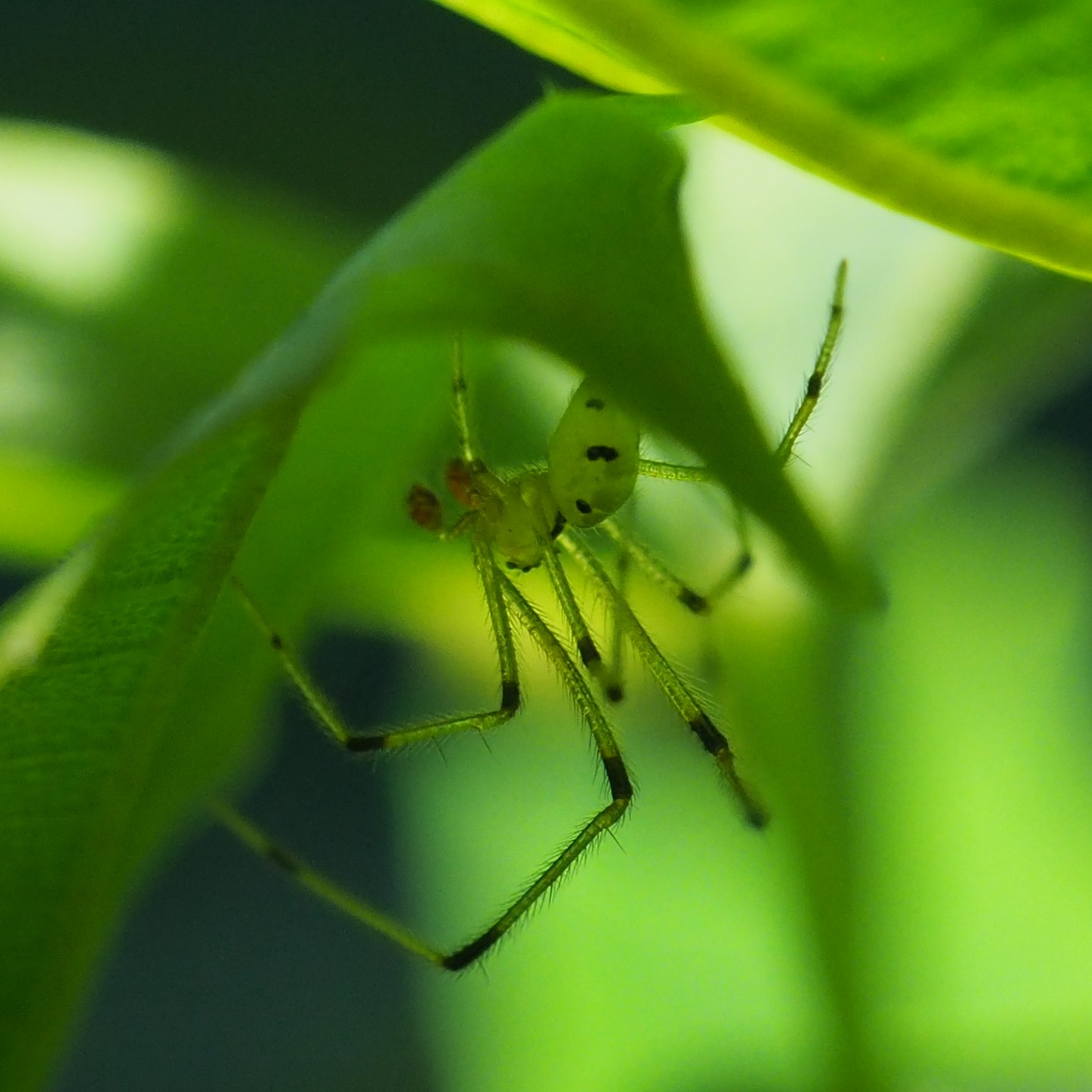
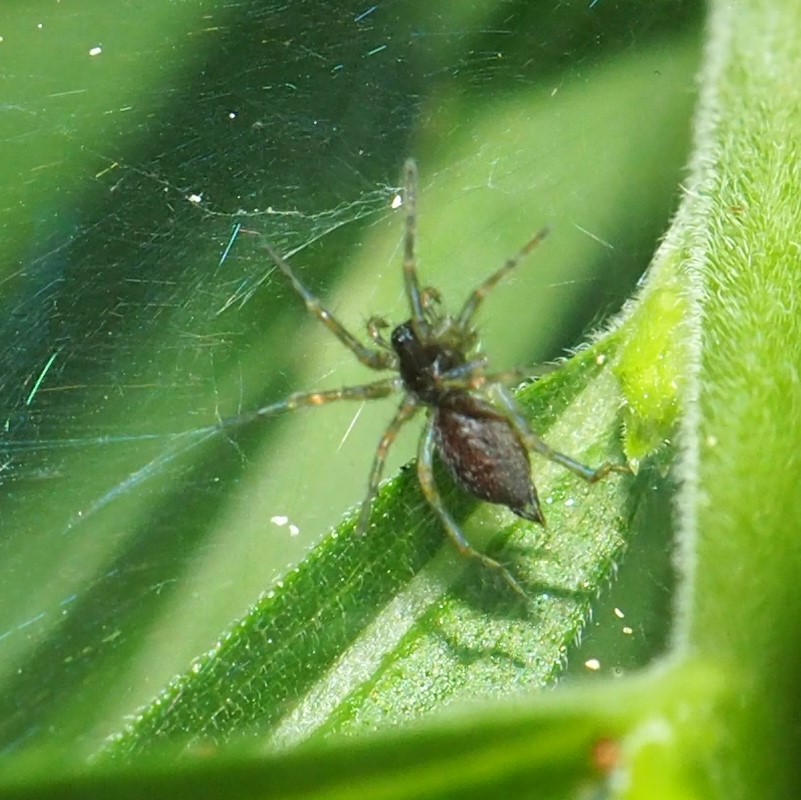

Here are a few very little spiders. The first one was examining my arm. Third must be a Mite. It was a very fast runner but not a whirligig like the one you saw a few weeks ago.
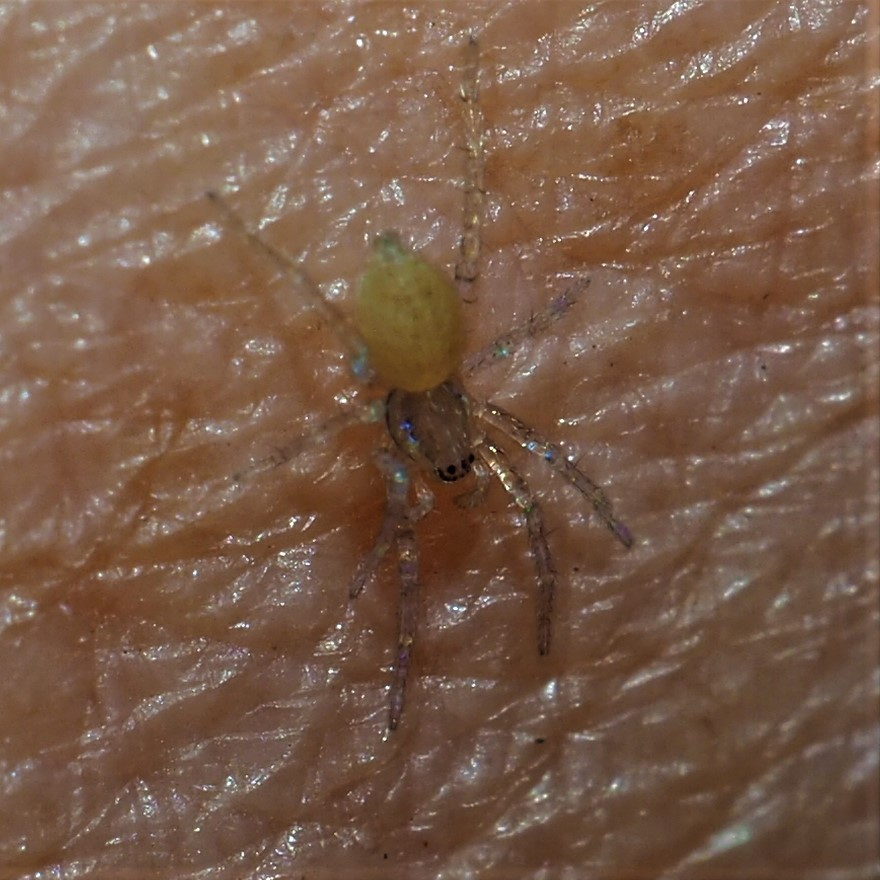
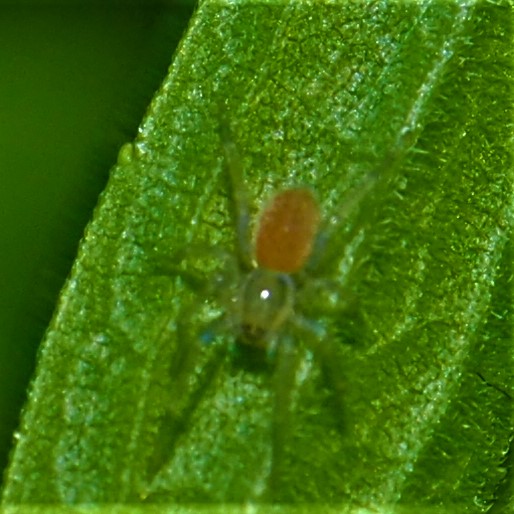
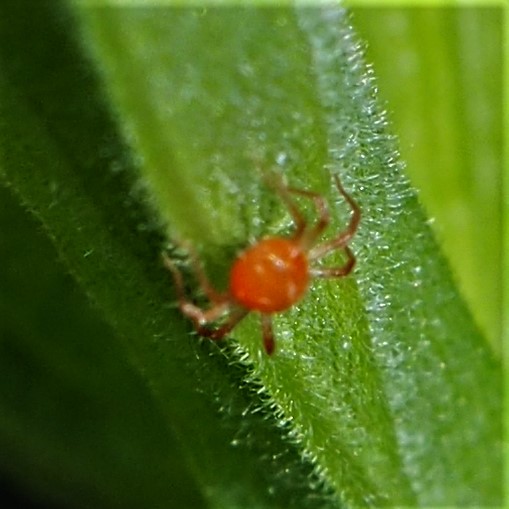
There are a lot of little Cobweb Spiders out there but so many of them look alike that I got sloppy about photographing them. Same for the Harvestmen. Many of the spiders have already begun to spread out in the weeds. I promise to do better for you Arachnophiles next week. But - the Wasps were diverse, photogenic, and interesting.
Here is a lovely little wasp with a big head and a fairly skinny abdomen. Second looks like genus Polistes (paper wasps) but is different from the usual Dark Paper Wasps. Third has only 3 wings. It's different from the other ones this week.
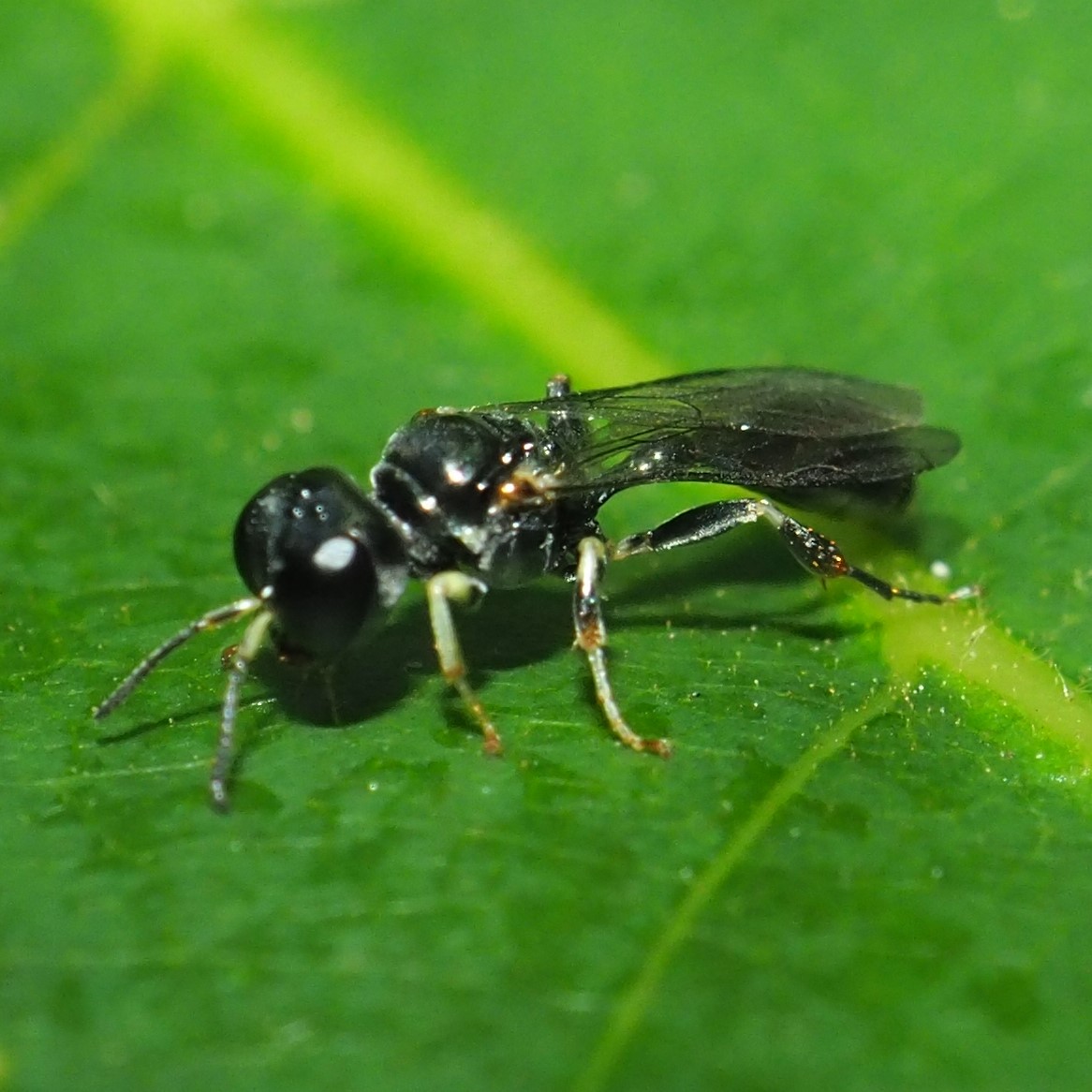
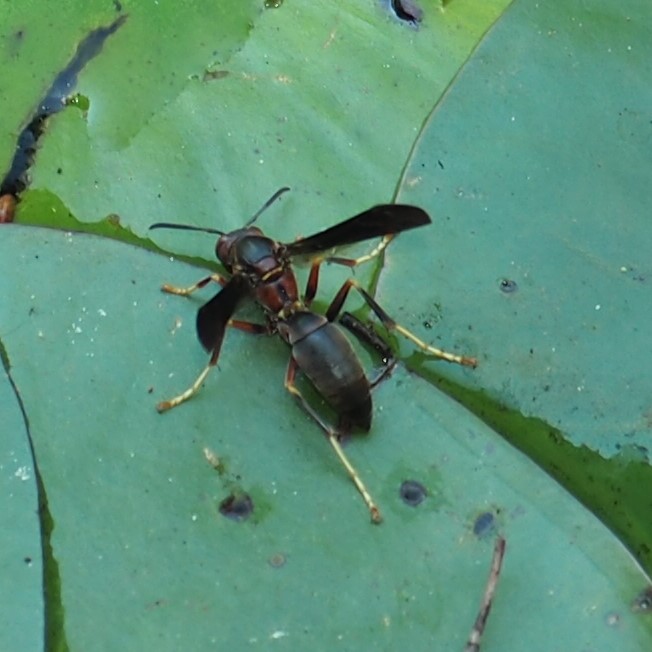
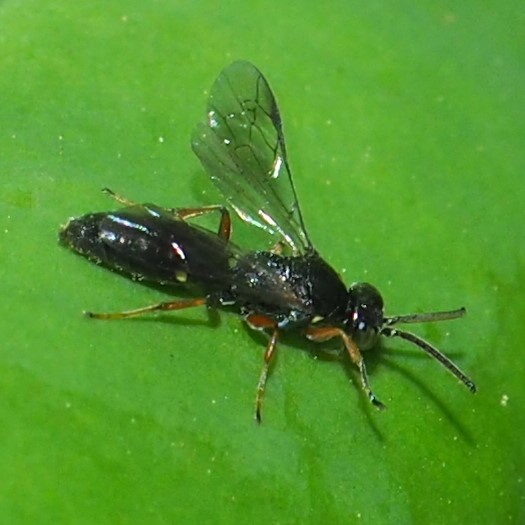
We saw many kinds of Ichneumonid Wasps. Here are two. I'm not very good at naming them and in fact if an Ichneumonid is a male it won't have the ovipositor that distinguishes the females. So both of the ones I'm showing you here as Ichneumonids are females. This third one is probably NOT an Ichneumonid, but who knows?
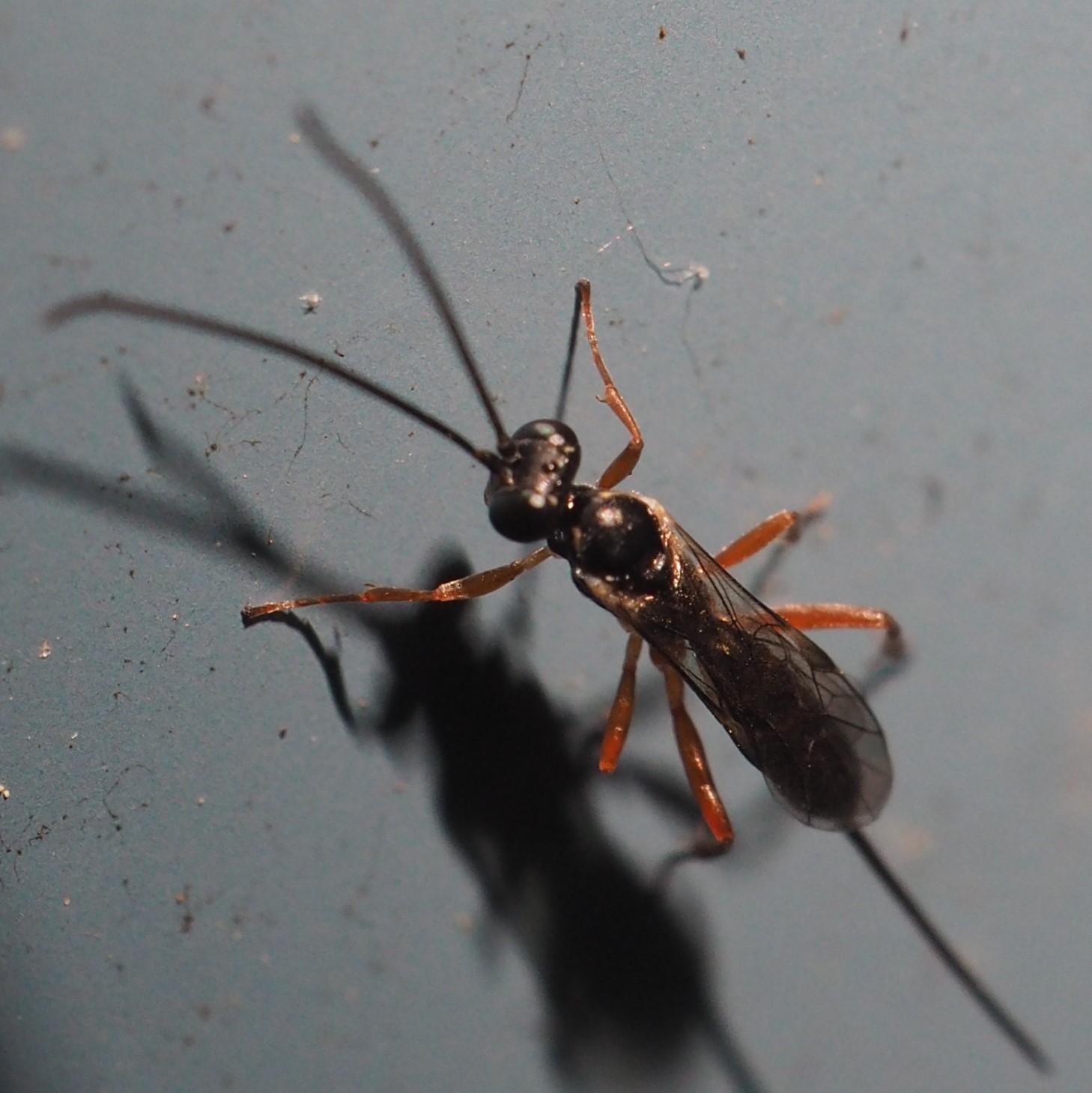
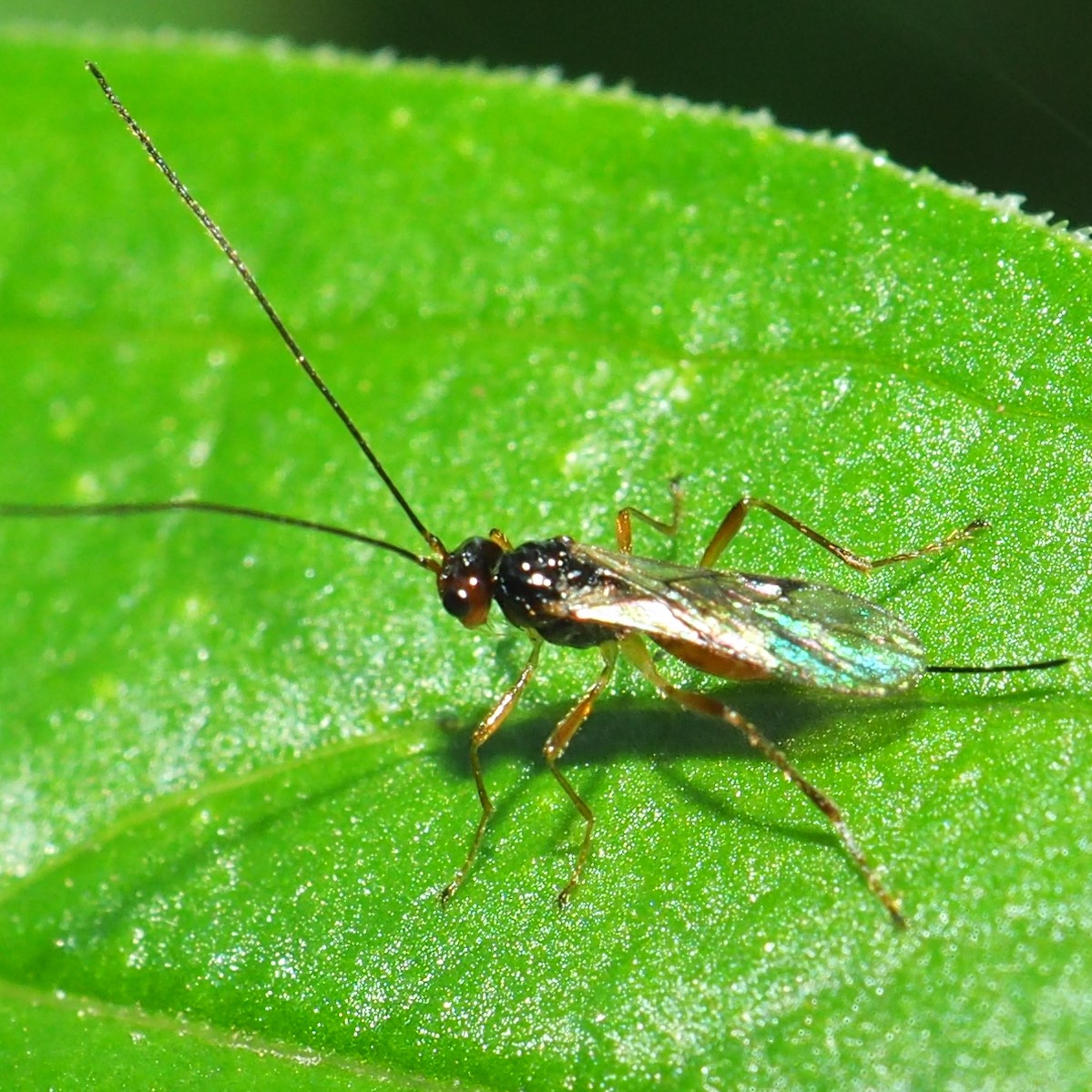
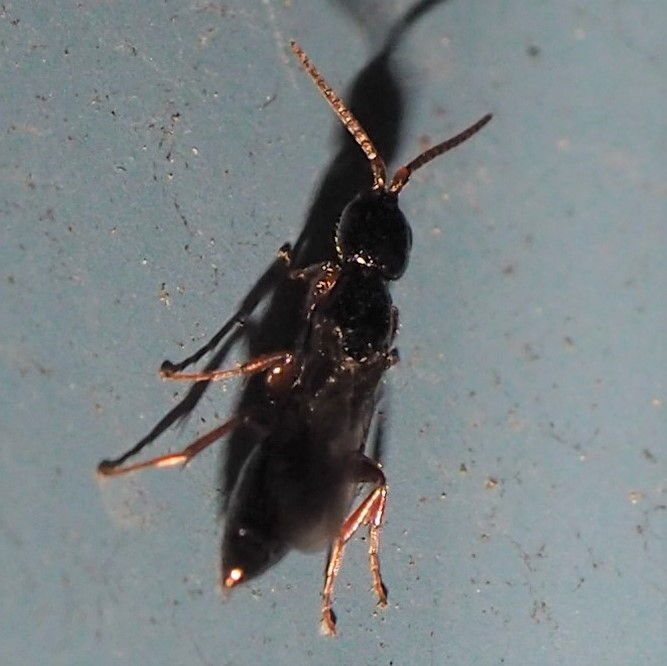
Last week I showed you a pretty little Wasp that I'd confused for an Ant. That was Encyrtus aurantii, and I didn't remember seeing it before. But in going through my pictures I found that it had visited here several times. And this week I saw it many times. It was running about on top of a Redbud sapling. It did look sort of like an Ant. But it was indeed E. aurantii. In fact, the first two pictures in this paragraph were taken on July 2, and the third on July 3. In fact in fact, I've now spotted them on more than one Redbud plant. Actually it goes deeper. On July 2, I also saw another unusual Wasp, which iNat told me was a Chalcidoid Wasp. Now the reason I said it goes deeper is that the Encyrtids are a branch of the Chalcidoids. Picture three here is a Chalcidoid, though likely NOT an Encyrtid.
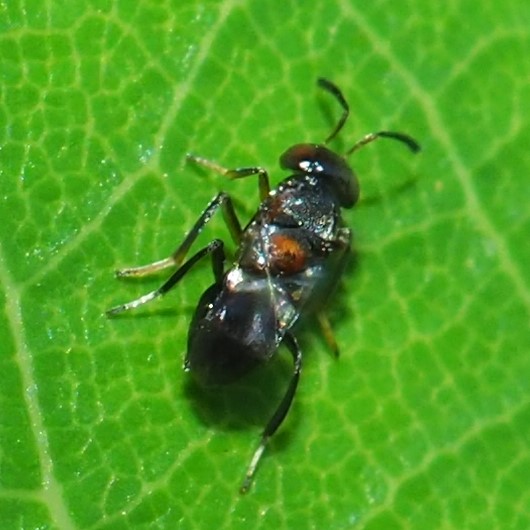
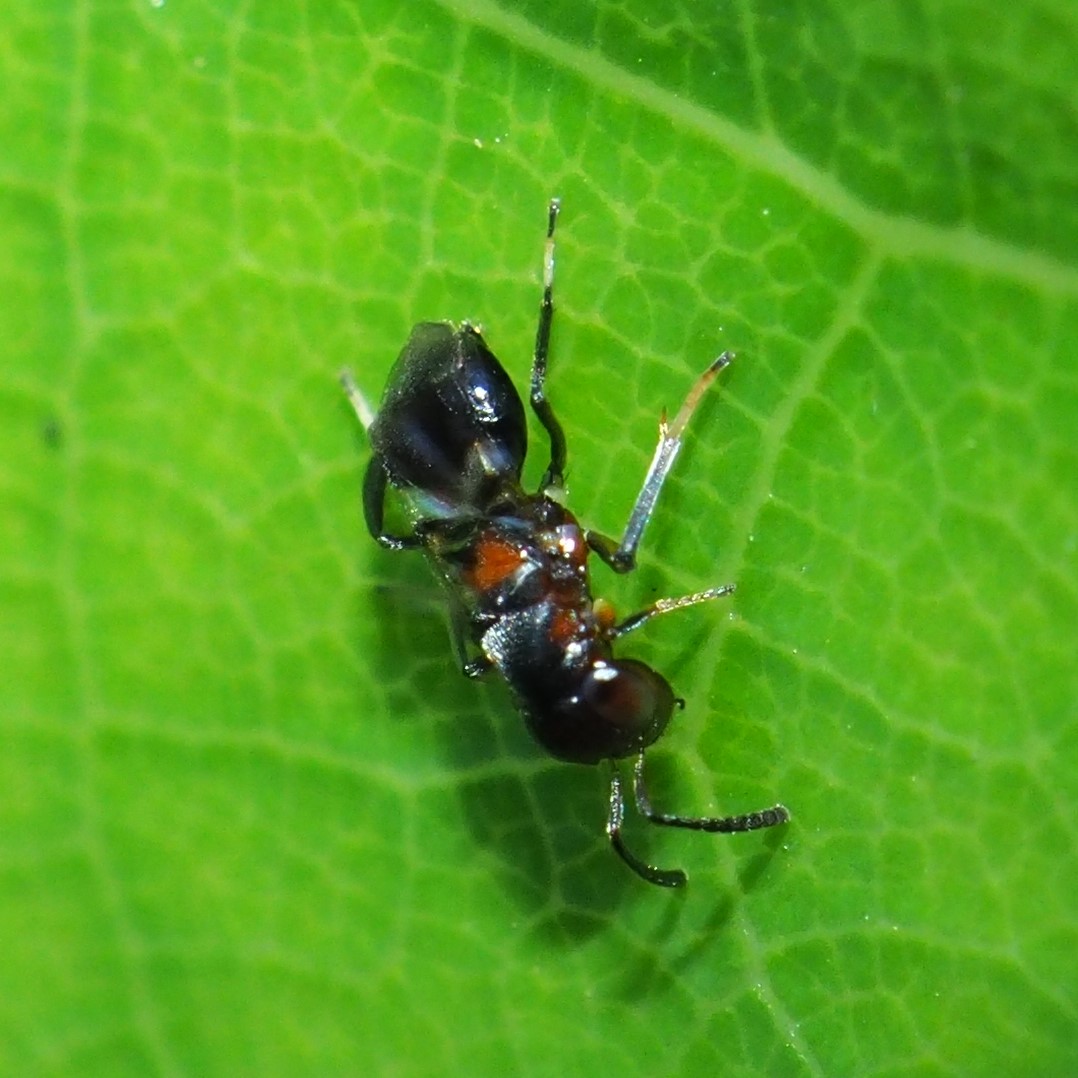
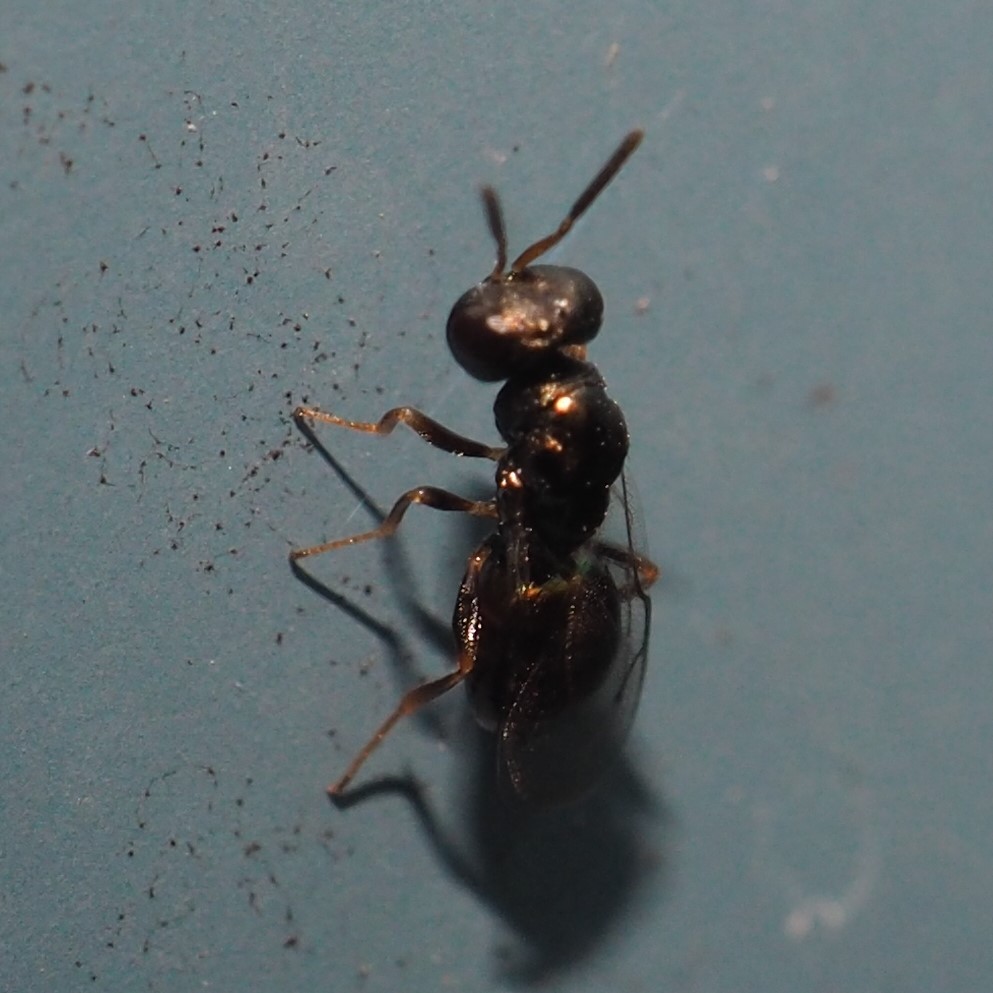
Well, it has been a lovely week if you like standing and taking pictures of anything that moves or doesn't move enough to evade you. I'm so thankful to have a yard rich with life. But I'll be very glad to be able to invite YOU in for a cup of something and a round of laughter as we assess the world around us. It's already been March, April, May, and June. Just send me an email if you'd like to share a Zoom session! We'll make it!
Love, Martha
Back to June 28, 2020
Forward to July 12, 2020
Back to main menu
copyright Martha O'Kennon 2020






























































































































